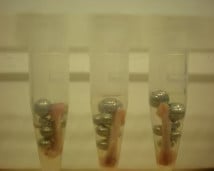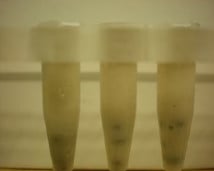Publications that involve processing of small organisms, such as insects. For experiments in which isolated tissues were processed, visit the “Other Small Animal Tissue” page.
Crustaceans
2474232
crustacean-s
1
apa
50
date
desc
1
3261
https://www.nextadvance.com/wp-content/plugins/zotpress/
%7B%22status%22%3A%22success%22%2C%22updateneeded%22%3Afalse%2C%22instance%22%3Afalse%2C%22meta%22%3A%7B%22request_last%22%3A0%2C%22request_next%22%3A0%2C%22used_cache%22%3Atrue%7D%2C%22data%22%3A%5B%7B%22key%22%3A%22JE595IW5%22%2C%22library%22%3A%7B%22id%22%3A2474232%7D%2C%22meta%22%3A%7B%22creatorSummary%22%3A%22Buck%20et%20al.%22%2C%22parsedDate%22%3A%222011%22%2C%22numChildren%22%3A0%7D%2C%22bib%22%3A%22%26lt%3Bdiv%20class%3D%26quot%3Bcsl-bib-body%26quot%3B%20style%3D%26quot%3Bline-height%3A%202%3B%20padding-left%3A%201em%3B%20text-indent%3A-1em%3B%26quot%3B%26gt%3B%5Cn%20%20%26lt%3Bdiv%20class%3D%26quot%3Bcsl-entry%26quot%3B%26gt%3BBuck%2C%20J.%20C.%2C%20Truong%2C%20L.%2C%20%26amp%3B%20Blaustein%2C%20A.%20R.%20%282011%29.%20Predation%20by%20zooplankton%20on%20Batrachochytrium%20dendrobatidis%3A%20biological%20control%20of%20the%20deadly%20amphibian%20chytrid%20fungus%3F%20%26lt%3Bi%26gt%3BBiodiversity%20and%20Conservation%26lt%3B%5C%2Fi%26gt%3B%2C%20%26lt%3Bi%26gt%3B20%26lt%3B%5C%2Fi%26gt%3B%2814%29%2C%203549%26%23x2013%3B3553.%20%26lt%3Ba%20class%3D%26%23039%3Bzp-DOIURL%26%23039%3B%20href%3D%26%23039%3Bhttps%3A%5C%2F%5C%2Fdoi.org%5C%2F10.1007%5C%2Fs10531-011-0147-4%26%23039%3B%26gt%3Bhttps%3A%5C%2F%5C%2Fdoi.org%5C%2F10.1007%5C%2Fs10531-011-0147-4%26lt%3B%5C%2Fa%26gt%3B%26lt%3B%5C%2Fdiv%26gt%3B%5Cn%26lt%3B%5C%2Fdiv%26gt%3B%22%2C%22data%22%3A%7B%22itemType%22%3A%22journalArticle%22%2C%22title%22%3A%22Predation%20by%20zooplankton%20on%20Batrachochytrium%20dendrobatidis%3A%20biological%20control%20of%20the%20deadly%20amphibian%20chytrid%20fungus%3F%22%2C%22creators%22%3A%5B%7B%22creatorType%22%3A%22author%22%2C%22firstName%22%3A%22Julia%20C.%22%2C%22lastName%22%3A%22Buck%22%7D%2C%7B%22creatorType%22%3A%22author%22%2C%22firstName%22%3A%22Lisa%22%2C%22lastName%22%3A%22Truong%22%7D%2C%7B%22creatorType%22%3A%22author%22%2C%22firstName%22%3A%22Andrew%20R.%22%2C%22lastName%22%3A%22Blaustein%22%7D%5D%2C%22abstractNote%22%3A%22%22%2C%22date%22%3A%2212%5C%2F2011%22%2C%22language%22%3A%22en%22%2C%22DOI%22%3A%2210.1007%5C%2Fs10531-011-0147-4%22%2C%22ISSN%22%3A%220960-3115%2C%201572-9710%22%2C%22url%22%3A%22http%3A%5C%2F%5C%2Flink.springer.com%5C%2F10.1007%5C%2Fs10531-011-0147-4%22%2C%22collections%22%3A%5B%22M2MNG549%22%5D%2C%22dateModified%22%3A%222015-07-09T13%3A39%3A44Z%22%2C%22tags%22%3A%5B%7B%22tag%22%3A%22Crustacean%22%7D%2C%7B%22tag%22%3A%22Crustacean-S%22%7D%2C%7B%22tag%22%3A%22DNA%22%7D%2C%7B%22tag%22%3A%22Daphnia%20magna%22%7D%2C%7B%22tag%22%3A%22Molecules%22%7D%2C%7B%22tag%22%3A%22Plankton%22%7D%2C%7B%22tag%22%3A%22Small%20organisms%22%7D%5D%7D%7D%5D%7D
Buck, J. C., Truong, L., & Blaustein, A. R. (2011). Predation by zooplankton on Batrachochytrium dendrobatidis: biological control of the deadly amphibian chytrid fungus? Biodiversity and Conservation, 20(14), 3549–3553. https://doi.org/10.1007/s10531-011-0147-4
Fish
2474232
fish-s
1
apa
50
date
desc
1
3261
https://www.nextadvance.com/wp-content/plugins/zotpress/
%7B%22status%22%3A%22success%22%2C%22updateneeded%22%3Afalse%2C%22instance%22%3Afalse%2C%22meta%22%3A%7B%22request_last%22%3A0%2C%22request_next%22%3A0%2C%22used_cache%22%3Atrue%7D%2C%22data%22%3A%5B%7B%22key%22%3A%223FL5TVV7%22%2C%22library%22%3A%7B%22id%22%3A2474232%7D%2C%22meta%22%3A%7B%22creatorSummary%22%3A%22Sarasamma%20et%20al.%22%2C%22parsedDate%22%3A%222018-12-03%22%2C%22numChildren%22%3A1%7D%2C%22bib%22%3A%22%26lt%3Bdiv%20class%3D%26quot%3Bcsl-bib-body%26quot%3B%20style%3D%26quot%3Bline-height%3A%202%3B%20padding-left%3A%201em%3B%20text-indent%3A-1em%3B%26quot%3B%26gt%3B%5Cn%20%20%26lt%3Bdiv%20class%3D%26quot%3Bcsl-entry%26quot%3B%26gt%3BSarasamma%2C%20S.%2C%20Audira%2C%20G.%2C%20Juniardi%2C%20S.%2C%20Sampurna%2C%20B.%2C%20Lai%2C%20Y.-H.%2C%20Hao%2C%20E.%2C%20Chen%2C%20J.-R.%2C%20%26amp%3B%20Hsiao%2C%20C.-D.%20%282018%29.%20Evaluation%20of%20the%20Effects%20of%20Carbon%2060%20Nanoparticle%20Exposure%20to%20Adult%20Zebrafish%3A%20A%20Behavioral%20and%20Biochemical%20Approach%20to%20Elucidate%20the%20Mechanism%20of%20Toxicity.%20%26lt%3Bi%26gt%3BInternational%20Journal%20of%20Molecular%20Sciences%26lt%3B%5C%2Fi%26gt%3B%2C%20%26lt%3Bi%26gt%3B19%26lt%3B%5C%2Fi%26gt%3B%2812%29%2C%203853.%20%26lt%3Ba%20class%3D%26%23039%3Bzp-DOIURL%26%23039%3B%20href%3D%26%23039%3Bhttps%3A%5C%2F%5C%2Fdoi.org%5C%2F10.3390%5C%2Fijms19123853%26%23039%3B%26gt%3Bhttps%3A%5C%2F%5C%2Fdoi.org%5C%2F10.3390%5C%2Fijms19123853%26lt%3B%5C%2Fa%26gt%3B%26lt%3B%5C%2Fdiv%26gt%3B%5Cn%26lt%3B%5C%2Fdiv%26gt%3B%22%2C%22data%22%3A%7B%22itemType%22%3A%22journalArticle%22%2C%22title%22%3A%22Evaluation%20of%20the%20Effects%20of%20Carbon%2060%20Nanoparticle%20Exposure%20to%20Adult%20Zebrafish%3A%20A%20Behavioral%20and%20Biochemical%20Approach%20to%20Elucidate%20the%20Mechanism%20of%20Toxicity%22%2C%22creators%22%3A%5B%7B%22creatorType%22%3A%22author%22%2C%22firstName%22%3A%22Sreeja%22%2C%22lastName%22%3A%22Sarasamma%22%7D%2C%7B%22creatorType%22%3A%22author%22%2C%22firstName%22%3A%22Gilbert%22%2C%22lastName%22%3A%22Audira%22%7D%2C%7B%22creatorType%22%3A%22author%22%2C%22firstName%22%3A%22Stevhen%22%2C%22lastName%22%3A%22Juniardi%22%7D%2C%7B%22creatorType%22%3A%22author%22%2C%22firstName%22%3A%22Bonifasius%22%2C%22lastName%22%3A%22Sampurna%22%7D%2C%7B%22creatorType%22%3A%22author%22%2C%22firstName%22%3A%22Yu-Heng%22%2C%22lastName%22%3A%22Lai%22%7D%2C%7B%22creatorType%22%3A%22author%22%2C%22firstName%22%3A%22Erwei%22%2C%22lastName%22%3A%22Hao%22%7D%2C%7B%22creatorType%22%3A%22author%22%2C%22firstName%22%3A%22Jung-Ren%22%2C%22lastName%22%3A%22Chen%22%7D%2C%7B%22creatorType%22%3A%22author%22%2C%22firstName%22%3A%22Chung-Der%22%2C%22lastName%22%3A%22Hsiao%22%7D%5D%2C%22abstractNote%22%3A%22There%20is%20a%20growing%20concern%20for%20the%20potential%20toxicity%20of%20engineered%20nanomaterials%20that%20have%20made%20their%20way%20into%20virtually%20all%20novel%20applications%20in%20the%20electronics%2C%20healthcare%2C%20cosmetics%2C%20technology%2C%20and%20engineering%20industries%2C%20and%20in%20particular%2C%20biomedical%20products.%20However%2C%20the%20potential%20toxicity%20of%20carbon%2060%20%28C60%29%20at%20the%20behavioral%20level%20has%20not%20been%20properly%20evaluated.%20In%20this%20study%2C%20we%20used%20idTracker%2C%20a%20multitracking%20algorithm%20to%20quantitatively%20assess%20behavioral%20toxicity%20induced%20by%20C60%20nanoparticles%20%28C60%20NPs%29%20in%20adult%20zebrafish.%20We%20demonstrated%20that%20locomotion%2C%20novel%20tank%20exploration%2C%20aggression%2C%20shoaling%2C%20and%20color%20preference%20activities%20of%20the%20C60%20NPs-treated%20fish%20was%20significantly%20reduced.%20In%20addition%2C%20the%20C60%20NPs-treated%20fish%20also%20displayed%20dysregulation%20of%20the%20circadian%20rhythm%20by%20showing%20lower%20locomotion%20activities%20in%20both%20day%20and%20night%20cycles.%20The%20biochemical%20results%20showed%20that%20C60%20NPs%20exposure%20at%20low%20concentration%20induced%20oxidative%20stress%20and%20DNA%20damage%2C%20reduced%20anti-oxidative%20capacity%20and%20ATP%20%28adenosine%20triphosphate%29%20levels%2C%20and%20induced%20stress-associated%20hormones%2C%20hypoxia%2C%20as%20well%20as%20inflammation%20marker%20upregulation%20in%20muscle%20and%20gill%20tissues.%20Together%2C%20this%20work%2C%20for%20the%20first%20time%2C%20provide%20direct%20evidence%20showing%20that%20the%20chronic%20exposure%20of%20C60%20NPs%20induced%20multiple%20behavioral%20abnormalities%20in%20adult%20zebrafish.%20Our%20findings%20suggest%20that%20the%20ecotoxicity%20of%20C60%20NPs%20towards%20aquatic%20vertebrates%20should%20be%20carefully%20evaluated.%22%2C%22date%22%3A%222018-12-03%22%2C%22language%22%3A%22en%22%2C%22DOI%22%3A%2210.3390%5C%2Fijms19123853%22%2C%22ISSN%22%3A%221422-0067%22%2C%22url%22%3A%22http%3A%5C%2F%5C%2Fwww.mdpi.com%5C%2F1422-0067%5C%2F19%5C%2F12%5C%2F3853%22%2C%22collections%22%3A%5B%22M2MNG549%22%5D%2C%22dateModified%22%3A%222020-01-23T21%3A37%3A10Z%22%2C%22tags%22%3A%5B%7B%22tag%22%3A%22Danio%20rerio%22%7D%2C%7B%22tag%22%3A%22Fish%22%7D%2C%7B%22tag%22%3A%22Fish-S%22%7D%2C%7B%22tag%22%3A%22Gill%22%7D%2C%7B%22tag%22%3A%22Muscle%22%7D%2C%7B%22tag%22%3A%22Protein%22%7D%2C%7B%22tag%22%3A%22Zebrafish%22%7D%2C%7B%22tag%22%3A%22small%20organism%22%7D%2C%7B%22tag%22%3A%22tissue%22%7D%5D%7D%7D%2C%7B%22key%22%3A%22RTSVJCGB%22%2C%22library%22%3A%7B%22id%22%3A2474232%7D%2C%22meta%22%3A%7B%22creatorSummary%22%3A%22McDougall%20et%20al.%22%2C%22parsedDate%22%3A%222016-08%22%2C%22numChildren%22%3A2%7D%2C%22bib%22%3A%22%26lt%3Bdiv%20class%3D%26quot%3Bcsl-bib-body%26quot%3B%20style%3D%26quot%3Bline-height%3A%202%3B%20padding-left%3A%201em%3B%20text-indent%3A-1em%3B%26quot%3B%26gt%3B%5Cn%20%20%26lt%3Bdiv%20class%3D%26quot%3Bcsl-entry%26quot%3B%26gt%3BMcDougall%2C%20M.%20Q.%2C%20Choi%2C%20J.%2C%20Stevens%2C%20J.%20F.%2C%20Truong%2C%20L.%2C%20Tanguay%2C%20R.%20L.%2C%20%26amp%3B%20Traber%2C%20M.%20G.%20%282016%29.%20Lipidomics%20and%20H218O%20labeling%20techniques%20reveal%20increased%20remodeling%20of%20DHA-containing%20membrane%20phospholipids%20associated%20with%20abnormal%20locomotor%20responses%20in%20%26%23x3B1%3B-tocopherol%20deficient%20zebrafish%20%28danio%20rerio%29%20embryos.%20%26lt%3Bi%26gt%3BRedox%20Biology%26lt%3B%5C%2Fi%26gt%3B%2C%20%26lt%3Bi%26gt%3B8%26lt%3B%5C%2Fi%26gt%3B%2C%20165%26%23x2013%3B174.%20%26lt%3Ba%20class%3D%26%23039%3Bzp-DOIURL%26%23039%3B%20href%3D%26%23039%3Bhttps%3A%5C%2F%5C%2Fdoi.org%5C%2F10.1016%5C%2Fj.redox.2016.01.004%26%23039%3B%26gt%3Bhttps%3A%5C%2F%5C%2Fdoi.org%5C%2F10.1016%5C%2Fj.redox.2016.01.004%26lt%3B%5C%2Fa%26gt%3B%26lt%3B%5C%2Fdiv%26gt%3B%5Cn%26lt%3B%5C%2Fdiv%26gt%3B%22%2C%22data%22%3A%7B%22itemType%22%3A%22journalArticle%22%2C%22title%22%3A%22Lipidomics%20and%20H218O%20labeling%20techniques%20reveal%20increased%20remodeling%20of%20DHA-containing%20membrane%20phospholipids%20associated%20with%20abnormal%20locomotor%20responses%20in%20%5Cu03b1-tocopherol%20deficient%20zebrafish%20%28danio%20rerio%29%20embryos%22%2C%22creators%22%3A%5B%7B%22creatorType%22%3A%22author%22%2C%22firstName%22%3A%22Melissa%20Q.%22%2C%22lastName%22%3A%22McDougall%22%7D%2C%7B%22creatorType%22%3A%22author%22%2C%22firstName%22%3A%22Jaewoo%22%2C%22lastName%22%3A%22Choi%22%7D%2C%7B%22creatorType%22%3A%22author%22%2C%22firstName%22%3A%22Jan%20F.%22%2C%22lastName%22%3A%22Stevens%22%7D%2C%7B%22creatorType%22%3A%22author%22%2C%22firstName%22%3A%22Lisa%22%2C%22lastName%22%3A%22Truong%22%7D%2C%7B%22creatorType%22%3A%22author%22%2C%22firstName%22%3A%22Robert%20L.%22%2C%22lastName%22%3A%22Tanguay%22%7D%2C%7B%22creatorType%22%3A%22author%22%2C%22firstName%22%3A%22Maret%20G.%22%2C%22lastName%22%3A%22Traber%22%7D%5D%2C%22abstractNote%22%3A%22We%20hypothesized%20that%20vitamin%20E%20%28%5Cu03b1-tocopherol%29%20is%20required%20by%20the%20developing%20embryonic%20brain%20to%20prevent%20depletion%20of%20highly%20polyunsaturated%20fatty%20acids%2C%20especially%20docosahexaenoic%20acid%20%28DHA%2C%2022%3A6%29%2C%20the%20loss%20of%20which%20we%20predicted%20would%20underlie%20abnormal%20morphological%20and%20behavioral%20outcomes.%20Therefore%2C%20we%20fed%20adult%205D%20zebrafish%20%28Danio%20rerio%29%20defined%20diets%20without%20%28E%5Cu2212%29%20or%20with%20added%20%5Cu03b1-tocopherol%20%28E%2B%2C%20500%20mg%20RRR-%5Cu03b1-tocopheryl%20acetate%5C%2Fkg%20diet%29%20for%20a%20minimum%20of%2080%20days%2C%20and%20then%20spawned%20them%20to%20obtain%20E%5Cu2212%20and%20E%2B%20embryos.%20The%20E%5Cu2212%20compared%20with%20E%2B%20embryos%20were%2082%25%20less%20responsive%20%28p%26lt%3B0.01%29%20to%20a%20light%5C%2Fdark%20stimulus%20at%2096%20h%20post-fertilization%20%28hpf%29%2C%20demonstrating%20impaired%20locomotor%20behavior%2C%20even%20in%20the%20absence%20of%20gross%20morphological%20defects.%20Evaluation%20of%20phospholipid%20%28PL%29%20and%20lysophospholipid%20%28lyso-PL%29%20composition%20using%20untargeted%20lipidomics%20in%20E%5Cu2212%20compared%20with%20E%2B%20embryos%20at%2024%2C%2048%2C%2072%2C%20and%20120%20hpf%20showed%20that%20four%20PLs%20and%20three%20lyso-PLs%20containing%20docosahexaenoic%20acid%20%28DHA%29%2C%20including%20lysophosphatidylcholine%20%28LPC%2022%3A6%2C%20required%20for%20transport%20of%20DHA%20into%20the%20brain%2C%20p%26lt%3B0.001%29%2C%20were%20at%20lower%20concentrations%20in%20E%5Cu2212%20at%20all%20time-points.%20Additionally%2C%20H218O%20labeling%20experiments%20revealed%20enhanced%20turnover%20of%20LPC%2022%3A6%20%28p%26lt%3B0.001%29%20and%20three%20other%20DHA-containing%20PLs%20in%20the%20E%5Cu2212%20compared%20with%20the%20E%2B%20embryos%2C%20suggesting%20that%20increased%20membrane%20remodeling%20is%20a%20result%20of%20PL%20depletion.%20Together%2C%20these%20data%20indicate%20that%20%5Cu03b1-tocopherol%20deficiency%20in%20the%20zebrafish%20embryo%20causes%20the%20specific%20depletion%20and%20increased%20turnover%20of%20DHA-containing%20PL%20and%20lyso-PLs%2C%20which%20may%20compromise%20DHA%20delivery%20to%20the%20brain%20and%20thereby%20contribute%20to%20the%20functional%20impairments%20observed%20in%20E%5Cu2212%20embryos.%22%2C%22date%22%3A%22August%202016%22%2C%22language%22%3A%22%22%2C%22DOI%22%3A%2210.1016%5C%2Fj.redox.2016.01.004%22%2C%22ISSN%22%3A%222213-2317%22%2C%22url%22%3A%22http%3A%5C%2F%5C%2Fwww.sciencedirect.com%5C%2Fscience%5C%2Farticle%5C%2Fpii%5C%2FS2213231716300064%22%2C%22collections%22%3A%5B%22M2MNG549%22%5D%2C%22dateModified%22%3A%222016-06-10T18%3A18%3A26Z%22%2C%22tags%22%3A%5B%7B%22tag%22%3A%22Embryo%22%7D%2C%7B%22tag%22%3A%22Fish-S%22%7D%2C%7B%22tag%22%3A%22Lipids%22%7D%2C%7B%22tag%22%3A%22Molecules%22%7D%2C%7B%22tag%22%3A%22Small%20organisms%22%7D%2C%7B%22tag%22%3A%22Zebrafish%22%7D%5D%7D%7D%2C%7B%22key%22%3A%22EEFS2SFV%22%2C%22library%22%3A%7B%22id%22%3A2474232%7D%2C%22meta%22%3A%7B%22creatorSummary%22%3A%22Chatzopoulou%20et%20al.%22%2C%22parsedDate%22%3A%222016-05-24%22%2C%22numChildren%22%3A1%7D%2C%22bib%22%3A%22%26lt%3Bdiv%20class%3D%26quot%3Bcsl-bib-body%26quot%3B%20style%3D%26quot%3Bline-height%3A%202%3B%20padding-left%3A%201em%3B%20text-indent%3A-1em%3B%26quot%3B%26gt%3B%5Cn%20%20%26lt%3Bdiv%20class%3D%26quot%3Bcsl-entry%26quot%3B%26gt%3BChatzopoulou%2C%20A.%2C%20Heijmans%2C%20J.%20P.%20M.%2C%20Burgerhout%2C%20E.%2C%20Oskam%2C%20N.%2C%20Spaink%2C%20H.%20P.%2C%20Meijer%2C%20A.%20H.%2C%20%26amp%3B%20Schaaf%2C%20M.%20J.%20M.%20%282016%29.%20Glucocorticoid-induced%20attenuation%20of%20the%20inflammatory%20response%20in%20zebrafish.%20%26lt%3Bi%26gt%3BEndocrinology%26lt%3B%5C%2Fi%26gt%3B%2C%20en20152050.%20%26lt%3Ba%20class%3D%26%23039%3Bzp-DOIURL%26%23039%3B%20href%3D%26%23039%3Bhttps%3A%5C%2F%5C%2Fdoi.org%5C%2F10.1210%5C%2Fen.2015-2050%26%23039%3B%26gt%3Bhttps%3A%5C%2F%5C%2Fdoi.org%5C%2F10.1210%5C%2Fen.2015-2050%26lt%3B%5C%2Fa%26gt%3B%26lt%3B%5C%2Fdiv%26gt%3B%5Cn%26lt%3B%5C%2Fdiv%26gt%3B%22%2C%22data%22%3A%7B%22itemType%22%3A%22journalArticle%22%2C%22title%22%3A%22Glucocorticoid-induced%20attenuation%20of%20the%20inflammatory%20response%20in%20zebrafish%22%2C%22creators%22%3A%5B%7B%22creatorType%22%3A%22author%22%2C%22firstName%22%3A%22Antonia%22%2C%22lastName%22%3A%22Chatzopoulou%22%7D%2C%7B%22creatorType%22%3A%22author%22%2C%22firstName%22%3A%22Jeroen%20P.%20M.%22%2C%22lastName%22%3A%22Heijmans%22%7D%2C%7B%22creatorType%22%3A%22author%22%2C%22firstName%22%3A%22Erik%22%2C%22lastName%22%3A%22Burgerhout%22%7D%2C%7B%22creatorType%22%3A%22author%22%2C%22firstName%22%3A%22Nienke%22%2C%22lastName%22%3A%22Oskam%22%7D%2C%7B%22creatorType%22%3A%22author%22%2C%22firstName%22%3A%22Herman%20P.%22%2C%22lastName%22%3A%22Spaink%22%7D%2C%7B%22creatorType%22%3A%22author%22%2C%22firstName%22%3A%22Annemarie%20H.%22%2C%22lastName%22%3A%22Meijer%22%7D%2C%7B%22creatorType%22%3A%22author%22%2C%22firstName%22%3A%22Marcel%20J.%20M.%22%2C%22lastName%22%3A%22Schaaf%22%7D%5D%2C%22abstractNote%22%3A%22Glucocorticoids%20are%20steroid%20hormones%20that%20are%20secreted%20upon%20stress.%20Their%20effects%20are%20mediated%20by%20the%20glucocorticoid%20receptor%20%28GR%29%20which%20acts%20as%20a%20transcription%20factor.%20Since%20the%20anti-inflammatory%20activity%20of%20glucocorticoids%20has%20been%20well%20established%2C%20they%20are%20widely%20used%20clinically%20to%20treat%20many%20inflammatory%20and%20immune-related%20diseases.%20However%2C%20the%20exact%20specificity%2C%20mechanisms%20and%20level%20of%20regulation%20of%20different%20inflammatory%20pathways%20have%20not%20been%20fully%20elucidated.%20In%20the%20present%20study%2C%20a%20tail%20fin%20amputation%20assay%20was%20employed%20in%203-day-old%20zebrafish%20larvae%20to%20study%20the%20immunomodulatory%20effects%20of%20the%20synthetic%20glucocorticoid%20beclomethasone.%20First%2C%20a%20transcriptome%20analysis%20was%20performed%2C%20which%20showed%20that%20upon%20amputation%20mainly%20immune-related%20genes%20are%20regulated.%20This%20regulation%20was%20inhibited%20by%20beclomethasone%20for%2086%20of%20regulated%20genes.%20For%20two%20immune-related%20genes%2C%20tlr4bb%20and%20alox5ap%2C%20the%20amputation-induced%20increase%20was%20not%20attenuated%20by%20beclomethasone.%20Alox5ap%20is%20involved%20in%20eicosanoid%20biosynthesis%2C%20but%20the%20increase%20in%20LTB4%20concentration%20upon%20amputation%20was%20abolished%2C%20and%20LXA4%20levels%20were%20unaffected%20by%20beclomethasone.%20Furthermore%2C%20we%20studied%20the%20migration%20of%20neutrophils%20and%20macrophages%20towards%20the%20wound%20site.%20Our%20results%20show%20that%20amputation%20induced%20migration%20of%20both%20types%20of%20leukocytes%2C%20and%20that%20this%20migration%20was%20dependent%20on%20de%20novo%20protein%20synthesis.%20Beclomethasone%20treatment%20attenuated%20the%20migratory%20behavior%20of%20neutrophils%20in%20a%20GR-dependent%20manner%2C%20but%20left%20the%20migration%20of%20macrophages%20unaffected.%20In%20conclusion%2C%20beclomethasone%20has%20a%20dramatic%20inhibitory%20effect%20on%20the%20amputation-induced%20pro-inflammatory%20gene%20regulation%2C%20and%20this%20is%20reflected%20in%20an%20inhibition%20of%20the%20neutrophil%20migration%2C%20but%20not%20the%20migration%20of%20macrophages%2C%20which%20are%20likely%20to%20be%20involved%20in%20inflammation%20resolution.%22%2C%22date%22%3A%22May%2024%2C%202016%22%2C%22language%22%3A%22ENG%22%2C%22DOI%22%3A%2210.1210%5C%2Fen.2015-2050%22%2C%22ISSN%22%3A%221945-7170%22%2C%22url%22%3A%22%22%2C%22collections%22%3A%5B%22M2MNG549%22%5D%2C%22dateModified%22%3A%222016-06-29T19%3A45%3A18Z%22%2C%22tags%22%3A%5B%7B%22tag%22%3A%22Fish%22%7D%2C%7B%22tag%22%3A%22Fish-S%22%7D%2C%7B%22tag%22%3A%22Larvae%22%7D%2C%7B%22tag%22%3A%22Molecules%22%7D%2C%7B%22tag%22%3A%22Proteins%22%7D%2C%7B%22tag%22%3A%22Small%20organisms%22%7D%2C%7B%22tag%22%3A%22Zebrafish%22%7D%5D%7D%7D%2C%7B%22key%22%3A%22DIRPZJPG%22%2C%22library%22%3A%7B%22id%22%3A2474232%7D%2C%22meta%22%3A%7B%22creatorSummary%22%3A%22Goodale%20et%20al.%22%2C%22parsedDate%22%3A%222015-07-03%22%2C%22numChildren%22%3A0%7D%2C%22bib%22%3A%22%26lt%3Bdiv%20class%3D%26quot%3Bcsl-bib-body%26quot%3B%20style%3D%26quot%3Bline-height%3A%202%3B%20padding-left%3A%201em%3B%20text-indent%3A-1em%3B%26quot%3B%26gt%3B%5Cn%20%20%26lt%3Bdiv%20class%3D%26quot%3Bcsl-entry%26quot%3B%26gt%3BGoodale%2C%20B.%20C.%2C%20La%20Du%2C%20J.%2C%20Tilton%2C%20S.%20C.%2C%20Sullivan%2C%20C.%20M.%2C%20Bisson%2C%20W.%20H.%2C%20Waters%2C%20K.%20M.%2C%20%26amp%3B%20Tanguay%2C%20R.%20L.%20%282015%29.%20Ligand-specific%20transcriptional%20mechanisms%20underlie%20aryl%20hydrocarbon%20receptor-mediated%20developmental%20toxicity%20of%20oxygenated%20PAHs.%20%26lt%3Bi%26gt%3BToxicological%20Sciences%26lt%3B%5C%2Fi%26gt%3B%2C%20kfv139.%20%26lt%3Ba%20class%3D%26%23039%3Bzp-DOIURL%26%23039%3B%20href%3D%26%23039%3Bhttps%3A%5C%2F%5C%2Fdoi.org%5C%2F10.1093%5C%2Ftoxsci%5C%2Fkfv139%26%23039%3B%26gt%3Bhttps%3A%5C%2F%5C%2Fdoi.org%5C%2F10.1093%5C%2Ftoxsci%5C%2Fkfv139%26lt%3B%5C%2Fa%26gt%3B%26lt%3B%5C%2Fdiv%26gt%3B%5Cn%26lt%3B%5C%2Fdiv%26gt%3B%22%2C%22data%22%3A%7B%22itemType%22%3A%22journalArticle%22%2C%22title%22%3A%22Ligand-specific%20transcriptional%20mechanisms%20underlie%20aryl%20hydrocarbon%20receptor-mediated%20developmental%20toxicity%20of%20oxygenated%20PAHs%22%2C%22creators%22%3A%5B%7B%22creatorType%22%3A%22author%22%2C%22firstName%22%3A%22B.C.%22%2C%22lastName%22%3A%22Goodale%22%7D%2C%7B%22creatorType%22%3A%22author%22%2C%22firstName%22%3A%22J.%22%2C%22lastName%22%3A%22La%20Du%22%7D%2C%7B%22creatorType%22%3A%22author%22%2C%22firstName%22%3A%22S.C.%22%2C%22lastName%22%3A%22Tilton%22%7D%2C%7B%22creatorType%22%3A%22author%22%2C%22firstName%22%3A%22C.M.%22%2C%22lastName%22%3A%22Sullivan%22%7D%2C%7B%22creatorType%22%3A%22author%22%2C%22firstName%22%3A%22W.H.%22%2C%22lastName%22%3A%22Bisson%22%7D%2C%7B%22creatorType%22%3A%22author%22%2C%22firstName%22%3A%22K.M.%22%2C%22lastName%22%3A%22Waters%22%7D%2C%7B%22creatorType%22%3A%22author%22%2C%22firstName%22%3A%22R.L.%22%2C%22lastName%22%3A%22Tanguay%22%7D%5D%2C%22abstractNote%22%3A%22%22%2C%22date%22%3A%222015-07-03%22%2C%22language%22%3A%22en%22%2C%22DOI%22%3A%2210.1093%5C%2Ftoxsci%5C%2Fkfv139%22%2C%22ISSN%22%3A%221096-6080%2C%201096-0929%22%2C%22url%22%3A%22http%3A%5C%2F%5C%2Fwww.toxsci.oxfordjournals.org%5C%2Flookup%5C%2Fdoi%5C%2F10.1093%5C%2Ftoxsci%5C%2Fkfv139%22%2C%22collections%22%3A%5B%22M2MNG549%22%5D%2C%22dateModified%22%3A%222015-08-17T17%3A48%3A08Z%22%2C%22tags%22%3A%5B%7B%22tag%22%3A%22Embryo%22%7D%2C%7B%22tag%22%3A%22Fish%22%7D%2C%7B%22tag%22%3A%22Fish-S%22%7D%2C%7B%22tag%22%3A%22Molecules%22%7D%2C%7B%22tag%22%3A%22RNA%22%7D%2C%7B%22tag%22%3A%22Small%20organisms%22%7D%2C%7B%22tag%22%3A%22Zebrafish%22%7D%5D%7D%7D%2C%7B%22key%22%3A%22NUGCIXQF%22%2C%22library%22%3A%7B%22id%22%3A2474232%7D%2C%22meta%22%3A%7B%22creatorSummary%22%3A%22Doldur-Balli%20et%20al.%22%2C%22parsedDate%22%3A%222015%22%2C%22numChildren%22%3A0%7D%2C%22bib%22%3A%22%26lt%3Bdiv%20class%3D%26quot%3Bcsl-bib-body%26quot%3B%20style%3D%26quot%3Bline-height%3A%202%3B%20padding-left%3A%201em%3B%20text-indent%3A-1em%3B%26quot%3B%26gt%3B%5Cn%20%20%26lt%3Bdiv%20class%3D%26quot%3Bcsl-entry%26quot%3B%26gt%3BDoldur-Balli%2C%20F.%2C%20Ozel%2C%20M.%20N.%2C%20Gulsuner%2C%20S.%2C%20Tekinay%2C%20A.%20B.%2C%20Ozcelik%2C%20T.%2C%20Konu%2C%20O.%2C%20%26amp%3B%20Adams%2C%20M.%20M.%20%282015%29.%20Characterization%20of%20a%20novel%20zebrafish%20%28Danio%20rerio%29%20gene%2C%20wdr81%2C%20associated%20with%20cerebellar%20ataxia%2C%20mental%20retardation%20and%20dysequilibrium%20syndrome%20%28CAMRQ%29.%20%26lt%3Bi%26gt%3BBMC%20Neuroscience%26lt%3B%5C%2Fi%26gt%3B%2C%20%26lt%3Bi%26gt%3B16%26lt%3B%5C%2Fi%26gt%3B%281%29.%20%26lt%3Ba%20class%3D%26%23039%3Bzp-DOIURL%26%23039%3B%20href%3D%26%23039%3Bhttps%3A%5C%2F%5C%2Fdoi.org%5C%2F10.1186%5C%2Fs12868-015-0229-4%26%23039%3B%26gt%3Bhttps%3A%5C%2F%5C%2Fdoi.org%5C%2F10.1186%5C%2Fs12868-015-0229-4%26lt%3B%5C%2Fa%26gt%3B%26lt%3B%5C%2Fdiv%26gt%3B%5Cn%26lt%3B%5C%2Fdiv%26gt%3B%22%2C%22data%22%3A%7B%22itemType%22%3A%22journalArticle%22%2C%22title%22%3A%22Characterization%20of%20a%20novel%20zebrafish%20%28Danio%20rerio%29%20gene%2C%20wdr81%2C%20associated%20with%20cerebellar%20ataxia%2C%20mental%20retardation%20and%20dysequilibrium%20syndrome%20%28CAMRQ%29%22%2C%22creators%22%3A%5B%7B%22creatorType%22%3A%22author%22%2C%22firstName%22%3A%22Fusun%22%2C%22lastName%22%3A%22Doldur-Balli%22%7D%2C%7B%22creatorType%22%3A%22author%22%2C%22firstName%22%3A%22Mehmet%20Neset%22%2C%22lastName%22%3A%22Ozel%22%7D%2C%7B%22creatorType%22%3A%22author%22%2C%22firstName%22%3A%22Suleyman%22%2C%22lastName%22%3A%22Gulsuner%22%7D%2C%7B%22creatorType%22%3A%22author%22%2C%22firstName%22%3A%22Ayse%20B.%22%2C%22lastName%22%3A%22Tekinay%22%7D%2C%7B%22creatorType%22%3A%22author%22%2C%22firstName%22%3A%22Tayfun%22%2C%22lastName%22%3A%22Ozcelik%22%7D%2C%7B%22creatorType%22%3A%22author%22%2C%22firstName%22%3A%22Ozlen%22%2C%22lastName%22%3A%22Konu%22%7D%2C%7B%22creatorType%22%3A%22author%22%2C%22firstName%22%3A%22Michelle%20M.%22%2C%22lastName%22%3A%22Adams%22%7D%5D%2C%22abstractNote%22%3A%22%22%2C%22date%22%3A%2212%5C%2F2015%22%2C%22language%22%3A%22en%22%2C%22DOI%22%3A%2210.1186%5C%2Fs12868-015-0229-4%22%2C%22ISSN%22%3A%221471-2202%22%2C%22url%22%3A%22http%3A%5C%2F%5C%2Fwww.biomedcentral.com%5C%2F1471-2202%5C%2F16%5C%2F96%22%2C%22collections%22%3A%5B%22M2MNG549%22%5D%2C%22dateModified%22%3A%222015-12-30T18%3A54%3A48Z%22%2C%22tags%22%3A%5B%7B%22tag%22%3A%22Animal%20tissue%22%7D%2C%7B%22tag%22%3A%22Bone-skin-tendon%22%7D%2C%7B%22tag%22%3A%22Brain%22%7D%2C%7B%22tag%22%3A%22Embryo%22%7D%2C%7B%22tag%22%3A%22Eye%22%7D%2C%7B%22tag%22%3A%22Fins%22%7D%2C%7B%22tag%22%3A%22Fish%22%7D%2C%7B%22tag%22%3A%22Fish-S%22%7D%2C%7B%22tag%22%3A%22Fish-T%22%7D%2C%7B%22tag%22%3A%22Gills%22%7D%2C%7B%22tag%22%3A%22Heart%22%7D%2C%7B%22tag%22%3A%22Intestine%22%7D%2C%7B%22tag%22%3A%22Kidney%22%7D%2C%7B%22tag%22%3A%22Liver%22%7D%2C%7B%22tag%22%3A%22Molecules%22%7D%2C%7B%22tag%22%3A%22Muscle%22%7D%2C%7B%22tag%22%3A%22Organs%22%7D%2C%7B%22tag%22%3A%22RNA%22%7D%2C%7B%22tag%22%3A%22Small%20organisms%22%7D%2C%7B%22tag%22%3A%22Testis%22%7D%2C%7B%22tag%22%3A%22Zebrafish%22%7D%5D%7D%7D%2C%7B%22key%22%3A%22X7S55V5H%22%2C%22library%22%3A%7B%22id%22%3A2474232%7D%2C%22meta%22%3A%7B%22creatorSummary%22%3A%22Elie%20et%20al.%22%2C%22parsedDate%22%3A%222015%22%2C%22numChildren%22%3A0%7D%2C%22bib%22%3A%22%26lt%3Bdiv%20class%3D%26quot%3Bcsl-bib-body%26quot%3B%20style%3D%26quot%3Bline-height%3A%202%3B%20padding-left%3A%201em%3B%20text-indent%3A-1em%3B%26quot%3B%26gt%3B%5Cn%20%20%26lt%3Bdiv%20class%3D%26quot%3Bcsl-entry%26quot%3B%26gt%3BElie%2C%20M.%20R.%2C%20Choi%2C%20J.%2C%20Nkrumah-Elie%2C%20Y.%20M.%2C%20Gonnerman%2C%20G.%20D.%2C%20Stevens%2C%20J.%20F.%2C%20%26amp%3B%20Tanguay%2C%20R.%20L.%20%282015%29.%20Metabolomic%20analysis%20to%20define%20and%20compare%20the%20effects%20of%20PAHs%20and%20oxygenated%20PAHs%20in%20developing%20zebrafish.%20%26lt%3Bi%26gt%3BEnvironmental%20Research%26lt%3B%5C%2Fi%26gt%3B%2C%20%26lt%3Bi%26gt%3B140%26lt%3B%5C%2Fi%26gt%3B%2C%20502%26%23x2013%3B510.%20%26lt%3Ba%20class%3D%26%23039%3Bzp-DOIURL%26%23039%3B%20href%3D%26%23039%3Bhttps%3A%5C%2F%5C%2Fdoi.org%5C%2F10.1016%5C%2Fj.envres.2015.05.009%26%23039%3B%26gt%3Bhttps%3A%5C%2F%5C%2Fdoi.org%5C%2F10.1016%5C%2Fj.envres.2015.05.009%26lt%3B%5C%2Fa%26gt%3B%26lt%3B%5C%2Fdiv%26gt%3B%5Cn%26lt%3B%5C%2Fdiv%26gt%3B%22%2C%22data%22%3A%7B%22itemType%22%3A%22journalArticle%22%2C%22title%22%3A%22Metabolomic%20analysis%20to%20define%20and%20compare%20the%20effects%20of%20PAHs%20and%20oxygenated%20PAHs%20in%20developing%20zebrafish%22%2C%22creators%22%3A%5B%7B%22creatorType%22%3A%22author%22%2C%22firstName%22%3A%22Marc%20R.%22%2C%22lastName%22%3A%22Elie%22%7D%2C%7B%22creatorType%22%3A%22author%22%2C%22firstName%22%3A%22Jaewoo%22%2C%22lastName%22%3A%22Choi%22%7D%2C%7B%22creatorType%22%3A%22author%22%2C%22firstName%22%3A%22Yasmeen%20M.%22%2C%22lastName%22%3A%22Nkrumah-Elie%22%7D%2C%7B%22creatorType%22%3A%22author%22%2C%22firstName%22%3A%22Gregory%20D.%22%2C%22lastName%22%3A%22Gonnerman%22%7D%2C%7B%22creatorType%22%3A%22author%22%2C%22firstName%22%3A%22Jan%20F.%22%2C%22lastName%22%3A%22Stevens%22%7D%2C%7B%22creatorType%22%3A%22author%22%2C%22firstName%22%3A%22Robert%20L.%22%2C%22lastName%22%3A%22Tanguay%22%7D%5D%2C%22abstractNote%22%3A%22%22%2C%22date%22%3A%2207%5C%2F2015%22%2C%22language%22%3A%22en%22%2C%22DOI%22%3A%2210.1016%5C%2Fj.envres.2015.05.009%22%2C%22ISSN%22%3A%2200139351%22%2C%22url%22%3A%22http%3A%5C%2F%5C%2Flinkinghub.elsevier.com%5C%2Fretrieve%5C%2Fpii%5C%2FS0013935115001553%22%2C%22collections%22%3A%5B%22M2MNG549%22%5D%2C%22dateModified%22%3A%222015-10-30T19%3A44%3A21Z%22%2C%22tags%22%3A%5B%7B%22tag%22%3A%22Embryo%22%7D%2C%7B%22tag%22%3A%22Fish%22%7D%2C%7B%22tag%22%3A%22Fish-S%22%7D%2C%7B%22tag%22%3A%22Molecules%22%7D%2C%7B%22tag%22%3A%22Small%20molecules%22%7D%2C%7B%22tag%22%3A%22Small%20organisms%22%7D%2C%7B%22tag%22%3A%22Zebrafish%22%7D%5D%7D%7D%2C%7B%22key%22%3A%22ZDN2G6X7%22%2C%22library%22%3A%7B%22id%22%3A2474232%7D%2C%22meta%22%3A%7B%22creatorSummary%22%3A%22Techer%20et%20al.%22%2C%22parsedDate%22%3A%222015%22%2C%22numChildren%22%3A0%7D%2C%22bib%22%3A%22%26lt%3Bdiv%20class%3D%26quot%3Bcsl-bib-body%26quot%3B%20style%3D%26quot%3Bline-height%3A%202%3B%20padding-left%3A%201em%3B%20text-indent%3A-1em%3B%26quot%3B%26gt%3B%5Cn%20%20%26lt%3Bdiv%20class%3D%26quot%3Bcsl-entry%26quot%3B%26gt%3BTecher%2C%20D.%2C%20Milla%2C%20S.%2C%20Fontaine%2C%20P.%2C%20Viot%2C%20S.%2C%20%26amp%3B%20Thomas%2C%20M.%20%282015%29.%20Acute%20toxicity%20and%20sublethal%20effects%20of%20gallic%20and%20pelargonic%20acids%20on%20the%20zebrafish%20Danio%20rerio.%20%26lt%3Bi%26gt%3BEnvironmental%20Science%20and%20Pollution%20Research%26lt%3B%5C%2Fi%26gt%3B%2C%20%26lt%3Bi%26gt%3B22%26lt%3B%5C%2Fi%26gt%3B%287%29%2C%205020%26%23x2013%3B5029.%20%26lt%3Ba%20class%3D%26%23039%3Bzp-DOIURL%26%23039%3B%20href%3D%26%23039%3Bhttps%3A%5C%2F%5C%2Fdoi.org%5C%2F10.1007%5C%2Fs11356-015-4098-2%26%23039%3B%26gt%3Bhttps%3A%5C%2F%5C%2Fdoi.org%5C%2F10.1007%5C%2Fs11356-015-4098-2%26lt%3B%5C%2Fa%26gt%3B%26lt%3B%5C%2Fdiv%26gt%3B%5Cn%26lt%3B%5C%2Fdiv%26gt%3B%22%2C%22data%22%3A%7B%22itemType%22%3A%22journalArticle%22%2C%22title%22%3A%22Acute%20toxicity%20and%20sublethal%20effects%20of%20gallic%20and%20pelargonic%20acids%20on%20the%20zebrafish%20Danio%20rerio%22%2C%22creators%22%3A%5B%7B%22creatorType%22%3A%22author%22%2C%22firstName%22%3A%22Didier%22%2C%22lastName%22%3A%22Techer%22%7D%2C%7B%22creatorType%22%3A%22author%22%2C%22firstName%22%3A%22Sylvain%22%2C%22lastName%22%3A%22Milla%22%7D%2C%7B%22creatorType%22%3A%22author%22%2C%22firstName%22%3A%22Pascal%22%2C%22lastName%22%3A%22Fontaine%22%7D%2C%7B%22creatorType%22%3A%22author%22%2C%22firstName%22%3A%22Sandrine%22%2C%22lastName%22%3A%22Viot%22%7D%2C%7B%22creatorType%22%3A%22author%22%2C%22firstName%22%3A%22Marielle%22%2C%22lastName%22%3A%22Thomas%22%7D%5D%2C%22abstractNote%22%3A%22%22%2C%22date%22%3A%224%5C%2F2015%22%2C%22language%22%3A%22en%22%2C%22DOI%22%3A%2210.1007%5C%2Fs11356-015-4098-2%22%2C%22ISSN%22%3A%220944-1344%2C%201614-7499%22%2C%22url%22%3A%22http%3A%5C%2F%5C%2Flink.springer.com%5C%2F10.1007%5C%2Fs11356-015-4098-2%22%2C%22collections%22%3A%5B%22M2MNG549%22%5D%2C%22dateModified%22%3A%222015-12-31T18%3A39%3A27Z%22%2C%22tags%22%3A%5B%7B%22tag%22%3A%22Fish%22%7D%2C%7B%22tag%22%3A%22Fish-S%22%7D%2C%7B%22tag%22%3A%22Molecules%22%7D%2C%7B%22tag%22%3A%22Proteins%22%7D%2C%7B%22tag%22%3A%22Small%20organisms%22%7D%2C%7B%22tag%22%3A%22Zebrafish%22%7D%5D%7D%7D%2C%7B%22key%22%3A%22NVHRURT2%22%2C%22library%22%3A%7B%22id%22%3A2474232%7D%2C%22meta%22%3A%7B%22creatorSummary%22%3A%22Peterman%20et%20al.%22%2C%22parsedDate%22%3A%222015%22%2C%22numChildren%22%3A0%7D%2C%22bib%22%3A%22%26lt%3Bdiv%20class%3D%26quot%3Bcsl-bib-body%26quot%3B%20style%3D%26quot%3Bline-height%3A%202%3B%20padding-left%3A%201em%3B%20text-indent%3A-1em%3B%26quot%3B%26gt%3B%5Cn%20%20%26lt%3Bdiv%20class%3D%26quot%3Bcsl-entry%26quot%3B%26gt%3BPeterman%2C%20E.%20M.%2C%20Sullivan%2C%20C.%2C%20Goody%2C%20M.%20F.%2C%20Rodriguez-Nunez%2C%20I.%2C%20Yoder%2C%20J.%20A.%2C%20%26amp%3B%20Kim%2C%20C.%20H.%20%282015%29.%20Neutralization%20of%20Mitochondrial%20Superoxide%20by%20Superoxide%20Dismutase%202%20Promotes%20Bacterial%20Clearance%20and%20Regulates%20Phagocyte%20Numbers%20in%20Zebrafish.%20%26lt%3Bi%26gt%3BInfection%20and%20Immunity%26lt%3B%5C%2Fi%26gt%3B%2C%20%26lt%3Bi%26gt%3B83%26lt%3B%5C%2Fi%26gt%3B%281%29%2C%20430%26%23x2013%3B440.%20%26lt%3Ba%20class%3D%26%23039%3Bzp-DOIURL%26%23039%3B%20href%3D%26%23039%3Bhttps%3A%5C%2F%5C%2Fdoi.org%5C%2F10.1128%5C%2FIAI.02245-14%26%23039%3B%26gt%3Bhttps%3A%5C%2F%5C%2Fdoi.org%5C%2F10.1128%5C%2FIAI.02245-14%26lt%3B%5C%2Fa%26gt%3B%26lt%3B%5C%2Fdiv%26gt%3B%5Cn%26lt%3B%5C%2Fdiv%26gt%3B%22%2C%22data%22%3A%7B%22itemType%22%3A%22journalArticle%22%2C%22title%22%3A%22Neutralization%20of%20Mitochondrial%20Superoxide%20by%20Superoxide%20Dismutase%202%20Promotes%20Bacterial%20Clearance%20and%20Regulates%20Phagocyte%20Numbers%20in%20Zebrafish%22%2C%22creators%22%3A%5B%7B%22creatorType%22%3A%22author%22%2C%22firstName%22%3A%22E.%20M.%22%2C%22lastName%22%3A%22Peterman%22%7D%2C%7B%22creatorType%22%3A%22author%22%2C%22firstName%22%3A%22C.%22%2C%22lastName%22%3A%22Sullivan%22%7D%2C%7B%22creatorType%22%3A%22author%22%2C%22firstName%22%3A%22M.%20F.%22%2C%22lastName%22%3A%22Goody%22%7D%2C%7B%22creatorType%22%3A%22author%22%2C%22firstName%22%3A%22I.%22%2C%22lastName%22%3A%22Rodriguez-Nunez%22%7D%2C%7B%22creatorType%22%3A%22author%22%2C%22firstName%22%3A%22J.%20A.%22%2C%22lastName%22%3A%22Yoder%22%7D%2C%7B%22creatorType%22%3A%22author%22%2C%22firstName%22%3A%22C.%20H.%22%2C%22lastName%22%3A%22Kim%22%7D%2C%7B%22creatorType%22%3A%22editor%22%2C%22firstName%22%3A%22B.%20A.%22%2C%22lastName%22%3A%22McCormick%22%7D%5D%2C%22abstractNote%22%3A%22%22%2C%22date%22%3A%2201%5C%2F2015%22%2C%22language%22%3A%22en%22%2C%22DOI%22%3A%2210.1128%5C%2FIAI.02245-14%22%2C%22ISSN%22%3A%220019-9567%2C%201098-5522%22%2C%22url%22%3A%22http%3A%5C%2F%5C%2Fiai.asm.org%5C%2Flookup%5C%2Fdoi%5C%2F10.1128%5C%2FIAI.02245-14%22%2C%22collections%22%3A%5B%22M2MNG549%22%5D%2C%22dateModified%22%3A%222015-07-31T16%3A13%3A45Z%22%2C%22tags%22%3A%5B%7B%22tag%22%3A%22Bacteria-viruses-organelles%22%7D%2C%7B%22tag%22%3A%22Fish%22%7D%2C%7B%22tag%22%3A%22Fish-S%22%7D%2C%7B%22tag%22%3A%22Live%20bacteria%22%7D%2C%7B%22tag%22%3A%22Pseudomonas%20aeruginosa%22%7D%2C%7B%22tag%22%3A%22Small%20organisms%22%7D%2C%7B%22tag%22%3A%22Zebrafish%22%7D%5D%7D%7D%2C%7B%22key%22%3A%226X5P59RJ%22%2C%22library%22%3A%7B%22id%22%3A2474232%7D%2C%22meta%22%3A%7B%22creatorSummary%22%3A%22van%20der%20Plas-Duivesteijn%20et%20al.%22%2C%22parsedDate%22%3A%222014-03-07%22%2C%22numChildren%22%3A0%7D%2C%22bib%22%3A%22%26lt%3Bdiv%20class%3D%26quot%3Bcsl-bib-body%26quot%3B%20style%3D%26quot%3Bline-height%3A%202%3B%20padding-left%3A%201em%3B%20text-indent%3A-1em%3B%26quot%3B%26gt%3B%5Cn%20%20%26lt%3Bdiv%20class%3D%26quot%3Bcsl-entry%26quot%3B%26gt%3Bvan%20der%20Plas-Duivesteijn%2C%20S.%20J.%2C%20Mohammed%2C%20Y.%2C%20Dalebout%2C%20H.%2C%20Meijer%2C%20A.%2C%20Botermans%2C%20A.%2C%20Hoogendijk%2C%20J.%20L.%2C%20Henneman%2C%20A.%20A.%2C%20Deelder%2C%20A.%20M.%2C%20Spaink%2C%20H.%20P.%2C%20%26amp%3B%20Palmblad%2C%20M.%20%282014%29.%20Identifying%20Proteins%20in%20Zebrafish%20Embryos%20Using%20Spectral%20Libraries%20Generated%20from%20Dissected%20Adult%20Organs%20and%20Tissues.%20%26lt%3Bi%26gt%3BJournal%20of%20Proteome%20Research%26lt%3B%5C%2Fi%26gt%3B%2C%20%26lt%3Bi%26gt%3B13%26lt%3B%5C%2Fi%26gt%3B%283%29%2C%201537%26%23x2013%3B1544.%20%26lt%3Ba%20class%3D%26%23039%3Bzp-DOIURL%26%23039%3B%20href%3D%26%23039%3Bhttps%3A%5C%2F%5C%2Fdoi.org%5C%2F10.1021%5C%2Fpr4010585%26%23039%3B%26gt%3Bhttps%3A%5C%2F%5C%2Fdoi.org%5C%2F10.1021%5C%2Fpr4010585%26lt%3B%5C%2Fa%26gt%3B%26lt%3B%5C%2Fdiv%26gt%3B%5Cn%26lt%3B%5C%2Fdiv%26gt%3B%22%2C%22data%22%3A%7B%22itemType%22%3A%22journalArticle%22%2C%22title%22%3A%22Identifying%20Proteins%20in%20Zebrafish%20Embryos%20Using%20Spectral%20Libraries%20Generated%20from%20Dissected%20Adult%20Organs%20and%20Tissues%22%2C%22creators%22%3A%5B%7B%22creatorType%22%3A%22author%22%2C%22firstName%22%3A%22Suzanne%20J.%22%2C%22lastName%22%3A%22van%20der%20Plas-Duivesteijn%22%7D%2C%7B%22creatorType%22%3A%22author%22%2C%22firstName%22%3A%22Yassene%22%2C%22lastName%22%3A%22Mohammed%22%7D%2C%7B%22creatorType%22%3A%22author%22%2C%22firstName%22%3A%22Hans%22%2C%22lastName%22%3A%22Dalebout%22%7D%2C%7B%22creatorType%22%3A%22author%22%2C%22firstName%22%3A%22Annemarie%22%2C%22lastName%22%3A%22Meijer%22%7D%2C%7B%22creatorType%22%3A%22author%22%2C%22firstName%22%3A%22Anouk%22%2C%22lastName%22%3A%22Botermans%22%7D%2C%7B%22creatorType%22%3A%22author%22%2C%22firstName%22%3A%22Jordy%20L.%22%2C%22lastName%22%3A%22Hoogendijk%22%7D%2C%7B%22creatorType%22%3A%22author%22%2C%22firstName%22%3A%22Alex%20A.%22%2C%22lastName%22%3A%22Henneman%22%7D%2C%7B%22creatorType%22%3A%22author%22%2C%22firstName%22%3A%22Andr%5Cu00e9%20M.%22%2C%22lastName%22%3A%22Deelder%22%7D%2C%7B%22creatorType%22%3A%22author%22%2C%22firstName%22%3A%22Herman%20P.%22%2C%22lastName%22%3A%22Spaink%22%7D%2C%7B%22creatorType%22%3A%22author%22%2C%22firstName%22%3A%22Magnus%22%2C%22lastName%22%3A%22Palmblad%22%7D%5D%2C%22abstractNote%22%3A%22%22%2C%22date%22%3A%222014-03-07%22%2C%22language%22%3A%22en%22%2C%22DOI%22%3A%2210.1021%5C%2Fpr4010585%22%2C%22ISSN%22%3A%221535-3893%2C%201535-3907%22%2C%22url%22%3A%22http%3A%5C%2F%5C%2Fpubs.acs.org%5C%2Fdoi%5C%2Fabs%5C%2F10.1021%5C%2Fpr4010585%22%2C%22collections%22%3A%5B%22M2MNG549%22%5D%2C%22dateModified%22%3A%222015-08-10T16%3A33%3A28Z%22%2C%22tags%22%3A%5B%7B%22tag%22%3A%22Animal%20tissue%22%7D%2C%7B%22tag%22%3A%22Brain%22%7D%2C%7B%22tag%22%3A%22Eye%22%7D%2C%7B%22tag%22%3A%22Fins%22%7D%2C%7B%22tag%22%3A%22Fish%22%7D%2C%7B%22tag%22%3A%22Fish-S%22%7D%2C%7B%22tag%22%3A%22Fish-T%22%7D%2C%7B%22tag%22%3A%22Gills%22%7D%2C%7B%22tag%22%3A%22Heart%22%7D%2C%7B%22tag%22%3A%22Intestine%22%7D%2C%7B%22tag%22%3A%22Kidney%22%7D%2C%7B%22tag%22%3A%22Liver%22%7D%2C%7B%22tag%22%3A%22Molecules%22%7D%2C%7B%22tag%22%3A%22Muscle%22%7D%2C%7B%22tag%22%3A%22Organs%22%7D%2C%7B%22tag%22%3A%22Ovary%22%7D%2C%7B%22tag%22%3A%22Proteins%22%7D%2C%7B%22tag%22%3A%22Skin%22%7D%2C%7B%22tag%22%3A%22Small%20organisms%22%7D%2C%7B%22tag%22%3A%22Swim%20bladder%22%7D%2C%7B%22tag%22%3A%22Testis%22%7D%2C%7B%22tag%22%3A%22Zebrafish%22%7D%5D%7D%7D%2C%7B%22key%22%3A%22TGR9PEA2%22%2C%22library%22%3A%7B%22id%22%3A2474232%7D%2C%22meta%22%3A%7B%22creatorSummary%22%3A%22Tonyushkina%20et%20al.%22%2C%22parsedDate%22%3A%222014-01-02%22%2C%22numChildren%22%3A0%7D%2C%22bib%22%3A%22%26lt%3Bdiv%20class%3D%26quot%3Bcsl-bib-body%26quot%3B%20style%3D%26quot%3Bline-height%3A%202%3B%20padding-left%3A%201em%3B%20text-indent%3A-1em%3B%26quot%3B%26gt%3B%5Cn%20%20%26lt%3Bdiv%20class%3D%26quot%3Bcsl-entry%26quot%3B%26gt%3BTonyushkina%2C%20K.%20N.%2C%20Shen%2C%20M.-C.%2C%20Ortiz-Toro%2C%20T.%2C%20%26amp%3B%20Karlstrom%2C%20R.%20O.%20%282014%29.%20Embryonic%20exposure%20to%20excess%20thyroid%20hormone%20causes%20thyrotrope%20cell%20death.%20%26lt%3Bi%26gt%3BJournal%20of%20Clinical%20Investigation%26lt%3B%5C%2Fi%26gt%3B%2C%20%26lt%3Bi%26gt%3B124%26lt%3B%5C%2Fi%26gt%3B%281%29%2C%20321%26%23x2013%3B327.%20%26lt%3Ba%20class%3D%26%23039%3Bzp-DOIURL%26%23039%3B%20href%3D%26%23039%3Bhttps%3A%5C%2F%5C%2Fdoi.org%5C%2F10.1172%5C%2FJCI70038%26%23039%3B%26gt%3Bhttps%3A%5C%2F%5C%2Fdoi.org%5C%2F10.1172%5C%2FJCI70038%26lt%3B%5C%2Fa%26gt%3B%26lt%3B%5C%2Fdiv%26gt%3B%5Cn%26lt%3B%5C%2Fdiv%26gt%3B%22%2C%22data%22%3A%7B%22itemType%22%3A%22journalArticle%22%2C%22title%22%3A%22Embryonic%20exposure%20to%20excess%20thyroid%20hormone%20causes%20thyrotrope%20cell%20death%22%2C%22creators%22%3A%5B%7B%22creatorType%22%3A%22author%22%2C%22firstName%22%3A%22Ksenia%20N.%22%2C%22lastName%22%3A%22Tonyushkina%22%7D%2C%7B%22creatorType%22%3A%22author%22%2C%22firstName%22%3A%22Meng-Chieh%22%2C%22lastName%22%3A%22Shen%22%7D%2C%7B%22creatorType%22%3A%22author%22%2C%22firstName%22%3A%22Theresa%22%2C%22lastName%22%3A%22Ortiz-Toro%22%7D%2C%7B%22creatorType%22%3A%22author%22%2C%22firstName%22%3A%22Rolf%20O.%22%2C%22lastName%22%3A%22Karlstrom%22%7D%5D%2C%22abstractNote%22%3A%22%22%2C%22date%22%3A%222014-1-2%22%2C%22language%22%3A%22en%22%2C%22DOI%22%3A%2210.1172%5C%2FJCI70038%22%2C%22ISSN%22%3A%220021-9738%22%2C%22url%22%3A%22http%3A%5C%2F%5C%2Fwww.jci.org%5C%2Farticles%5C%2Fview%5C%2F70038%22%2C%22collections%22%3A%5B%22M2MNG549%22%5D%2C%22dateModified%22%3A%222015-07-08T16%3A57%3A04Z%22%2C%22tags%22%3A%5B%7B%22tag%22%3A%22Embryo%22%7D%2C%7B%22tag%22%3A%22Fish%22%7D%2C%7B%22tag%22%3A%22Fish-S%22%7D%2C%7B%22tag%22%3A%22Molecules%22%7D%2C%7B%22tag%22%3A%22RNA%22%7D%2C%7B%22tag%22%3A%22Small%20organisms%22%7D%2C%7B%22tag%22%3A%22Zebrafish%22%7D%5D%7D%7D%2C%7B%22key%22%3A%22UN78B25K%22%2C%22library%22%3A%7B%22id%22%3A2474232%7D%2C%22meta%22%3A%7B%22creatorSummary%22%3A%22Lindenburg%20et%20al.%22%2C%22parsedDate%22%3A%222014%22%2C%22numChildren%22%3A0%7D%2C%22bib%22%3A%22%26lt%3Bdiv%20class%3D%26quot%3Bcsl-bib-body%26quot%3B%20style%3D%26quot%3Bline-height%3A%202%3B%20padding-left%3A%201em%3B%20text-indent%3A-1em%3B%26quot%3B%26gt%3B%5Cn%20%20%26lt%3Bdiv%20class%3D%26quot%3Bcsl-entry%26quot%3B%26gt%3BLindenburg%2C%20P.%20W.%2C%20Ramautar%2C%20R.%2C%20Jayo%2C%20R.%20G.%2C%20Chen%2C%20D.%20D.%20Y.%2C%20%26amp%3B%20Hankemeier%2C%20T.%20%282014%29.%20Capillary%20electrophoresis-mass%20spectrometry%20using%20a%20flow-through%20microvial%20interface%20for%20cationic%20metabolome%20analysis%3A%20CE%20and%20CEC.%20%26lt%3Bi%26gt%3BELECTROPHORESIS%26lt%3B%5C%2Fi%26gt%3B%2C%20%26lt%3Bi%26gt%3B35%26lt%3B%5C%2Fi%26gt%3B%289%29%2C%201308%26%23x2013%3B1314.%20%26lt%3Ba%20class%3D%26%23039%3Bzp-DOIURL%26%23039%3B%20href%3D%26%23039%3Bhttps%3A%5C%2F%5C%2Fdoi.org%5C%2F10.1002%5C%2Felps.201300357%26%23039%3B%26gt%3Bhttps%3A%5C%2F%5C%2Fdoi.org%5C%2F10.1002%5C%2Felps.201300357%26lt%3B%5C%2Fa%26gt%3B%26lt%3B%5C%2Fdiv%26gt%3B%5Cn%26lt%3B%5C%2Fdiv%26gt%3B%22%2C%22data%22%3A%7B%22itemType%22%3A%22journalArticle%22%2C%22title%22%3A%22Capillary%20electrophoresis-mass%20spectrometry%20using%20a%20flow-through%20microvial%20interface%20for%20cationic%20metabolome%20analysis%3A%20CE%20and%20CEC%22%2C%22creators%22%3A%5B%7B%22creatorType%22%3A%22author%22%2C%22firstName%22%3A%22Petrus%20W.%22%2C%22lastName%22%3A%22Lindenburg%22%7D%2C%7B%22creatorType%22%3A%22author%22%2C%22firstName%22%3A%22Rawi%22%2C%22lastName%22%3A%22Ramautar%22%7D%2C%7B%22creatorType%22%3A%22author%22%2C%22firstName%22%3A%22Roxana%20G.%22%2C%22lastName%22%3A%22Jayo%22%7D%2C%7B%22creatorType%22%3A%22author%22%2C%22firstName%22%3A%22David%20D.%20Y.%22%2C%22lastName%22%3A%22Chen%22%7D%2C%7B%22creatorType%22%3A%22author%22%2C%22firstName%22%3A%22Thomas%22%2C%22lastName%22%3A%22Hankemeier%22%7D%5D%2C%22abstractNote%22%3A%22%22%2C%22date%22%3A%2205%5C%2F2014%22%2C%22language%22%3A%22en%22%2C%22DOI%22%3A%2210.1002%5C%2Felps.201300357%22%2C%22ISSN%22%3A%2201730835%22%2C%22url%22%3A%22http%3A%5C%2F%5C%2Fdoi.wiley.com%5C%2F10.1002%5C%2Felps.201300357%22%2C%22collections%22%3A%5B%22M2MNG549%22%5D%2C%22dateModified%22%3A%222015-10-29T21%3A35%3A11Z%22%2C%22tags%22%3A%5B%7B%22tag%22%3A%22Embryo%22%7D%2C%7B%22tag%22%3A%22Fish%22%7D%2C%7B%22tag%22%3A%22Fish-S%22%7D%2C%7B%22tag%22%3A%22Molecules%22%7D%2C%7B%22tag%22%3A%22Small%20molecules%22%7D%2C%7B%22tag%22%3A%22Small%20organisms%22%7D%2C%7B%22tag%22%3A%22Zebrafish%22%7D%5D%7D%7D%2C%7B%22key%22%3A%22HDNEA8Q8%22%2C%22library%22%3A%7B%22id%22%3A2474232%7D%2C%22meta%22%3A%7B%22creatorSummary%22%3A%22Kim%20et%20al.%22%2C%22parsedDate%22%3A%222013-06-01%22%2C%22numChildren%22%3A0%7D%2C%22bib%22%3A%22%26lt%3Bdiv%20class%3D%26quot%3Bcsl-bib-body%26quot%3B%20style%3D%26quot%3Bline-height%3A%202%3B%20padding-left%3A%201em%3B%20text-indent%3A-1em%3B%26quot%3B%26gt%3B%5Cn%20%20%26lt%3Bdiv%20class%3D%26quot%3Bcsl-entry%26quot%3B%26gt%3BKim%2C%20K.-T.%2C%20Zaikova%2C%20T.%2C%20Hutchison%2C%20J.%20E.%2C%20%26amp%3B%20Tanguay%2C%20R.%20L.%20%282013%29.%20Gold%20Nanoparticles%20Disrupt%20Zebrafish%20Eye%20Development%20and%20Pigmentation.%20%26lt%3Bi%26gt%3BToxicological%20Sciences%26lt%3B%5C%2Fi%26gt%3B%2C%20%26lt%3Bi%26gt%3B133%26lt%3B%5C%2Fi%26gt%3B%282%29%2C%20275%26%23x2013%3B288.%20%26lt%3Ba%20class%3D%26%23039%3Bzp-DOIURL%26%23039%3B%20href%3D%26%23039%3Bhttps%3A%5C%2F%5C%2Fdoi.org%5C%2F10.1093%5C%2Ftoxsci%5C%2Fkft081%26%23039%3B%26gt%3Bhttps%3A%5C%2F%5C%2Fdoi.org%5C%2F10.1093%5C%2Ftoxsci%5C%2Fkft081%26lt%3B%5C%2Fa%26gt%3B%26lt%3B%5C%2Fdiv%26gt%3B%5Cn%26lt%3B%5C%2Fdiv%26gt%3B%22%2C%22data%22%3A%7B%22itemType%22%3A%22journalArticle%22%2C%22title%22%3A%22Gold%20Nanoparticles%20Disrupt%20Zebrafish%20Eye%20Development%20and%20Pigmentation%22%2C%22creators%22%3A%5B%7B%22creatorType%22%3A%22author%22%2C%22firstName%22%3A%22K.-T.%22%2C%22lastName%22%3A%22Kim%22%7D%2C%7B%22creatorType%22%3A%22author%22%2C%22firstName%22%3A%22T.%22%2C%22lastName%22%3A%22Zaikova%22%7D%2C%7B%22creatorType%22%3A%22author%22%2C%22firstName%22%3A%22J.%20E.%22%2C%22lastName%22%3A%22Hutchison%22%7D%2C%7B%22creatorType%22%3A%22author%22%2C%22firstName%22%3A%22R.%20L.%22%2C%22lastName%22%3A%22Tanguay%22%7D%5D%2C%22abstractNote%22%3A%22%22%2C%22date%22%3A%222013-06-01%22%2C%22language%22%3A%22en%22%2C%22DOI%22%3A%2210.1093%5C%2Ftoxsci%5C%2Fkft081%22%2C%22ISSN%22%3A%221096-6080%2C%201096-0929%22%2C%22url%22%3A%22http%3A%5C%2F%5C%2Fwww.toxsci.oxfordjournals.org%5C%2Fcgi%5C%2Fdoi%5C%2F10.1093%5C%2Ftoxsci%5C%2Fkft081%22%2C%22collections%22%3A%5B%22M2MNG549%22%5D%2C%22dateModified%22%3A%222015-07-08T16%3A49%3A44Z%22%2C%22tags%22%3A%5B%7B%22tag%22%3A%22Cell%20Suspension%22%7D%2C%7B%22tag%22%3A%22Fish%22%7D%2C%7B%22tag%22%3A%22Fish-S%22%7D%2C%7B%22tag%22%3A%22Larvae%22%7D%2C%7B%22tag%22%3A%22Molecules%22%7D%2C%7B%22tag%22%3A%22Nanoparticles-liposomes%22%7D%2C%7B%22tag%22%3A%22RNA%22%7D%2C%7B%22tag%22%3A%22Small%20organisms%22%7D%2C%7B%22tag%22%3A%22Zebrafish%22%7D%5D%7D%7D%2C%7B%22key%22%3A%22JXFKCKQC%22%2C%22library%22%3A%7B%22id%22%3A2474232%7D%2C%22meta%22%3A%7B%22creatorSummary%22%3A%22Goodale%20et%20al.%22%2C%22parsedDate%22%3A%222013%22%2C%22numChildren%22%3A0%7D%2C%22bib%22%3A%22%26lt%3Bdiv%20class%3D%26quot%3Bcsl-bib-body%26quot%3B%20style%3D%26quot%3Bline-height%3A%202%3B%20padding-left%3A%201em%3B%20text-indent%3A-1em%3B%26quot%3B%26gt%3B%5Cn%20%20%26lt%3Bdiv%20class%3D%26quot%3Bcsl-entry%26quot%3B%26gt%3BGoodale%2C%20B.%20C.%2C%20Tilton%2C%20S.%20C.%2C%20Corvi%2C%20M.%20M.%2C%20Wilson%2C%20G.%20R.%2C%20Janszen%2C%20D.%20B.%2C%20Anderson%2C%20K.%20A.%2C%20Waters%2C%20K.%20M.%2C%20%26amp%3B%20Tanguay%2C%20R.%20L.%20%282013%29.%20Structurally%20distinct%20polycyclic%20aromatic%20hydrocarbons%20induce%20differential%20transcriptional%20responses%20in%20developing%20zebrafish.%20%26lt%3Bi%26gt%3BToxicology%20and%20Applied%20Pharmacology%26lt%3B%5C%2Fi%26gt%3B%2C%20%26lt%3Bi%26gt%3B272%26lt%3B%5C%2Fi%26gt%3B%283%29%2C%20656%26%23x2013%3B670.%20%26lt%3Ba%20class%3D%26%23039%3Bzp-DOIURL%26%23039%3B%20href%3D%26%23039%3Bhttps%3A%5C%2F%5C%2Fdoi.org%5C%2F10.1016%5C%2Fj.taap.2013.04.024%26%23039%3B%26gt%3Bhttps%3A%5C%2F%5C%2Fdoi.org%5C%2F10.1016%5C%2Fj.taap.2013.04.024%26lt%3B%5C%2Fa%26gt%3B%26lt%3B%5C%2Fdiv%26gt%3B%5Cn%26lt%3B%5C%2Fdiv%26gt%3B%22%2C%22data%22%3A%7B%22itemType%22%3A%22journalArticle%22%2C%22title%22%3A%22Structurally%20distinct%20polycyclic%20aromatic%20hydrocarbons%20induce%20differential%20transcriptional%20responses%20in%20developing%20zebrafish%22%2C%22creators%22%3A%5B%7B%22creatorType%22%3A%22author%22%2C%22firstName%22%3A%22Britton%20C.%22%2C%22lastName%22%3A%22Goodale%22%7D%2C%7B%22creatorType%22%3A%22author%22%2C%22firstName%22%3A%22Susan%20C.%22%2C%22lastName%22%3A%22Tilton%22%7D%2C%7B%22creatorType%22%3A%22author%22%2C%22firstName%22%3A%22Margaret%20M.%22%2C%22lastName%22%3A%22Corvi%22%7D%2C%7B%22creatorType%22%3A%22author%22%2C%22firstName%22%3A%22Glenn%20R.%22%2C%22lastName%22%3A%22Wilson%22%7D%2C%7B%22creatorType%22%3A%22author%22%2C%22firstName%22%3A%22Derek%20B.%22%2C%22lastName%22%3A%22Janszen%22%7D%2C%7B%22creatorType%22%3A%22author%22%2C%22firstName%22%3A%22Kim%20A.%22%2C%22lastName%22%3A%22Anderson%22%7D%2C%7B%22creatorType%22%3A%22author%22%2C%22firstName%22%3A%22Katrina%20M.%22%2C%22lastName%22%3A%22Waters%22%7D%2C%7B%22creatorType%22%3A%22author%22%2C%22firstName%22%3A%22Robert%20L.%22%2C%22lastName%22%3A%22Tanguay%22%7D%5D%2C%22abstractNote%22%3A%22%22%2C%22date%22%3A%2211%5C%2F2013%22%2C%22language%22%3A%22en%22%2C%22DOI%22%3A%2210.1016%5C%2Fj.taap.2013.04.024%22%2C%22ISSN%22%3A%220041008X%22%2C%22url%22%3A%22http%3A%5C%2F%5C%2Flinkinghub.elsevier.com%5C%2Fretrieve%5C%2Fpii%5C%2FS0041008X13001798%22%2C%22collections%22%3A%5B%22M2MNG549%22%5D%2C%22dateModified%22%3A%222015-07-08T16%3A38%3A08Z%22%2C%22tags%22%3A%5B%7B%22tag%22%3A%22Embryo%22%7D%2C%7B%22tag%22%3A%22Fish%22%7D%2C%7B%22tag%22%3A%22Fish-S%22%7D%2C%7B%22tag%22%3A%22Molecules%22%7D%2C%7B%22tag%22%3A%22Small%20molecules%22%7D%2C%7B%22tag%22%3A%22Small%20organisms%22%7D%2C%7B%22tag%22%3A%22Zebrafish%22%7D%5D%7D%7D%2C%7B%22key%22%3A%22ABGTKR8V%22%2C%22library%22%3A%7B%22id%22%3A2474232%7D%2C%22meta%22%3A%7B%22creatorSummary%22%3A%22Knecht%20et%20al.%22%2C%22parsedDate%22%3A%222013%22%2C%22numChildren%22%3A0%7D%2C%22bib%22%3A%22%26lt%3Bdiv%20class%3D%26quot%3Bcsl-bib-body%26quot%3B%20style%3D%26quot%3Bline-height%3A%202%3B%20padding-left%3A%201em%3B%20text-indent%3A-1em%3B%26quot%3B%26gt%3B%5Cn%20%20%26lt%3Bdiv%20class%3D%26quot%3Bcsl-entry%26quot%3B%26gt%3BKnecht%2C%20A.%20L.%2C%20Goodale%2C%20B.%20C.%2C%20Truong%2C%20L.%2C%20Simonich%2C%20M.%20T.%2C%20Swanson%2C%20A.%20J.%2C%20Matzke%2C%20M.%20M.%2C%20Anderson%2C%20K.%20A.%2C%20Waters%2C%20K.%20M.%2C%20%26amp%3B%20Tanguay%2C%20R.%20L.%20%282013%29.%20Comparative%20developmental%20toxicity%20of%20environmentally%20relevant%20oxygenated%20PAHs.%20%26lt%3Bi%26gt%3BToxicology%20and%20Applied%20Pharmacology%26lt%3B%5C%2Fi%26gt%3B%2C%20%26lt%3Bi%26gt%3B271%26lt%3B%5C%2Fi%26gt%3B%282%29%2C%20266%26%23x2013%3B275.%20%26lt%3Ba%20class%3D%26%23039%3Bzp-DOIURL%26%23039%3B%20href%3D%26%23039%3Bhttps%3A%5C%2F%5C%2Fdoi.org%5C%2F10.1016%5C%2Fj.taap.2013.05.006%26%23039%3B%26gt%3Bhttps%3A%5C%2F%5C%2Fdoi.org%5C%2F10.1016%5C%2Fj.taap.2013.05.006%26lt%3B%5C%2Fa%26gt%3B%26lt%3B%5C%2Fdiv%26gt%3B%5Cn%26lt%3B%5C%2Fdiv%26gt%3B%22%2C%22data%22%3A%7B%22itemType%22%3A%22journalArticle%22%2C%22title%22%3A%22Comparative%20developmental%20toxicity%20of%20environmentally%20relevant%20oxygenated%20PAHs%22%2C%22creators%22%3A%5B%7B%22creatorType%22%3A%22author%22%2C%22firstName%22%3A%22Andrea%20L.%22%2C%22lastName%22%3A%22Knecht%22%7D%2C%7B%22creatorType%22%3A%22author%22%2C%22firstName%22%3A%22Britton%20C.%22%2C%22lastName%22%3A%22Goodale%22%7D%2C%7B%22creatorType%22%3A%22author%22%2C%22firstName%22%3A%22Lisa%22%2C%22lastName%22%3A%22Truong%22%7D%2C%7B%22creatorType%22%3A%22author%22%2C%22firstName%22%3A%22Michael%20T.%22%2C%22lastName%22%3A%22Simonich%22%7D%2C%7B%22creatorType%22%3A%22author%22%2C%22firstName%22%3A%22Annika%20J.%22%2C%22lastName%22%3A%22Swanson%22%7D%2C%7B%22creatorType%22%3A%22author%22%2C%22firstName%22%3A%22Melissa%20M.%22%2C%22lastName%22%3A%22Matzke%22%7D%2C%7B%22creatorType%22%3A%22author%22%2C%22firstName%22%3A%22Kim%20A.%22%2C%22lastName%22%3A%22Anderson%22%7D%2C%7B%22creatorType%22%3A%22author%22%2C%22firstName%22%3A%22Katrina%20M.%22%2C%22lastName%22%3A%22Waters%22%7D%2C%7B%22creatorType%22%3A%22author%22%2C%22firstName%22%3A%22Robert%20L.%22%2C%22lastName%22%3A%22Tanguay%22%7D%5D%2C%22abstractNote%22%3A%22%22%2C%22date%22%3A%2209%5C%2F2013%22%2C%22language%22%3A%22en%22%2C%22DOI%22%3A%2210.1016%5C%2Fj.taap.2013.05.006%22%2C%22ISSN%22%3A%220041008X%22%2C%22url%22%3A%22http%3A%5C%2F%5C%2Flinkinghub.elsevier.com%5C%2Fretrieve%5C%2Fpii%5C%2FS0041008X13002032%22%2C%22collections%22%3A%5B%22M2MNG549%22%5D%2C%22dateModified%22%3A%222015-07-08T16%3A51%3A39Z%22%2C%22tags%22%3A%5B%7B%22tag%22%3A%22Embryo%22%7D%2C%7B%22tag%22%3A%22Fish%22%7D%2C%7B%22tag%22%3A%22Fish-S%22%7D%2C%7B%22tag%22%3A%22Molecules%22%7D%2C%7B%22tag%22%3A%22RNA%22%7D%2C%7B%22tag%22%3A%22Small%20organisms%22%7D%2C%7B%22tag%22%3A%22Zebrafish%22%7D%5D%7D%7D%2C%7B%22key%22%3A%22J4ZHKK7T%22%2C%22library%22%3A%7B%22id%22%3A2474232%7D%2C%22meta%22%3A%7B%22creatorSummary%22%3A%22Saili%20et%20al.%22%2C%22parsedDate%22%3A%222013%22%2C%22numChildren%22%3A0%7D%2C%22bib%22%3A%22%26lt%3Bdiv%20class%3D%26quot%3Bcsl-bib-body%26quot%3B%20style%3D%26quot%3Bline-height%3A%202%3B%20padding-left%3A%201em%3B%20text-indent%3A-1em%3B%26quot%3B%26gt%3B%5Cn%20%20%26lt%3Bdiv%20class%3D%26quot%3Bcsl-entry%26quot%3B%26gt%3BSaili%2C%20K.%20S.%2C%20Tilton%2C%20S.%20C.%2C%20Waters%2C%20K.%20M.%2C%20%26amp%3B%20Tanguay%2C%20R.%20L.%20%282013%29.%20Global%20gene%20expression%20analysis%20reveals%20pathway%20differences%20between%20teratogenic%20and%20non-teratogenic%20exposure%20concentrations%20of%20bisphenol%20A%20and%2017%26%23x3B2%3B-estradiol%20in%20embryonic%20zebrafish.%20%26lt%3Bi%26gt%3BReproductive%20Toxicology%26lt%3B%5C%2Fi%26gt%3B%2C%20%26lt%3Bi%26gt%3B38%26lt%3B%5C%2Fi%26gt%3B%2C%2089%26%23x2013%3B101.%20%26lt%3Ba%20class%3D%26%23039%3Bzp-DOIURL%26%23039%3B%20href%3D%26%23039%3Bhttps%3A%5C%2F%5C%2Fdoi.org%5C%2F10.1016%5C%2Fj.reprotox.2013.03.009%26%23039%3B%26gt%3Bhttps%3A%5C%2F%5C%2Fdoi.org%5C%2F10.1016%5C%2Fj.reprotox.2013.03.009%26lt%3B%5C%2Fa%26gt%3B%26lt%3B%5C%2Fdiv%26gt%3B%5Cn%26lt%3B%5C%2Fdiv%26gt%3B%22%2C%22data%22%3A%7B%22itemType%22%3A%22journalArticle%22%2C%22title%22%3A%22Global%20gene%20expression%20analysis%20reveals%20pathway%20differences%20between%20teratogenic%20and%20non-teratogenic%20exposure%20concentrations%20of%20bisphenol%20A%20and%2017%5Cu03b2-estradiol%20in%20embryonic%20zebrafish%22%2C%22creators%22%3A%5B%7B%22creatorType%22%3A%22author%22%2C%22firstName%22%3A%22Katerine%20S.%22%2C%22lastName%22%3A%22Saili%22%7D%2C%7B%22creatorType%22%3A%22author%22%2C%22firstName%22%3A%22Susan%20C.%22%2C%22lastName%22%3A%22Tilton%22%7D%2C%7B%22creatorType%22%3A%22author%22%2C%22firstName%22%3A%22Katrina%20M.%22%2C%22lastName%22%3A%22Waters%22%7D%2C%7B%22creatorType%22%3A%22author%22%2C%22firstName%22%3A%22Robert%20L.%22%2C%22lastName%22%3A%22Tanguay%22%7D%5D%2C%22abstractNote%22%3A%22%22%2C%22date%22%3A%227%5C%2F2013%22%2C%22language%22%3A%22en%22%2C%22DOI%22%3A%2210.1016%5C%2Fj.reprotox.2013.03.009%22%2C%22ISSN%22%3A%2208906238%22%2C%22url%22%3A%22http%3A%5C%2F%5C%2Flinkinghub.elsevier.com%5C%2Fretrieve%5C%2Fpii%5C%2FS0890623813000749%22%2C%22collections%22%3A%5B%22M2MNG549%22%5D%2C%22dateModified%22%3A%222015-07-08T16%3A58%3A49Z%22%2C%22tags%22%3A%5B%7B%22tag%22%3A%22Embryo%22%7D%2C%7B%22tag%22%3A%22Fish%22%7D%2C%7B%22tag%22%3A%22Fish-S%22%7D%2C%7B%22tag%22%3A%22Molecules%22%7D%2C%7B%22tag%22%3A%22RNA%22%7D%2C%7B%22tag%22%3A%22Small%20organisms%22%7D%2C%7B%22tag%22%3A%22Zebrafish%22%7D%5D%7D%7D%2C%7B%22key%22%3A%22Z7DJZU4F%22%2C%22library%22%3A%7B%22id%22%3A2474232%7D%2C%22meta%22%3A%7B%22creatorSummary%22%3A%22Saili%20et%20al.%22%2C%22parsedDate%22%3A%222012%22%2C%22numChildren%22%3A0%7D%2C%22bib%22%3A%22%26lt%3Bdiv%20class%3D%26quot%3Bcsl-bib-body%26quot%3B%20style%3D%26quot%3Bline-height%3A%202%3B%20padding-left%3A%201em%3B%20text-indent%3A-1em%3B%26quot%3B%26gt%3B%5Cn%20%20%26lt%3Bdiv%20class%3D%26quot%3Bcsl-entry%26quot%3B%26gt%3BSaili%2C%20K.%20S.%2C%20Corvi%2C%20M.%20M.%2C%20Weber%2C%20D.%20N.%2C%20Patel%2C%20A.%20U.%2C%20Das%2C%20S.%20R.%2C%20Przybyla%2C%20J.%2C%20Anderson%2C%20K.%20A.%2C%20%26amp%3B%20Tanguay%2C%20R.%20L.%20%282012%29.%20Neurodevelopmental%20low-dose%20bisphenol%20A%20exposure%20leads%20to%20early%20life-stage%20hyperactivity%20and%20learning%20deficits%20in%20adult%20zebrafish.%20%26lt%3Bi%26gt%3BToxicology%26lt%3B%5C%2Fi%26gt%3B%2C%20%26lt%3Bi%26gt%3B291%26lt%3B%5C%2Fi%26gt%3B%281%26%23x2013%3B3%29%2C%2083%26%23x2013%3B92.%20%26lt%3Ba%20class%3D%26%23039%3Bzp-DOIURL%26%23039%3B%20href%3D%26%23039%3Bhttps%3A%5C%2F%5C%2Fdoi.org%5C%2F10.1016%5C%2Fj.tox.2011.11.001%26%23039%3B%26gt%3Bhttps%3A%5C%2F%5C%2Fdoi.org%5C%2F10.1016%5C%2Fj.tox.2011.11.001%26lt%3B%5C%2Fa%26gt%3B%26lt%3B%5C%2Fdiv%26gt%3B%5Cn%26lt%3B%5C%2Fdiv%26gt%3B%22%2C%22data%22%3A%7B%22itemType%22%3A%22journalArticle%22%2C%22title%22%3A%22Neurodevelopmental%20low-dose%20bisphenol%20A%20exposure%20leads%20to%20early%20life-stage%20hyperactivity%20and%20learning%20deficits%20in%20adult%20zebrafish%22%2C%22creators%22%3A%5B%7B%22creatorType%22%3A%22author%22%2C%22firstName%22%3A%22Katerine%20S.%22%2C%22lastName%22%3A%22Saili%22%7D%2C%7B%22creatorType%22%3A%22author%22%2C%22firstName%22%3A%22Margaret%20M.%22%2C%22lastName%22%3A%22Corvi%22%7D%2C%7B%22creatorType%22%3A%22author%22%2C%22firstName%22%3A%22Daniel%20N.%22%2C%22lastName%22%3A%22Weber%22%7D%2C%7B%22creatorType%22%3A%22author%22%2C%22firstName%22%3A%22Ami%20U.%22%2C%22lastName%22%3A%22Patel%22%7D%2C%7B%22creatorType%22%3A%22author%22%2C%22firstName%22%3A%22Siba%20R.%22%2C%22lastName%22%3A%22Das%22%7D%2C%7B%22creatorType%22%3A%22author%22%2C%22firstName%22%3A%22Jennifer%22%2C%22lastName%22%3A%22Przybyla%22%7D%2C%7B%22creatorType%22%3A%22author%22%2C%22firstName%22%3A%22Kim%20A.%22%2C%22lastName%22%3A%22Anderson%22%7D%2C%7B%22creatorType%22%3A%22author%22%2C%22firstName%22%3A%22Robert%20L.%22%2C%22lastName%22%3A%22Tanguay%22%7D%5D%2C%22abstractNote%22%3A%22%22%2C%22date%22%3A%2201%5C%2F2012%22%2C%22language%22%3A%22en%22%2C%22DOI%22%3A%2210.1016%5C%2Fj.tox.2011.11.001%22%2C%22ISSN%22%3A%220300483X%22%2C%22url%22%3A%22http%3A%5C%2F%5C%2Flinkinghub.elsevier.com%5C%2Fretrieve%5C%2Fpii%5C%2FS0300483X1100463X%22%2C%22collections%22%3A%5B%22M2MNG549%22%5D%2C%22dateModified%22%3A%222015-07-08T17%3A45%3A30Z%22%2C%22tags%22%3A%5B%7B%22tag%22%3A%22Embryo%22%7D%2C%7B%22tag%22%3A%22Fish%22%7D%2C%7B%22tag%22%3A%22Fish-S%22%7D%2C%7B%22tag%22%3A%22Molecules%22%7D%2C%7B%22tag%22%3A%22Small%20molecules%22%7D%2C%7B%22tag%22%3A%22Small%20organisms%22%7D%2C%7B%22tag%22%3A%22Zebrafish%22%7D%5D%7D%7D%2C%7B%22key%22%3A%22FMDJA6VS%22%2C%22library%22%3A%7B%22id%22%3A2474232%7D%2C%22meta%22%3A%7B%22creatorSummary%22%3A%22Noyes%20et%20al.%22%2C%22parsedDate%22%3A%222011-08-01%22%2C%22numChildren%22%3A0%7D%2C%22bib%22%3A%22%26lt%3Bdiv%20class%3D%26quot%3Bcsl-bib-body%26quot%3B%20style%3D%26quot%3Bline-height%3A%202%3B%20padding-left%3A%201em%3B%20text-indent%3A-1em%3B%26quot%3B%26gt%3B%5Cn%20%20%26lt%3Bdiv%20class%3D%26quot%3Bcsl-entry%26quot%3B%26gt%3BNoyes%2C%20P.%20D.%2C%20Hinton%2C%20D.%20E.%2C%20%26amp%3B%20Stapleton%2C%20H.%20M.%20%282011%29.%20Accumulation%20and%20Debromination%20of%20Decabromodiphenyl%20Ether%20%28BDE-209%29%20in%20Juvenile%20Fathead%20Minnows%20%28Pimephales%20promelas%29%20Induces%20Thyroid%20Disruption%20and%20Liver%20Alterations.%20%26lt%3Bi%26gt%3BToxicological%20Sciences%26lt%3B%5C%2Fi%26gt%3B%2C%20%26lt%3Bi%26gt%3B122%26lt%3B%5C%2Fi%26gt%3B%282%29%2C%20265%26%23x2013%3B274.%20%26lt%3Ba%20class%3D%26%23039%3Bzp-DOIURL%26%23039%3B%20href%3D%26%23039%3Bhttps%3A%5C%2F%5C%2Fdoi.org%5C%2F10.1093%5C%2Ftoxsci%5C%2Fkfr105%26%23039%3B%26gt%3Bhttps%3A%5C%2F%5C%2Fdoi.org%5C%2F10.1093%5C%2Ftoxsci%5C%2Fkfr105%26lt%3B%5C%2Fa%26gt%3B%26lt%3B%5C%2Fdiv%26gt%3B%5Cn%26lt%3B%5C%2Fdiv%26gt%3B%22%2C%22data%22%3A%7B%22itemType%22%3A%22journalArticle%22%2C%22title%22%3A%22Accumulation%20and%20Debromination%20of%20Decabromodiphenyl%20Ether%20%28BDE-209%29%20in%20Juvenile%20Fathead%20Minnows%20%28Pimephales%20promelas%29%20Induces%20Thyroid%20Disruption%20and%20Liver%20Alterations%22%2C%22creators%22%3A%5B%7B%22creatorType%22%3A%22author%22%2C%22firstName%22%3A%22P.%20D.%22%2C%22lastName%22%3A%22Noyes%22%7D%2C%7B%22creatorType%22%3A%22author%22%2C%22firstName%22%3A%22D.%20E.%22%2C%22lastName%22%3A%22Hinton%22%7D%2C%7B%22creatorType%22%3A%22author%22%2C%22firstName%22%3A%22H.%20M.%22%2C%22lastName%22%3A%22Stapleton%22%7D%5D%2C%22abstractNote%22%3A%22%22%2C%22date%22%3A%222011-08-01%22%2C%22language%22%3A%22en%22%2C%22DOI%22%3A%2210.1093%5C%2Ftoxsci%5C%2Fkfr105%22%2C%22ISSN%22%3A%221096-6080%2C%201096-0929%22%2C%22url%22%3A%22http%3A%5C%2F%5C%2Fwww.toxsci.oxfordjournals.org%5C%2Fcgi%5C%2Fdoi%5C%2F10.1093%5C%2Ftoxsci%5C%2Fkfr105%22%2C%22collections%22%3A%5B%22M2MNG549%22%5D%2C%22dateModified%22%3A%222015-07-07T16%3A08%3A02Z%22%2C%22tags%22%3A%5B%7B%22tag%22%3A%22Fish%22%7D%2C%7B%22tag%22%3A%22Fish-S%22%7D%2C%7B%22tag%22%3A%22Microsomes%22%7D%2C%7B%22tag%22%3A%22Minnow%22%7D%2C%7B%22tag%22%3A%22Nanoparticles-liposomes%22%7D%2C%7B%22tag%22%3A%22Pimephales%20promelas%22%7D%2C%7B%22tag%22%3A%22Small%20organisms%22%7D%5D%7D%7D%2C%7B%22key%22%3A%22GN83ATDP%22%2C%22library%22%3A%7B%22id%22%3A2474232%7D%2C%22meta%22%3A%7B%22creatorSummary%22%3A%22Chen%20et%20al.%22%2C%22parsedDate%22%3A%222011-05-31%22%2C%22numChildren%22%3A0%7D%2C%22bib%22%3A%22%26lt%3Bdiv%20class%3D%26quot%3Bcsl-bib-body%26quot%3B%20style%3D%26quot%3Bline-height%3A%202%3B%20padding-left%3A%201em%3B%20text-indent%3A-1em%3B%26quot%3B%26gt%3B%5Cn%20%20%26lt%3Bdiv%20class%3D%26quot%3Bcsl-entry%26quot%3B%26gt%3BChen%2C%20C.-F.%2C%20Chu%2C%20C.-Y.%2C%20Chen%2C%20T.-H.%2C%20Lee%2C%20S.-J.%2C%20Shen%2C%20C.-N.%2C%20%26amp%3B%20Hsiao%2C%20C.-D.%20%282011%29.%20Establishment%20of%20a%20Transgenic%20Zebrafish%20Line%20for%20Superficial%20Skin%20Ablation%20and%20Functional%20Validation%20of%20Apoptosis%20Modulators%20In%20Vivo.%20%26lt%3Bi%26gt%3BPLoS%20ONE%26lt%3B%5C%2Fi%26gt%3B%2C%20%26lt%3Bi%26gt%3B6%26lt%3B%5C%2Fi%26gt%3B%285%29%2C%20e20654.%20%26lt%3Ba%20class%3D%26%23039%3Bzp-DOIURL%26%23039%3B%20href%3D%26%23039%3Bhttps%3A%5C%2F%5C%2Fdoi.org%5C%2F10.1371%5C%2Fjournal.pone.0020654%26%23039%3B%26gt%3Bhttps%3A%5C%2F%5C%2Fdoi.org%5C%2F10.1371%5C%2Fjournal.pone.0020654%26lt%3B%5C%2Fa%26gt%3B%26lt%3B%5C%2Fdiv%26gt%3B%5Cn%26lt%3B%5C%2Fdiv%26gt%3B%22%2C%22data%22%3A%7B%22itemType%22%3A%22journalArticle%22%2C%22title%22%3A%22Establishment%20of%20a%20Transgenic%20Zebrafish%20Line%20for%20Superficial%20Skin%20Ablation%20and%20Functional%20Validation%20of%20Apoptosis%20Modulators%20In%20Vivo%22%2C%22creators%22%3A%5B%7B%22creatorType%22%3A%22author%22%2C%22firstName%22%3A%22Chi-Fang%22%2C%22lastName%22%3A%22Chen%22%7D%2C%7B%22creatorType%22%3A%22author%22%2C%22firstName%22%3A%22Che-Yu%22%2C%22lastName%22%3A%22Chu%22%7D%2C%7B%22creatorType%22%3A%22author%22%2C%22firstName%22%3A%22Te-Hao%22%2C%22lastName%22%3A%22Chen%22%7D%2C%7B%22creatorType%22%3A%22author%22%2C%22firstName%22%3A%22Shyh-Jye%22%2C%22lastName%22%3A%22Lee%22%7D%2C%7B%22creatorType%22%3A%22author%22%2C%22firstName%22%3A%22Chia-Ning%22%2C%22lastName%22%3A%22Shen%22%7D%2C%7B%22creatorType%22%3A%22author%22%2C%22firstName%22%3A%22Chung-Der%22%2C%22lastName%22%3A%22Hsiao%22%7D%2C%7B%22creatorType%22%3A%22editor%22%2C%22firstName%22%3A%22Ferenc%22%2C%22lastName%22%3A%22Mueller%22%7D%5D%2C%22abstractNote%22%3A%22%22%2C%22date%22%3A%222011-5-31%22%2C%22language%22%3A%22en%22%2C%22DOI%22%3A%2210.1371%5C%2Fjournal.pone.0020654%22%2C%22ISSN%22%3A%221932-6203%22%2C%22url%22%3A%22http%3A%5C%2F%5C%2Fdx.plos.org%5C%2F10.1371%5C%2Fjournal.pone.0020654%22%2C%22collections%22%3A%5B%22M2MNG549%22%5D%2C%22dateModified%22%3A%222015-07-08T16%3A31%3A47Z%22%2C%22tags%22%3A%5B%7B%22tag%22%3A%22Embryo%22%7D%2C%7B%22tag%22%3A%22Fish%22%7D%2C%7B%22tag%22%3A%22Fish-S%22%7D%2C%7B%22tag%22%3A%22Molecules%22%7D%2C%7B%22tag%22%3A%22RNA%22%7D%2C%7B%22tag%22%3A%22Small%20organisms%22%7D%2C%7B%22tag%22%3A%22Zebrafish%22%7D%5D%7D%7D%5D%7D
Sarasamma, S., Audira, G., Juniardi, S., Sampurna, B., Lai, Y.-H., Hao, E., Chen, J.-R., & Hsiao, C.-D. (2018). Evaluation of the Effects of Carbon 60 Nanoparticle Exposure to Adult Zebrafish: A Behavioral and Biochemical Approach to Elucidate the Mechanism of Toxicity. International Journal of Molecular Sciences, 19(12), 3853. https://doi.org/10.3390/ijms19123853
McDougall, M. Q., Choi, J., Stevens, J. F., Truong, L., Tanguay, R. L., & Traber, M. G. (2016). Lipidomics and H218O labeling techniques reveal increased remodeling of DHA-containing membrane phospholipids associated with abnormal locomotor responses in α-tocopherol deficient zebrafish (danio rerio) embryos. Redox Biology, 8, 165–174. https://doi.org/10.1016/j.redox.2016.01.004
Chatzopoulou, A., Heijmans, J. P. M., Burgerhout, E., Oskam, N., Spaink, H. P., Meijer, A. H., & Schaaf, M. J. M. (2016). Glucocorticoid-induced attenuation of the inflammatory response in zebrafish. Endocrinology, en20152050. https://doi.org/10.1210/en.2015-2050
Goodale, B. C., La Du, J., Tilton, S. C., Sullivan, C. M., Bisson, W. H., Waters, K. M., & Tanguay, R. L. (2015). Ligand-specific transcriptional mechanisms underlie aryl hydrocarbon receptor-mediated developmental toxicity of oxygenated PAHs. Toxicological Sciences, kfv139. https://doi.org/10.1093/toxsci/kfv139
Doldur-Balli, F., Ozel, M. N., Gulsuner, S., Tekinay, A. B., Ozcelik, T., Konu, O., & Adams, M. M. (2015). Characterization of a novel zebrafish (Danio rerio) gene, wdr81, associated with cerebellar ataxia, mental retardation and dysequilibrium syndrome (CAMRQ). BMC Neuroscience, 16(1). https://doi.org/10.1186/s12868-015-0229-4
Elie, M. R., Choi, J., Nkrumah-Elie, Y. M., Gonnerman, G. D., Stevens, J. F., & Tanguay, R. L. (2015). Metabolomic analysis to define and compare the effects of PAHs and oxygenated PAHs in developing zebrafish. Environmental Research, 140, 502–510. https://doi.org/10.1016/j.envres.2015.05.009
Techer, D., Milla, S., Fontaine, P., Viot, S., & Thomas, M. (2015). Acute toxicity and sublethal effects of gallic and pelargonic acids on the zebrafish Danio rerio. Environmental Science and Pollution Research, 22(7), 5020–5029. https://doi.org/10.1007/s11356-015-4098-2
Peterman, E. M., Sullivan, C., Goody, M. F., Rodriguez-Nunez, I., Yoder, J. A., & Kim, C. H. (2015). Neutralization of Mitochondrial Superoxide by Superoxide Dismutase 2 Promotes Bacterial Clearance and Regulates Phagocyte Numbers in Zebrafish. Infection and Immunity, 83(1), 430–440. https://doi.org/10.1128/IAI.02245-14
van der Plas-Duivesteijn, S. J., Mohammed, Y., Dalebout, H., Meijer, A., Botermans, A., Hoogendijk, J. L., Henneman, A. A., Deelder, A. M., Spaink, H. P., & Palmblad, M. (2014). Identifying Proteins in Zebrafish Embryos Using Spectral Libraries Generated from Dissected Adult Organs and Tissues. Journal of Proteome Research, 13(3), 1537–1544. https://doi.org/10.1021/pr4010585
Tonyushkina, K. N., Shen, M.-C., Ortiz-Toro, T., & Karlstrom, R. O. (2014). Embryonic exposure to excess thyroid hormone causes thyrotrope cell death. Journal of Clinical Investigation, 124(1), 321–327. https://doi.org/10.1172/JCI70038
Lindenburg, P. W., Ramautar, R., Jayo, R. G., Chen, D. D. Y., & Hankemeier, T. (2014). Capillary electrophoresis-mass spectrometry using a flow-through microvial interface for cationic metabolome analysis: CE and CEC. ELECTROPHORESIS, 35(9), 1308–1314. https://doi.org/10.1002/elps.201300357
Kim, K.-T., Zaikova, T., Hutchison, J. E., & Tanguay, R. L. (2013). Gold Nanoparticles Disrupt Zebrafish Eye Development and Pigmentation. Toxicological Sciences, 133(2), 275–288. https://doi.org/10.1093/toxsci/kft081
Goodale, B. C., Tilton, S. C., Corvi, M. M., Wilson, G. R., Janszen, D. B., Anderson, K. A., Waters, K. M., & Tanguay, R. L. (2013). Structurally distinct polycyclic aromatic hydrocarbons induce differential transcriptional responses in developing zebrafish. Toxicology and Applied Pharmacology, 272(3), 656–670. https://doi.org/10.1016/j.taap.2013.04.024
Knecht, A. L., Goodale, B. C., Truong, L., Simonich, M. T., Swanson, A. J., Matzke, M. M., Anderson, K. A., Waters, K. M., & Tanguay, R. L. (2013). Comparative developmental toxicity of environmentally relevant oxygenated PAHs. Toxicology and Applied Pharmacology, 271(2), 266–275. https://doi.org/10.1016/j.taap.2013.05.006
Saili, K. S., Tilton, S. C., Waters, K. M., & Tanguay, R. L. (2013). Global gene expression analysis reveals pathway differences between teratogenic and non-teratogenic exposure concentrations of bisphenol A and 17β-estradiol in embryonic zebrafish. Reproductive Toxicology, 38, 89–101. https://doi.org/10.1016/j.reprotox.2013.03.009
Saili, K. S., Corvi, M. M., Weber, D. N., Patel, A. U., Das, S. R., Przybyla, J., Anderson, K. A., & Tanguay, R. L. (2012). Neurodevelopmental low-dose bisphenol A exposure leads to early life-stage hyperactivity and learning deficits in adult zebrafish. Toxicology, 291(1–3), 83–92. https://doi.org/10.1016/j.tox.2011.11.001
Noyes, P. D., Hinton, D. E., & Stapleton, H. M. (2011). Accumulation and Debromination of Decabromodiphenyl Ether (BDE-209) in Juvenile Fathead Minnows (Pimephales promelas) Induces Thyroid Disruption and Liver Alterations. Toxicological Sciences, 122(2), 265–274. https://doi.org/10.1093/toxsci/kfr105
Chen, C.-F., Chu, C.-Y., Chen, T.-H., Lee, S.-J., Shen, C.-N., & Hsiao, C.-D. (2011). Establishment of a Transgenic Zebrafish Line for Superficial Skin Ablation and Functional Validation of Apoptosis Modulators In Vivo. PLoS ONE, 6(5), e20654. https://doi.org/10.1371/journal.pone.0020654
Insects
2474232
insects-s
1
apa
50
date
desc
1
3261
https://www.nextadvance.com/wp-content/plugins/zotpress/
%7B%22status%22%3A%22success%22%2C%22updateneeded%22%3Afalse%2C%22instance%22%3Afalse%2C%22meta%22%3A%7B%22request_last%22%3A0%2C%22request_next%22%3A0%2C%22used_cache%22%3Atrue%7D%2C%22data%22%3A%5B%7B%22key%22%3A%22ITWIV3SG%22%2C%22library%22%3A%7B%22id%22%3A2474232%7D%2C%22meta%22%3A%7B%22creatorSummary%22%3A%22Thangaraj%20et%20al.%22%2C%22parsedDate%22%3A%222016-03%22%2C%22numChildren%22%3A2%7D%2C%22bib%22%3A%22%26lt%3Bdiv%20class%3D%26quot%3Bcsl-bib-body%26quot%3B%20style%3D%26quot%3Bline-height%3A%202%3B%20padding-left%3A%201em%3B%20text-indent%3A-1em%3B%26quot%3B%26gt%3B%5Cn%20%20%26lt%3Bdiv%20class%3D%26quot%3Bcsl-entry%26quot%3B%26gt%3BThangaraj%2C%20S.%20R.%2C%20McCulloch%2C%20G.%20A.%2C%20Subbarayalu%2C%20M.%2C%20Subramaniam%2C%20C.%2C%20%26amp%3B%20Walter%2C%20G.%20H.%20%282016%29.%20Development%20of%20microsatellite%20markers%20and%20a%20preliminary%20assessment%20of%20population%20structuring%20in%20the%20rice%20weevil%2C%20Sitophilus%20oryzae%20%28L.%29.%20%26lt%3Bi%26gt%3BJournal%20of%20Stored%20Products%20Research%26lt%3B%5C%2Fi%26gt%3B%2C%20%26lt%3Bi%26gt%3B66%26lt%3B%5C%2Fi%26gt%3B%2C%2012%26%23x2013%3B17.%20%26lt%3Ba%20class%3D%26%23039%3Bzp-DOIURL%26%23039%3B%20href%3D%26%23039%3Bhttps%3A%5C%2F%5C%2Fdoi.org%5C%2F10.1016%5C%2Fj.jspr.2015.12.005%26%23039%3B%26gt%3Bhttps%3A%5C%2F%5C%2Fdoi.org%5C%2F10.1016%5C%2Fj.jspr.2015.12.005%26lt%3B%5C%2Fa%26gt%3B%26lt%3B%5C%2Fdiv%26gt%3B%5Cn%26lt%3B%5C%2Fdiv%26gt%3B%22%2C%22data%22%3A%7B%22itemType%22%3A%22journalArticle%22%2C%22title%22%3A%22Development%20of%20microsatellite%20markers%20and%20a%20preliminary%20assessment%20of%20population%20structuring%20in%20the%20rice%20weevil%2C%20Sitophilus%20oryzae%20%28L.%29%22%2C%22creators%22%3A%5B%7B%22creatorType%22%3A%22author%22%2C%22firstName%22%3A%22Sonai%20Rajan%22%2C%22lastName%22%3A%22Thangaraj%22%7D%2C%7B%22creatorType%22%3A%22author%22%2C%22firstName%22%3A%22Graham%20A.%22%2C%22lastName%22%3A%22McCulloch%22%7D%2C%7B%22creatorType%22%3A%22author%22%2C%22firstName%22%3A%22Mohankumar%22%2C%22lastName%22%3A%22Subbarayalu%22%7D%2C%7B%22creatorType%22%3A%22author%22%2C%22firstName%22%3A%22Chandrasekaran%22%2C%22lastName%22%3A%22Subramaniam%22%7D%2C%7B%22creatorType%22%3A%22author%22%2C%22firstName%22%3A%22Gimme%20H.%22%2C%22lastName%22%3A%22Walter%22%7D%5D%2C%22abstractNote%22%3A%22The%20rice%20weevil%2C%20Sitophilus%20oryzae%20is%20one%20of%20the%20primary%20pests%20of%20stored%20grains%20worldwide.%20To%20develop%20and%20implement%20an%20effective%20integrated%20pest%20management%20strategy%2C%20an%20understanding%20of%20the%20population%20structuring%20of%20this%20destructive%20pest%20is%20vital.%20In%20this%20study%20we%20used%20Illumina%20paired-end%20sequencing%20to%20develop%20S.%5Cu00a0oryzae%20species-specific%20microsatellite%20markers%2C%20and%20used%20these%20markers%20to%20conduct%20a%20preliminary%20assessment%20of%20population%20structuring%20in%20four%20populations%20of%20S.%5Cu00a0oryzae%20from%20three%20countries%20%28Australia%2C%20China%2C%20and%20USA%29.%207%2C635%2C996%20raw%20sequencing%20reads%20were%20produced%2C%20with%2011%2C794%20microsatellites%20detected%20and%20214%2C257%20primer%20options%20designed.%2048%20microsatellite%20markers%20were%20selected%20for%20further%20validation%2C%20with%2010%20markers%20amplifying%20consistently%20across%20the%20four%20S.%5Cu00a0oryzae%20populations.%20These%20markers%20displayed%20a%20high%20level%20of%20polymorphism%20overall%20%286.67%20alleles%5C%2Flocus%29%2C%20though%20this%20was%20slightly%20lower%20within%20populations%20%283.10%5Cu20134.88%20alleles%5C%2Flocus%29.%20We%20used%20the%20markers%20to%20conduct%20a%20preliminary%20assessment%20of%20genetic%20structuring%20among%20the%20four%20S.%5Cu00a0oryzae%20populations%3A%20three%20laboratory%20cultures%20%28New%20South%20Wales%2C%20Queensland%2C%20and%20Santai%29%20and%20a%20field%20collected%20population%20from%20Kansas.%20Analyses%20suggest%20high%20levels%20of%20genetic%20differentiation%20between%20the%20sample%20locations%2C%20with%20a%20global%20FST%20of%200.239%2C%20and%20pairwise%20FST%20values%20ranging%20from%200.100%20to%200.395.%20Bayesian%20clustering%20analyses%20suggest%20these%20four%20populations%20formed%20four%20distinct%20clusters%2C%20with%20a%20similar%20pattern%20identified%20by%20Principal%20Coordinate%20Analysis.%20These%20microsatellite%20markers%2C%20together%20with%20our%20preliminary%20population%20genetic%20analyses%2C%20will%20provide%20a%20valuable%20resource%20for%20population%20genetic%20research%2C%20and%20contribute%20to%20effective%20integrated%20pest%20management%20strategies%20in%20the%20future.%22%2C%22date%22%3A%22March%202016%22%2C%22language%22%3A%22%22%2C%22DOI%22%3A%2210.1016%5C%2Fj.jspr.2015.12.005%22%2C%22ISSN%22%3A%220022-474X%22%2C%22url%22%3A%22http%3A%5C%2F%5C%2Fwww.sciencedirect.com%5C%2Fscience%5C%2Farticle%5C%2Fpii%5C%2FS0022474X15300503%22%2C%22collections%22%3A%5B%22M2MNG549%22%5D%2C%22dateModified%22%3A%222016-06-24T15%3A50%3A21Z%22%2C%22tags%22%3A%5B%7B%22tag%22%3A%22DNA%22%7D%2C%7B%22tag%22%3A%22Insects%22%7D%2C%7B%22tag%22%3A%22Insects-S%22%7D%2C%7B%22tag%22%3A%22Molecules%22%7D%2C%7B%22tag%22%3A%22Small%20organisms%22%7D%2C%7B%22tag%22%3A%22Weevil%22%7D%5D%7D%7D%2C%7B%22key%22%3A%22JGEAJTQ4%22%2C%22library%22%3A%7B%22id%22%3A2474232%7D%2C%22meta%22%3A%7B%22creatorSummary%22%3A%22Perkin%20et%20al.%22%2C%22parsedDate%22%3A%222016-01-18%22%2C%22numChildren%22%3A0%7D%2C%22bib%22%3A%22%26lt%3Bdiv%20class%3D%26quot%3Bcsl-bib-body%26quot%3B%20style%3D%26quot%3Bline-height%3A%202%3B%20padding-left%3A%201em%3B%20text-indent%3A-1em%3B%26quot%3B%26gt%3B%5Cn%20%20%26lt%3Bdiv%20class%3D%26quot%3Bcsl-entry%26quot%3B%26gt%3BPerkin%2C%20L.%2C%20Elpidina%2C%20E.%20N.%2C%20%26amp%3B%20Oppert%2C%20B.%20%282016%29.%20Expression%20patterns%20of%20cysteine%20peptidase%20genes%20across%20the%20%26lt%3Bi%26gt%3BTribolium%20castaneum%26lt%3B%5C%2Fi%26gt%3B%20life%20cycle%20provide%20clues%20to%20biological%20function.%20%26lt%3Bi%26gt%3BPeerJ%26lt%3B%5C%2Fi%26gt%3B%2C%20%26lt%3Bi%26gt%3B4%26lt%3B%5C%2Fi%26gt%3B%2C%20e1581.%20%26lt%3Ba%20class%3D%26%23039%3Bzp-DOIURL%26%23039%3B%20href%3D%26%23039%3Bhttps%3A%5C%2F%5C%2Fdoi.org%5C%2F10.7717%5C%2Fpeerj.1581%26%23039%3B%26gt%3Bhttps%3A%5C%2F%5C%2Fdoi.org%5C%2F10.7717%5C%2Fpeerj.1581%26lt%3B%5C%2Fa%26gt%3B%26lt%3B%5C%2Fdiv%26gt%3B%5Cn%26lt%3B%5C%2Fdiv%26gt%3B%22%2C%22data%22%3A%7B%22itemType%22%3A%22journalArticle%22%2C%22title%22%3A%22Expression%20patterns%20of%20cysteine%20peptidase%20genes%20across%20the%20%3Ci%3ETribolium%20castaneum%3C%5C%2Fi%3E%20life%20cycle%20provide%20clues%20to%20biological%20function%22%2C%22creators%22%3A%5B%7B%22creatorType%22%3A%22author%22%2C%22firstName%22%3A%22Lindsey%22%2C%22lastName%22%3A%22Perkin%22%7D%2C%7B%22creatorType%22%3A%22author%22%2C%22firstName%22%3A%22Elena%20N.%22%2C%22lastName%22%3A%22Elpidina%22%7D%2C%7B%22creatorType%22%3A%22author%22%2C%22firstName%22%3A%22Brenda%22%2C%22lastName%22%3A%22Oppert%22%7D%5D%2C%22abstractNote%22%3A%22%22%2C%22date%22%3A%222016-01-18%22%2C%22language%22%3A%22en%22%2C%22DOI%22%3A%2210.7717%5C%2Fpeerj.1581%22%2C%22ISSN%22%3A%222167-8359%22%2C%22url%22%3A%22https%3A%5C%2F%5C%2Fpeerj.com%5C%2Farticles%5C%2F1581%22%2C%22collections%22%3A%5B%22M2MNG549%22%5D%2C%22dateModified%22%3A%222016-06-24T17%3A38%3A56Z%22%2C%22tags%22%3A%5B%7B%22tag%22%3A%22Beetle%22%7D%2C%7B%22tag%22%3A%22Eggs%22%7D%2C%7B%22tag%22%3A%22Insects%22%7D%2C%7B%22tag%22%3A%22Insects-S%22%7D%2C%7B%22tag%22%3A%22Larvae%22%7D%2C%7B%22tag%22%3A%22Molecules%22%7D%2C%7B%22tag%22%3A%22Pupae%22%7D%2C%7B%22tag%22%3A%22RNA%22%7D%2C%7B%22tag%22%3A%22Small%20organisms%22%7D%5D%7D%7D%2C%7B%22key%22%3A%223WU9HHV8%22%2C%22library%22%3A%7B%22id%22%3A2474232%7D%2C%22meta%22%3A%7B%22creatorSummary%22%3A%22Stanton-Geddes%20et%20al.%22%2C%22parsedDate%22%3A%222016%22%2C%22numChildren%22%3A2%7D%2C%22bib%22%3A%22%26lt%3Bdiv%20class%3D%26quot%3Bcsl-bib-body%26quot%3B%20style%3D%26quot%3Bline-height%3A%202%3B%20padding-left%3A%201em%3B%20text-indent%3A-1em%3B%26quot%3B%26gt%3B%5Cn%20%20%26lt%3Bdiv%20class%3D%26quot%3Bcsl-entry%26quot%3B%26gt%3BStanton-Geddes%2C%20J.%2C%20Nguyen%2C%20A.%2C%20Chick%2C%20L.%2C%20Vincent%2C%20J.%2C%20Vangala%2C%20M.%2C%20Dunn%2C%20R.%20R.%2C%20Ellison%2C%20A.%20M.%2C%20Sanders%2C%20N.%20J.%2C%20Gotelli%2C%20N.%20J.%2C%20%26amp%3B%20Cahan%2C%20S.%20H.%20%282016%29.%20Thermal%20reactionomes%20reveal%20divergent%20responses%20to%20thermal%20extremes%20in%20warm%20and%20cool-climate%20ant%20species.%20%26lt%3Bi%26gt%3BBMC%20Genomics%26lt%3B%5C%2Fi%26gt%3B%2C%20%26lt%3Bi%26gt%3B17%26lt%3B%5C%2Fi%26gt%3B%2C%20171.%20%26lt%3Ba%20class%3D%26%23039%3Bzp-DOIURL%26%23039%3B%20href%3D%26%23039%3Bhttps%3A%5C%2F%5C%2Fdoi.org%5C%2F10.1186%5C%2Fs12864-016-2466-z%26%23039%3B%26gt%3Bhttps%3A%5C%2F%5C%2Fdoi.org%5C%2F10.1186%5C%2Fs12864-016-2466-z%26lt%3B%5C%2Fa%26gt%3B%26lt%3B%5C%2Fdiv%26gt%3B%5Cn%26lt%3B%5C%2Fdiv%26gt%3B%22%2C%22data%22%3A%7B%22itemType%22%3A%22journalArticle%22%2C%22title%22%3A%22Thermal%20reactionomes%20reveal%20divergent%20responses%20to%20thermal%20extremes%20in%20warm%20and%20cool-climate%20ant%20species%22%2C%22creators%22%3A%5B%7B%22creatorType%22%3A%22author%22%2C%22firstName%22%3A%22John%22%2C%22lastName%22%3A%22Stanton-Geddes%22%7D%2C%7B%22creatorType%22%3A%22author%22%2C%22firstName%22%3A%22Andrew%22%2C%22lastName%22%3A%22Nguyen%22%7D%2C%7B%22creatorType%22%3A%22author%22%2C%22firstName%22%3A%22Lacy%22%2C%22lastName%22%3A%22Chick%22%7D%2C%7B%22creatorType%22%3A%22author%22%2C%22firstName%22%3A%22James%22%2C%22lastName%22%3A%22Vincent%22%7D%2C%7B%22creatorType%22%3A%22author%22%2C%22firstName%22%3A%22Mahesh%22%2C%22lastName%22%3A%22Vangala%22%7D%2C%7B%22creatorType%22%3A%22author%22%2C%22firstName%22%3A%22Robert%20R.%22%2C%22lastName%22%3A%22Dunn%22%7D%2C%7B%22creatorType%22%3A%22author%22%2C%22firstName%22%3A%22Aaron%20M.%22%2C%22lastName%22%3A%22Ellison%22%7D%2C%7B%22creatorType%22%3A%22author%22%2C%22firstName%22%3A%22Nathan%20J.%22%2C%22lastName%22%3A%22Sanders%22%7D%2C%7B%22creatorType%22%3A%22author%22%2C%22firstName%22%3A%22Nicholas%20J.%22%2C%22lastName%22%3A%22Gotelli%22%7D%2C%7B%22creatorType%22%3A%22author%22%2C%22firstName%22%3A%22Sara%20Helms%22%2C%22lastName%22%3A%22Cahan%22%7D%5D%2C%22abstractNote%22%3A%22The%20distributions%20of%20species%20and%20their%20responses%20to%20climate%20change%20are%20in%20part%20determined%20by%20their%20thermal%20tolerances.%20However%2C%20little%20is%20known%20about%20how%20thermal%20tolerance%20evolves.%20To%20test%20whether%20evolutionary%20extension%20of%20thermal%20limits%20is%20accomplished%20through%20enhanced%20cellular%20stress%20response%20%28enhanced%20response%29%2C%20constitutively%20elevated%20expression%20of%20protective%20genes%20%28genetic%20assimilation%29%20or%20a%20shift%20from%20damage%20resistance%20to%20passive%20mechanisms%20of%20thermal%20stability%20%28tolerance%29%2C%20we%20conducted%20an%20analysis%20of%20the%20reactionome%3A%20the%20reaction%20norm%20for%20all%20genes%20in%20an%20organism%5Cu2019s%20transcriptome%20measured%20across%20an%20experimental%20gradient.%20We%20characterized%20thermal%20reactionomes%20of%20two%20common%20ant%20species%20in%20the%20eastern%20U.S%2C%20the%20northern%20cool-climate%20Aphaenogaster%20picea%20and%20the%20southern%20warm-climate%20Aphaenogaster%20carolinensis%2C%20across%2012%20temperatures%20that%20spanned%20their%20entire%20thermal%20breadth.%22%2C%22date%22%3A%222016%22%2C%22language%22%3A%22%22%2C%22DOI%22%3A%2210.1186%5C%2Fs12864-016-2466-z%22%2C%22ISSN%22%3A%221471-2164%22%2C%22url%22%3A%22http%3A%5C%2F%5C%2Fdx.doi.org%5C%2F10.1186%5C%2Fs12864-016-2466-z%22%2C%22collections%22%3A%5B%22M2MNG549%22%5D%2C%22dateModified%22%3A%222016-06-10T19%3A16%3A29Z%22%2C%22tags%22%3A%5B%7B%22tag%22%3A%22Insects%22%7D%2C%7B%22tag%22%3A%22Insects-S%22%7D%2C%7B%22tag%22%3A%22Molecules%22%7D%2C%7B%22tag%22%3A%22RNA%22%7D%2C%7B%22tag%22%3A%22Small%20organisms%22%7D%5D%7D%7D%2C%7B%22key%22%3A%22FQBC5DJA%22%2C%22library%22%3A%7B%22id%22%3A2474232%7D%2C%22meta%22%3A%7B%22creatorSummary%22%3A%22Nguyen%20et%20al.%22%2C%22parsedDate%22%3A%222016%22%2C%22numChildren%22%3A4%7D%2C%22bib%22%3A%22%26lt%3Bdiv%20class%3D%26quot%3Bcsl-bib-body%26quot%3B%20style%3D%26quot%3Bline-height%3A%202%3B%20padding-left%3A%201em%3B%20text-indent%3A-1em%3B%26quot%3B%26gt%3B%5Cn%20%20%26lt%3Bdiv%20class%3D%26quot%3Bcsl-entry%26quot%3B%26gt%3BNguyen%2C%20A.%20D.%2C%20Gotelli%2C%20N.%20J.%2C%20%26amp%3B%20Cahan%2C%20S.%20H.%20%282016%29.%20The%20evolution%20of%20heat%20shock%20protein%20sequences%2C%20cis-regulatory%20elements%2C%20and%20expression%20profiles%20in%20the%20eusocial%20Hymenoptera.%20%26lt%3Bi%26gt%3BBMC%20Evolutionary%20Biology%26lt%3B%5C%2Fi%26gt%3B%2C%20%26lt%3Bi%26gt%3B16%26lt%3B%5C%2Fi%26gt%3B%2C%2015.%20%26lt%3Ba%20class%3D%26%23039%3Bzp-DOIURL%26%23039%3B%20href%3D%26%23039%3Bhttps%3A%5C%2F%5C%2Fdoi.org%5C%2F10.1186%5C%2Fs12862-015-0573-0%26%23039%3B%26gt%3Bhttps%3A%5C%2F%5C%2Fdoi.org%5C%2F10.1186%5C%2Fs12862-015-0573-0%26lt%3B%5C%2Fa%26gt%3B%26lt%3B%5C%2Fdiv%26gt%3B%5Cn%26lt%3B%5C%2Fdiv%26gt%3B%22%2C%22data%22%3A%7B%22itemType%22%3A%22journalArticle%22%2C%22title%22%3A%22The%20evolution%20of%20heat%20shock%20protein%20sequences%2C%20cis-regulatory%20elements%2C%20and%20expression%20profiles%20in%20the%20eusocial%20Hymenoptera%22%2C%22creators%22%3A%5B%7B%22creatorType%22%3A%22author%22%2C%22firstName%22%3A%22Andrew%20D.%22%2C%22lastName%22%3A%22Nguyen%22%7D%2C%7B%22creatorType%22%3A%22author%22%2C%22firstName%22%3A%22Nicholas%20J.%22%2C%22lastName%22%3A%22Gotelli%22%7D%2C%7B%22creatorType%22%3A%22author%22%2C%22firstName%22%3A%22Sara%20Helms%22%2C%22lastName%22%3A%22Cahan%22%7D%5D%2C%22abstractNote%22%3A%22The%20eusocial%20Hymenoptera%20have%20radiated%20across%20a%20wide%20range%20of%20thermal%20environments%2C%20exposing%20them%20to%20significant%20physiological%20stressors.%20We%20reconstructed%20the%20evolutionary%20history%20of%20three%20families%20of%20Heat%20Shock%20Proteins%20%28Hsp90%2C%20Hsp70%2C%20Hsp40%29%2C%20the%20primary%20molecular%20chaperones%20protecting%20against%20thermal%20damage%2C%20across%2012%20Hymenopteran%20species%20and%20four%20other%20insect%20orders.%20We%20also%20predicted%20and%20tested%20for%20thermal%20inducibility%20of%20eight%20Hsps%20from%20the%20presence%20of%20cis-regulatory%20heat%20shock%20elements%20%28HSEs%29.%20We%20tested%20whether%20Hsp%20induction%20patterns%20in%20ants%20were%20associated%20with%20different%20thermal%20environments.%22%2C%22date%22%3A%222016%22%2C%22language%22%3A%22%22%2C%22DOI%22%3A%2210.1186%5C%2Fs12862-015-0573-0%22%2C%22ISSN%22%3A%221471-2148%22%2C%22url%22%3A%22http%3A%5C%2F%5C%2Fdx.doi.org%5C%2F10.1186%5C%2Fs12862-015-0573-0%22%2C%22collections%22%3A%5B%22M2MNG549%22%5D%2C%22dateModified%22%3A%222016-06-24T16%3A48%3A15Z%22%2C%22tags%22%3A%5B%7B%22tag%22%3A%22Ant%22%7D%2C%7B%22tag%22%3A%22Insects%22%7D%2C%7B%22tag%22%3A%22Insects-S%22%7D%2C%7B%22tag%22%3A%22Molecules%22%7D%2C%7B%22tag%22%3A%22RNA%22%7D%2C%7B%22tag%22%3A%22Small%20organisms%22%7D%5D%7D%7D%2C%7B%22key%22%3A%22INP3XFH5%22%2C%22library%22%3A%7B%22id%22%3A2474232%7D%2C%22meta%22%3A%7B%22creatorSummary%22%3A%22Blenkiron%20et%20al.%22%2C%22parsedDate%22%3A%222015-03-24%22%2C%22numChildren%22%3A0%7D%2C%22bib%22%3A%22%26lt%3Bdiv%20class%3D%26quot%3Bcsl-bib-body%26quot%3B%20style%3D%26quot%3Bline-height%3A%202%3B%20padding-left%3A%201em%3B%20text-indent%3A-1em%3B%26quot%3B%26gt%3B%5Cn%20%20%26lt%3Bdiv%20class%3D%26quot%3Bcsl-entry%26quot%3B%26gt%3BBlenkiron%2C%20C.%2C%20Tsai%2C%20P.%2C%20Brown%2C%20L.%20A.%2C%20Tintinger%2C%20V.%2C%20Askelund%2C%20K.%20J.%2C%20Windsor%2C%20J.%20A.%2C%20%26amp%3B%20Phillips%2C%20A.%20R.%20%282015%29.%20Characterisation%20of%20the%20Small%20RNAs%20in%20the%20Biomedically%20Important%20Green-Bottle%20Blowfly%20Lucilia%20sericata.%20%26lt%3Bi%26gt%3BPLOS%20ONE%26lt%3B%5C%2Fi%26gt%3B%2C%20%26lt%3Bi%26gt%3B10%26lt%3B%5C%2Fi%26gt%3B%283%29%2C%20e0122203.%20%26lt%3Ba%20class%3D%26%23039%3Bzp-DOIURL%26%23039%3B%20href%3D%26%23039%3Bhttps%3A%5C%2F%5C%2Fdoi.org%5C%2F10.1371%5C%2Fjournal.pone.0122203%26%23039%3B%26gt%3Bhttps%3A%5C%2F%5C%2Fdoi.org%5C%2F10.1371%5C%2Fjournal.pone.0122203%26lt%3B%5C%2Fa%26gt%3B%26lt%3B%5C%2Fdiv%26gt%3B%5Cn%26lt%3B%5C%2Fdiv%26gt%3B%22%2C%22data%22%3A%7B%22itemType%22%3A%22journalArticle%22%2C%22title%22%3A%22Characterisation%20of%20the%20Small%20RNAs%20in%20the%20Biomedically%20Important%20Green-Bottle%20Blowfly%20Lucilia%20sericata%22%2C%22creators%22%3A%5B%7B%22creatorType%22%3A%22author%22%2C%22firstName%22%3A%22Cherie%22%2C%22lastName%22%3A%22Blenkiron%22%7D%2C%7B%22creatorType%22%3A%22author%22%2C%22firstName%22%3A%22Peter%22%2C%22lastName%22%3A%22Tsai%22%7D%2C%7B%22creatorType%22%3A%22author%22%2C%22firstName%22%3A%22Lisa%20A.%22%2C%22lastName%22%3A%22Brown%22%7D%2C%7B%22creatorType%22%3A%22author%22%2C%22firstName%22%3A%22Vernon%22%2C%22lastName%22%3A%22Tintinger%22%7D%2C%7B%22creatorType%22%3A%22author%22%2C%22firstName%22%3A%22Kathryn%20J.%22%2C%22lastName%22%3A%22Askelund%22%7D%2C%7B%22creatorType%22%3A%22author%22%2C%22firstName%22%3A%22John%20A.%22%2C%22lastName%22%3A%22Windsor%22%7D%2C%7B%22creatorType%22%3A%22author%22%2C%22firstName%22%3A%22Anthony%20R.%22%2C%22lastName%22%3A%22Phillips%22%7D%2C%7B%22creatorType%22%3A%22editor%22%2C%22firstName%22%3A%22Yun%22%2C%22lastName%22%3A%22Zheng%22%7D%5D%2C%22abstractNote%22%3A%22%22%2C%22date%22%3A%222015-3-24%22%2C%22language%22%3A%22en%22%2C%22DOI%22%3A%2210.1371%5C%2Fjournal.pone.0122203%22%2C%22ISSN%22%3A%221932-6203%22%2C%22url%22%3A%22http%3A%5C%2F%5C%2Fdx.plos.org%5C%2F10.1371%5C%2Fjournal.pone.0122203%22%2C%22collections%22%3A%5B%22M2MNG549%22%5D%2C%22dateModified%22%3A%222015-10-30T20%3A12%3A47Z%22%2C%22tags%22%3A%5B%7B%22tag%22%3A%22Blowfly%22%7D%2C%7B%22tag%22%3A%22Insects%22%7D%2C%7B%22tag%22%3A%22Insects-S%22%7D%2C%7B%22tag%22%3A%22Molecules%22%7D%2C%7B%22tag%22%3A%22RNA%22%7D%2C%7B%22tag%22%3A%22Small%20organisms%22%7D%5D%7D%7D%2C%7B%22key%22%3A%22XZHNP74C%22%2C%22library%22%3A%7B%22id%22%3A2474232%7D%2C%22meta%22%3A%7B%22creatorSummary%22%3A%22Osborne%20et%20al.%22%2C%22parsedDate%22%3A%222015-03-01%22%2C%22numChildren%22%3A0%7D%2C%22bib%22%3A%22%26lt%3Bdiv%20class%3D%26quot%3Bcsl-bib-body%26quot%3B%20style%3D%26quot%3Bline-height%3A%202%3B%20padding-left%3A%201em%3B%20text-indent%3A-1em%3B%26quot%3B%26gt%3B%5Cn%20%20%26lt%3Bdiv%20class%3D%26quot%3Bcsl-entry%26quot%3B%26gt%3BOsborne%2C%20C.%20J.%2C%20Mayo%2C%20C.%20E.%2C%20Mullens%2C%20B.%20A.%2C%20McDermott%2C%20E.%20G.%2C%20Gerry%2C%20A.%20C.%2C%20Reisen%2C%20W.%20K.%2C%20%26amp%3B%20MacLachlan%2C%20N.%20J.%20%282015%29.%20Lack%20of%20Evidence%20for%20Laboratory%20and%20Natural%20Vertical%20Transmission%20of%20Bluetongue%20Virus%20in%20Culicoides%20sonorensis%20%28Diptera%3A%20Ceratopogonidae%29.%20%26lt%3Bi%26gt%3BJournal%20of%20Medical%20Entomology%26lt%3B%5C%2Fi%26gt%3B%2C%20%26lt%3Bi%26gt%3B52%26lt%3B%5C%2Fi%26gt%3B%282%29%2C%20274%26%23x2013%3B277.%20%26lt%3Ba%20class%3D%26%23039%3Bzp-DOIURL%26%23039%3B%20href%3D%26%23039%3Bhttps%3A%5C%2F%5C%2Fdoi.org%5C%2F10.1093%5C%2Fjme%5C%2Ftju063%26%23039%3B%26gt%3Bhttps%3A%5C%2F%5C%2Fdoi.org%5C%2F10.1093%5C%2Fjme%5C%2Ftju063%26lt%3B%5C%2Fa%26gt%3B%26lt%3B%5C%2Fdiv%26gt%3B%5Cn%26lt%3B%5C%2Fdiv%26gt%3B%22%2C%22data%22%3A%7B%22itemType%22%3A%22journalArticle%22%2C%22title%22%3A%22Lack%20of%20Evidence%20for%20Laboratory%20and%20Natural%20Vertical%20Transmission%20of%20Bluetongue%20Virus%20in%20Culicoides%20sonorensis%20%28Diptera%3A%20Ceratopogonidae%29%22%2C%22creators%22%3A%5B%7B%22creatorType%22%3A%22author%22%2C%22firstName%22%3A%22C.%20J.%22%2C%22lastName%22%3A%22Osborne%22%7D%2C%7B%22creatorType%22%3A%22author%22%2C%22firstName%22%3A%22C.%20E.%22%2C%22lastName%22%3A%22Mayo%22%7D%2C%7B%22creatorType%22%3A%22author%22%2C%22firstName%22%3A%22B.%20A.%22%2C%22lastName%22%3A%22Mullens%22%7D%2C%7B%22creatorType%22%3A%22author%22%2C%22firstName%22%3A%22E.%20G.%22%2C%22lastName%22%3A%22McDermott%22%7D%2C%7B%22creatorType%22%3A%22author%22%2C%22firstName%22%3A%22A.%20C.%22%2C%22lastName%22%3A%22Gerry%22%7D%2C%7B%22creatorType%22%3A%22author%22%2C%22firstName%22%3A%22W.%20K.%22%2C%22lastName%22%3A%22Reisen%22%7D%2C%7B%22creatorType%22%3A%22author%22%2C%22firstName%22%3A%22N.%20J.%22%2C%22lastName%22%3A%22MacLachlan%22%7D%5D%2C%22abstractNote%22%3A%22%22%2C%22date%22%3A%222015-03-01%22%2C%22language%22%3A%22en%22%2C%22DOI%22%3A%2210.1093%5C%2Fjme%5C%2Ftju063%22%2C%22ISSN%22%3A%220022-2585%2C%201938-2928%22%2C%22url%22%3A%22http%3A%5C%2F%5C%2Fjme.oxfordjournals.org%5C%2Fcgi%5C%2Fdoi%5C%2F10.1093%5C%2Fjme%5C%2Ftju063%22%2C%22collections%22%3A%5B%22M2MNG549%22%5D%2C%22dateModified%22%3A%222015-08-05T17%3A37%3A03Z%22%2C%22tags%22%3A%5B%7B%22tag%22%3A%22Culicoides%20sonorensis%22%7D%2C%7B%22tag%22%3A%22Insects%22%7D%2C%7B%22tag%22%3A%22Insects-S%22%7D%2C%7B%22tag%22%3A%22Larvae%22%7D%2C%7B%22tag%22%3A%22Molecules%22%7D%2C%7B%22tag%22%3A%22Moth%22%7D%2C%7B%22tag%22%3A%22RNA%22%7D%2C%7B%22tag%22%3A%22Small%20organisms%22%7D%5D%7D%7D%2C%7B%22key%22%3A%22NRQJ5H5Z%22%2C%22library%22%3A%7B%22id%22%3A2474232%7D%2C%22meta%22%3A%7B%22creatorSummary%22%3A%22Herter%20et%20al.%22%2C%22parsedDate%22%3A%222015%22%2C%22numChildren%22%3A0%7D%2C%22bib%22%3A%22%26lt%3Bdiv%20class%3D%26quot%3Bcsl-bib-body%26quot%3B%20style%3D%26quot%3Bline-height%3A%202%3B%20padding-left%3A%201em%3B%20text-indent%3A-1em%3B%26quot%3B%26gt%3B%5Cn%20%20%26lt%3Bdiv%20class%3D%26quot%3Bcsl-entry%26quot%3B%26gt%3BHerter%2C%20E.%20K.%2C%20Stauch%2C%20M.%2C%20Gallant%2C%20M.%2C%20Wolf%2C%20E.%2C%20Raabe%2C%20T.%2C%20%26amp%3B%20Gallant%2C%20P.%20%282015%29.%20snoRNAs%20are%20a%20novel%20class%20of%20biologically%20relevant%20Myc%20targets.%20%26lt%3Bi%26gt%3BBMC%20Biology%26lt%3B%5C%2Fi%26gt%3B%2C%20%26lt%3Bi%26gt%3B13%26lt%3B%5C%2Fi%26gt%3B%281%29.%20%26lt%3Ba%20class%3D%26%23039%3Bzp-DOIURL%26%23039%3B%20href%3D%26%23039%3Bhttps%3A%5C%2F%5C%2Fdoi.org%5C%2F10.1186%5C%2Fs12915-015-0132-6%26%23039%3B%26gt%3Bhttps%3A%5C%2F%5C%2Fdoi.org%5C%2F10.1186%5C%2Fs12915-015-0132-6%26lt%3B%5C%2Fa%26gt%3B%26lt%3B%5C%2Fdiv%26gt%3B%5Cn%26lt%3B%5C%2Fdiv%26gt%3B%22%2C%22data%22%3A%7B%22itemType%22%3A%22journalArticle%22%2C%22title%22%3A%22snoRNAs%20are%20a%20novel%20class%20of%20biologically%20relevant%20Myc%20targets%22%2C%22creators%22%3A%5B%7B%22creatorType%22%3A%22author%22%2C%22firstName%22%3A%22Eva%20K%22%2C%22lastName%22%3A%22Herter%22%7D%2C%7B%22creatorType%22%3A%22author%22%2C%22firstName%22%3A%22Maria%22%2C%22lastName%22%3A%22Stauch%22%7D%2C%7B%22creatorType%22%3A%22author%22%2C%22firstName%22%3A%22Maria%22%2C%22lastName%22%3A%22Gallant%22%7D%2C%7B%22creatorType%22%3A%22author%22%2C%22firstName%22%3A%22Elmar%22%2C%22lastName%22%3A%22Wolf%22%7D%2C%7B%22creatorType%22%3A%22author%22%2C%22firstName%22%3A%22Thomas%22%2C%22lastName%22%3A%22Raabe%22%7D%2C%7B%22creatorType%22%3A%22author%22%2C%22firstName%22%3A%22Peter%22%2C%22lastName%22%3A%22Gallant%22%7D%5D%2C%22abstractNote%22%3A%22%22%2C%22date%22%3A%2212%5C%2F2015%22%2C%22language%22%3A%22en%22%2C%22DOI%22%3A%2210.1186%5C%2Fs12915-015-0132-6%22%2C%22ISSN%22%3A%221741-7007%22%2C%22url%22%3A%22http%3A%5C%2F%5C%2Fwww.biomedcentral.com%5C%2F1741-7007%5C%2F13%5C%2F25%22%2C%22collections%22%3A%5B%22M2MNG549%22%5D%2C%22dateModified%22%3A%222016-01-04T22%3A10%3A22Z%22%2C%22tags%22%3A%5B%7B%22tag%22%3A%22Drosophila%22%7D%2C%7B%22tag%22%3A%22Insects%22%7D%2C%7B%22tag%22%3A%22Insects-S%22%7D%2C%7B%22tag%22%3A%22Molecules%22%7D%2C%7B%22tag%22%3A%22Proteins%22%7D%2C%7B%22tag%22%3A%22Small%20organisms%22%7D%5D%7D%7D%2C%7B%22key%22%3A%22IVUZVFPC%22%2C%22library%22%3A%7B%22id%22%3A2474232%7D%2C%22meta%22%3A%7B%22creatorSummary%22%3A%22Fros%20et%20al.%22%2C%22parsedDate%22%3A%222015%22%2C%22numChildren%22%3A0%7D%2C%22bib%22%3A%22%26lt%3Bdiv%20class%3D%26quot%3Bcsl-bib-body%26quot%3B%20style%3D%26quot%3Bline-height%3A%202%3B%20padding-left%3A%201em%3B%20text-indent%3A-1em%3B%26quot%3B%26gt%3B%5Cn%20%20%26lt%3Bdiv%20class%3D%26quot%3Bcsl-entry%26quot%3B%26gt%3BFros%2C%20J.%20J.%2C%20Miesen%2C%20P.%2C%20Vogels%2C%20C.%20B.%2C%20Gaibani%2C%20P.%2C%20Sambri%2C%20V.%2C%20Martina%2C%20B.%20E.%2C%20Koenraadt%2C%20C.%20J.%2C%20van%20Rij%2C%20R.%20P.%2C%20Vlak%2C%20J.%20M.%2C%20Takken%2C%20W.%2C%20%26amp%3B%20Pijlman%2C%20G.%20P.%20%282015%29.%20Comparative%20Usutu%20and%20West%20Nile%20virus%20transmission%20potential%20by%20local%20Culex%20pipiens%20mosquitoes%20in%20north-western%20Europe.%20%26lt%3Bi%26gt%3BOne%20Health%26lt%3B%5C%2Fi%26gt%3B%2C%20%26lt%3Bi%26gt%3B1%26lt%3B%5C%2Fi%26gt%3B%2C%2031%26%23x2013%3B36.%20%26lt%3Ba%20class%3D%26%23039%3Bzp-DOIURL%26%23039%3B%20href%3D%26%23039%3Bhttps%3A%5C%2F%5C%2Fdoi.org%5C%2F10.1016%5C%2Fj.onehlt.2015.08.002%26%23039%3B%26gt%3Bhttps%3A%5C%2F%5C%2Fdoi.org%5C%2F10.1016%5C%2Fj.onehlt.2015.08.002%26lt%3B%5C%2Fa%26gt%3B%26lt%3B%5C%2Fdiv%26gt%3B%5Cn%26lt%3B%5C%2Fdiv%26gt%3B%22%2C%22data%22%3A%7B%22itemType%22%3A%22journalArticle%22%2C%22title%22%3A%22Comparative%20Usutu%20and%20West%20Nile%20virus%20transmission%20potential%20by%20local%20Culex%20pipiens%20mosquitoes%20in%20north-western%20Europe%22%2C%22creators%22%3A%5B%7B%22creatorType%22%3A%22author%22%2C%22firstName%22%3A%22Jelke%20J.%22%2C%22lastName%22%3A%22Fros%22%7D%2C%7B%22creatorType%22%3A%22author%22%2C%22firstName%22%3A%22Pascal%22%2C%22lastName%22%3A%22Miesen%22%7D%2C%7B%22creatorType%22%3A%22author%22%2C%22firstName%22%3A%22Chantal%20B.%22%2C%22lastName%22%3A%22Vogels%22%7D%2C%7B%22creatorType%22%3A%22author%22%2C%22firstName%22%3A%22Paolo%22%2C%22lastName%22%3A%22Gaibani%22%7D%2C%7B%22creatorType%22%3A%22author%22%2C%22firstName%22%3A%22Vittorio%22%2C%22lastName%22%3A%22Sambri%22%7D%2C%7B%22creatorType%22%3A%22author%22%2C%22firstName%22%3A%22Byron%20E.%22%2C%22lastName%22%3A%22Martina%22%7D%2C%7B%22creatorType%22%3A%22author%22%2C%22firstName%22%3A%22Constantianus%20J.%22%2C%22lastName%22%3A%22Koenraadt%22%7D%2C%7B%22creatorType%22%3A%22author%22%2C%22firstName%22%3A%22Ronald%20P.%22%2C%22lastName%22%3A%22van%20Rij%22%7D%2C%7B%22creatorType%22%3A%22author%22%2C%22firstName%22%3A%22Just%20M.%22%2C%22lastName%22%3A%22Vlak%22%7D%2C%7B%22creatorType%22%3A%22author%22%2C%22firstName%22%3A%22Willem%22%2C%22lastName%22%3A%22Takken%22%7D%2C%7B%22creatorType%22%3A%22author%22%2C%22firstName%22%3A%22Gorben%20P.%22%2C%22lastName%22%3A%22Pijlman%22%7D%5D%2C%22abstractNote%22%3A%22%22%2C%22date%22%3A%2212%5C%2F2015%22%2C%22language%22%3A%22en%22%2C%22DOI%22%3A%2210.1016%5C%2Fj.onehlt.2015.08.002%22%2C%22ISSN%22%3A%2223527714%22%2C%22url%22%3A%22http%3A%5C%2F%5C%2Flinkinghub.elsevier.com%5C%2Fretrieve%5C%2Fpii%5C%2FS2352771415000063%22%2C%22collections%22%3A%5B%22M2MNG549%22%5D%2C%22dateModified%22%3A%222015-10-30T19%3A37%3A57Z%22%2C%22tags%22%3A%5B%7B%22tag%22%3A%22Bacteria-viruses-organelles%22%7D%2C%7B%22tag%22%3A%22Insects%22%7D%2C%7B%22tag%22%3A%22Insects-S%22%7D%2C%7B%22tag%22%3A%22Live%20Virus%22%7D%2C%7B%22tag%22%3A%22Mosquito%22%7D%2C%7B%22tag%22%3A%22Small%20organisms%22%7D%5D%7D%7D%2C%7B%22key%22%3A%22RAA433FS%22%2C%22library%22%3A%7B%22id%22%3A2474232%7D%2C%22meta%22%3A%7B%22creatorSummary%22%3A%22Chick%22%2C%22parsedDate%22%3A%222015%22%2C%22numChildren%22%3A0%7D%2C%22bib%22%3A%22%26lt%3Bdiv%20class%3D%26quot%3Bcsl-bib-body%26quot%3B%20style%3D%26quot%3Bline-height%3A%202%3B%20padding-left%3A%201em%3B%20text-indent%3A-1em%3B%26quot%3B%26gt%3B%5Cn%20%20%26lt%3Bdiv%20class%3D%26quot%3Bcsl-entry%26quot%3B%26gt%3BChick%2C%20L.%20%282015%29.%20%26lt%3Bi%26gt%3BLinking%20physiology%20and%20biogeography%3A%20Disentangling%20the%20constraints%20on%20the%20distributions%20of%20ant%20species%26lt%3B%5C%2Fi%26gt%3B%20%5BUniversity%20of%20Tennessee-Knoxville%5D.%20%26lt%3Ba%20class%3D%26%23039%3Bzp-ItemURL%26%23039%3B%20href%3D%26%23039%3Bhttp%3A%5C%2F%5C%2Ftrace.tennessee.edu%5C%2Fcgi%5C%2Fviewcontent.cgi%3Farticle%3D4928%26amp%3Bcontext%3Dutk_graddiss%26%23039%3B%26gt%3Bhttp%3A%5C%2F%5C%2Ftrace.tennessee.edu%5C%2Fcgi%5C%2Fviewcontent.cgi%3Farticle%3D4928%26amp%3Bcontext%3Dutk_graddiss%26lt%3B%5C%2Fa%26gt%3B%26lt%3B%5C%2Fdiv%26gt%3B%5Cn%26lt%3B%5C%2Fdiv%26gt%3B%22%2C%22data%22%3A%7B%22itemType%22%3A%22thesis%22%2C%22title%22%3A%22Linking%20physiology%20and%20biogeography%3A%20Disentangling%20the%20constraints%20on%20the%20distributions%20of%20ant%20species%22%2C%22creators%22%3A%5B%7B%22creatorType%22%3A%22author%22%2C%22firstName%22%3A%22Lacy%22%2C%22lastName%22%3A%22Chick%22%7D%5D%2C%22abstractNote%22%3A%22%22%2C%22thesisType%22%3A%22%22%2C%22university%22%3A%22University%20of%20Tennessee-Knoxville%22%2C%22date%22%3A%2212-2015%22%2C%22language%22%3A%22%22%2C%22url%22%3A%22http%3A%5C%2F%5C%2Ftrace.tennessee.edu%5C%2Fcgi%5C%2Fviewcontent.cgi%3Farticle%3D4928%26context%3Dutk_graddiss%22%2C%22collections%22%3A%5B%22M2MNG549%22%5D%2C%22dateModified%22%3A%222016-01-11T21%3A17%3A52Z%22%2C%22tags%22%3A%5B%7B%22tag%22%3A%22Ant%22%7D%2C%7B%22tag%22%3A%22DNA%22%7D%2C%7B%22tag%22%3A%22Insects%22%7D%2C%7B%22tag%22%3A%22Insects-S%22%7D%2C%7B%22tag%22%3A%22Molecules%22%7D%2C%7B%22tag%22%3A%22Small%20organisms%22%7D%5D%7D%7D%2C%7B%22key%22%3A%226X389DA8%22%2C%22library%22%3A%7B%22id%22%3A2474232%7D%2C%22meta%22%3A%7B%22creatorSummary%22%3A%22Kwon%20et%20al.%22%2C%22parsedDate%22%3A%222015%22%2C%22numChildren%22%3A2%7D%2C%22bib%22%3A%22%26lt%3Bdiv%20class%3D%26quot%3Bcsl-bib-body%26quot%3B%20style%3D%26quot%3Bline-height%3A%202%3B%20padding-left%3A%201em%3B%20text-indent%3A-1em%3B%26quot%3B%26gt%3B%5Cn%20%20%26lt%3Bdiv%20class%3D%26quot%3Bcsl-entry%26quot%3B%26gt%3BKwon%2C%20D.%20H.%2C%20Park%2C%20J.%20H.%2C%20Ashok%2C%20P.%20A.%2C%20Lee%2C%20U.%2C%20%26amp%3B%20Lee%2C%20S.%20H.%20%282015%29.%20Screening%20of%20target%20genes%20for%20RNAi%20in%20Tetranychus%20urticae%20and%20RNAi%20toxicity%20enhancement%20by%20chimeric%20genes.%20%26lt%3Bi%26gt%3BPesticide%20Biochemistry%20and%20Physiology%26lt%3B%5C%2Fi%26gt%3B.%20%26lt%3Ba%20class%3D%26%23039%3Bzp-DOIURL%26%23039%3B%20href%3D%26%23039%3Bhttps%3A%5C%2F%5C%2Fdoi.org%5C%2F10.1016%5C%2Fj.pestbp.2015.11.005%26%23039%3B%26gt%3Bhttps%3A%5C%2F%5C%2Fdoi.org%5C%2F10.1016%5C%2Fj.pestbp.2015.11.005%26lt%3B%5C%2Fa%26gt%3B%26lt%3B%5C%2Fdiv%26gt%3B%5Cn%26lt%3B%5C%2Fdiv%26gt%3B%22%2C%22data%22%3A%7B%22itemType%22%3A%22journalArticle%22%2C%22title%22%3A%22Screening%20of%20target%20genes%20for%20RNAi%20in%20Tetranychus%20urticae%20and%20RNAi%20toxicity%20enhancement%20by%20chimeric%20genes%22%2C%22creators%22%3A%5B%7B%22creatorType%22%3A%22author%22%2C%22firstName%22%3A%22Deok%20Ho%22%2C%22lastName%22%3A%22Kwon%22%7D%2C%7B%22creatorType%22%3A%22author%22%2C%22firstName%22%3A%22Ji%20Hyun%22%2C%22lastName%22%3A%22Park%22%7D%2C%7B%22creatorType%22%3A%22author%22%2C%22firstName%22%3A%22Patil%20Anandrao%22%2C%22lastName%22%3A%22Ashok%22%7D%2C%7B%22creatorType%22%3A%22author%22%2C%22firstName%22%3A%22Unggyu%22%2C%22lastName%22%3A%22Lee%22%7D%2C%7B%22creatorType%22%3A%22author%22%2C%22firstName%22%3A%22Si%20Hyeock%22%2C%22lastName%22%3A%22Lee%22%7D%5D%2C%22abstractNote%22%3A%22%22%2C%22date%22%3A%2211%5C%2F2015%22%2C%22language%22%3A%22en%22%2C%22DOI%22%3A%2210.1016%5C%2Fj.pestbp.2015.11.005%22%2C%22ISSN%22%3A%2200483575%22%2C%22url%22%3A%22http%3A%5C%2F%5C%2Flinkinghub.elsevier.com%5C%2Fretrieve%5C%2Fpii%5C%2FS0048357515300651%22%2C%22collections%22%3A%5B%22M2MNG549%22%5D%2C%22dateModified%22%3A%222016-06-24T15%3A38%3A06Z%22%2C%22tags%22%3A%5B%7B%22tag%22%3A%22Insects%22%7D%2C%7B%22tag%22%3A%22Insects-S%22%7D%2C%7B%22tag%22%3A%22Mite%22%7D%2C%7B%22tag%22%3A%22Molecules%22%7D%2C%7B%22tag%22%3A%22RNA%22%7D%2C%7B%22tag%22%3A%22Small%20organisms%22%7D%5D%7D%7D%2C%7B%22key%22%3A%22PQMBAG3G%22%2C%22library%22%3A%7B%22id%22%3A2474232%7D%2C%22meta%22%3A%7B%22creatorSummary%22%3A%22Marshall%20and%20Sinclair%22%2C%22parsedDate%22%3A%222015%22%2C%22numChildren%22%3A0%7D%2C%22bib%22%3A%22%26lt%3Bdiv%20class%3D%26quot%3Bcsl-bib-body%26quot%3B%20style%3D%26quot%3Bline-height%3A%202%3B%20padding-left%3A%201em%3B%20text-indent%3A-1em%3B%26quot%3B%26gt%3B%5Cn%20%20%26lt%3Bdiv%20class%3D%26quot%3Bcsl-entry%26quot%3B%26gt%3BMarshall%2C%20K.%20E.%2C%20%26amp%3B%20Sinclair%2C%20B.%20J.%20%282015%29.%20The%20relative%20importance%20of%20number%2C%20duration%20and%20intensity%20of%20cold%20stress%20events%20in%20determining%20survival%20and%20energetics%20of%20an%20overwintering%20insect.%20%26lt%3Bi%26gt%3BFunctional%20Ecology%26lt%3B%5C%2Fi%26gt%3B%2C%20%26lt%3Bi%26gt%3B29%26lt%3B%5C%2Fi%26gt%3B%283%29%2C%20357%26%23x2013%3B366.%20%26lt%3Ba%20class%3D%26%23039%3Bzp-DOIURL%26%23039%3B%20href%3D%26%23039%3Bhttps%3A%5C%2F%5C%2Fdoi.org%5C%2F10.1111%5C%2F1365-2435.12328%26%23039%3B%26gt%3Bhttps%3A%5C%2F%5C%2Fdoi.org%5C%2F10.1111%5C%2F1365-2435.12328%26lt%3B%5C%2Fa%26gt%3B%26lt%3B%5C%2Fdiv%26gt%3B%5Cn%26lt%3B%5C%2Fdiv%26gt%3B%22%2C%22data%22%3A%7B%22itemType%22%3A%22journalArticle%22%2C%22title%22%3A%22The%20relative%20importance%20of%20number%2C%20duration%20and%20intensity%20of%20cold%20stress%20events%20in%20determining%20survival%20and%20energetics%20of%20an%20overwintering%20insect%22%2C%22creators%22%3A%5B%7B%22creatorType%22%3A%22author%22%2C%22firstName%22%3A%22Katie%20E.%22%2C%22lastName%22%3A%22Marshall%22%7D%2C%7B%22creatorType%22%3A%22author%22%2C%22firstName%22%3A%22Brent%20J.%22%2C%22lastName%22%3A%22Sinclair%22%7D%2C%7B%22creatorType%22%3A%22editor%22%2C%22firstName%22%3A%22Kwang%20Pum%22%2C%22lastName%22%3A%22Lee%22%7D%5D%2C%22abstractNote%22%3A%22%22%2C%22date%22%3A%2203%5C%2F2015%22%2C%22language%22%3A%22en%22%2C%22DOI%22%3A%2210.1111%5C%2F1365-2435.12328%22%2C%22ISSN%22%3A%2202698463%22%2C%22url%22%3A%22http%3A%5C%2F%5C%2Fdoi.wiley.com%5C%2F10.1111%5C%2F1365-2435.12328%22%2C%22collections%22%3A%5B%22M2MNG549%22%5D%2C%22dateModified%22%3A%222015-12-31T18%3A25%3A40Z%22%2C%22tags%22%3A%5B%7B%22tag%22%3A%22Choristoneura%20fumiferana%22%7D%2C%7B%22tag%22%3A%22Eastern%20spruce%20budworm%22%7D%2C%7B%22tag%22%3A%22Glycerol%22%7D%2C%7B%22tag%22%3A%22Glycogen%22%7D%2C%7B%22tag%22%3A%22Insects%22%7D%2C%7B%22tag%22%3A%22Insects-S%22%7D%2C%7B%22tag%22%3A%22Larvae%22%7D%2C%7B%22tag%22%3A%22Molecules%22%7D%2C%7B%22tag%22%3A%22Small%20molecules%22%7D%2C%7B%22tag%22%3A%22Small%20organisms%22%7D%5D%7D%7D%2C%7B%22key%22%3A%22A8V752DH%22%2C%22library%22%3A%7B%22id%22%3A2474232%7D%2C%22meta%22%3A%7B%22creatorSummary%22%3A%22Luo%20et%20al.%22%2C%22parsedDate%22%3A%222015%22%2C%22numChildren%22%3A0%7D%2C%22bib%22%3A%22%26lt%3Bdiv%20class%3D%26quot%3Bcsl-bib-body%26quot%3B%20style%3D%26quot%3Bline-height%3A%202%3B%20padding-left%3A%201em%3B%20text-indent%3A-1em%3B%26quot%3B%26gt%3B%5Cn%20%20%26lt%3Bdiv%20class%3D%26quot%3Bcsl-entry%26quot%3B%26gt%3BLuo%2C%20S.%2C%20Ahola%2C%20V.%2C%20Shu%2C%20C.%2C%20Xu%2C%20C.%2C%20%26amp%3B%20Wang%2C%20R.%20%282015%29.%20Heat%20shock%20protein%2070%20gene%20family%20in%20the%20Glanville%20fritillary%20butterfly%20and%20their%20response%20to%20thermal%20stress.%20%26lt%3Bi%26gt%3BGene%26lt%3B%5C%2Fi%26gt%3B%2C%20%26lt%3Bi%26gt%3B556%26lt%3B%5C%2Fi%26gt%3B%282%29%2C%20132%26%23x2013%3B141.%20%26lt%3Ba%20class%3D%26%23039%3Bzp-DOIURL%26%23039%3B%20href%3D%26%23039%3Bhttps%3A%5C%2F%5C%2Fdoi.org%5C%2F10.1016%5C%2Fj.gene.2014.11.043%26%23039%3B%26gt%3Bhttps%3A%5C%2F%5C%2Fdoi.org%5C%2F10.1016%5C%2Fj.gene.2014.11.043%26lt%3B%5C%2Fa%26gt%3B%26lt%3B%5C%2Fdiv%26gt%3B%5Cn%26lt%3B%5C%2Fdiv%26gt%3B%22%2C%22data%22%3A%7B%22itemType%22%3A%22journalArticle%22%2C%22title%22%3A%22Heat%20shock%20protein%2070%20gene%20family%20in%20the%20Glanville%20fritillary%20butterfly%20and%20their%20response%20to%20thermal%20stress%22%2C%22creators%22%3A%5B%7B%22creatorType%22%3A%22author%22%2C%22firstName%22%3A%22Shiqi%22%2C%22lastName%22%3A%22Luo%22%7D%2C%7B%22creatorType%22%3A%22author%22%2C%22firstName%22%3A%22Virpi%22%2C%22lastName%22%3A%22Ahola%22%7D%2C%7B%22creatorType%22%3A%22author%22%2C%22firstName%22%3A%22Chang%22%2C%22lastName%22%3A%22Shu%22%7D%2C%7B%22creatorType%22%3A%22author%22%2C%22firstName%22%3A%22Chongren%22%2C%22lastName%22%3A%22Xu%22%7D%2C%7B%22creatorType%22%3A%22author%22%2C%22firstName%22%3A%22Rongjiang%22%2C%22lastName%22%3A%22Wang%22%7D%5D%2C%22abstractNote%22%3A%22%22%2C%22date%22%3A%2202%5C%2F2015%22%2C%22language%22%3A%22en%22%2C%22DOI%22%3A%2210.1016%5C%2Fj.gene.2014.11.043%22%2C%22ISSN%22%3A%2203781119%22%2C%22url%22%3A%22http%3A%5C%2F%5C%2Flinkinghub.elsevier.com%5C%2Fretrieve%5C%2Fpii%5C%2FS0378111914013201%22%2C%22collections%22%3A%5B%22M2MNG549%22%5D%2C%22dateModified%22%3A%222015-09-22T13%3A48%3A02Z%22%2C%22tags%22%3A%5B%7B%22tag%22%3A%22Butterfly%22%7D%2C%7B%22tag%22%3A%22Insects%22%7D%2C%7B%22tag%22%3A%22Insects-S%22%7D%2C%7B%22tag%22%3A%22Larvae%22%7D%2C%7B%22tag%22%3A%22Melitaea%20cinxia%22%7D%2C%7B%22tag%22%3A%22Molecules%22%7D%2C%7B%22tag%22%3A%22RNA%22%7D%2C%7B%22tag%22%3A%22Small%20organisms%22%7D%5D%7D%7D%2C%7B%22key%22%3A%22W8T9U8U6%22%2C%22library%22%3A%7B%22id%22%3A2474232%7D%2C%22meta%22%3A%7B%22creatorSummary%22%3A%22Mayo%20et%20al.%22%2C%22parsedDate%22%3A%222014-09-12%22%2C%22numChildren%22%3A0%7D%2C%22bib%22%3A%22%26lt%3Bdiv%20class%3D%26quot%3Bcsl-bib-body%26quot%3B%20style%3D%26quot%3Bline-height%3A%202%3B%20padding-left%3A%201em%3B%20text-indent%3A-1em%3B%26quot%3B%26gt%3B%5Cn%20%20%26lt%3Bdiv%20class%3D%26quot%3Bcsl-entry%26quot%3B%26gt%3BMayo%2C%20C.%20E.%2C%20Mullens%2C%20B.%20A.%2C%20Reisen%2C%20W.%20K.%2C%20Osborne%2C%20C.%20J.%2C%20Gibbs%2C%20E.%20P.%20J.%2C%20Gardner%2C%20I.%20A.%2C%20%26amp%3B%20MacLachlan%2C%20N.%20J.%20%282014%29.%20Seasonal%20and%20Interseasonal%20Dynamics%20of%20Bluetongue%20Virus%20Infection%20of%20Dairy%20Cattle%20and%20Culicoides%20sonorensis%20Midges%20in%20Northern%20California%20%26%23x2013%3B%20Implications%20for%20Virus%20Overwintering%20in%20Temperate%20Zones.%20%26lt%3Bi%26gt%3BPLoS%20ONE%26lt%3B%5C%2Fi%26gt%3B%2C%20%26lt%3Bi%26gt%3B9%26lt%3B%5C%2Fi%26gt%3B%289%29%2C%20e106975.%20%26lt%3Ba%20class%3D%26%23039%3Bzp-DOIURL%26%23039%3B%20href%3D%26%23039%3Bhttps%3A%5C%2F%5C%2Fdoi.org%5C%2F10.1371%5C%2Fjournal.pone.0106975%26%23039%3B%26gt%3Bhttps%3A%5C%2F%5C%2Fdoi.org%5C%2F10.1371%5C%2Fjournal.pone.0106975%26lt%3B%5C%2Fa%26gt%3B%26lt%3B%5C%2Fdiv%26gt%3B%5Cn%26lt%3B%5C%2Fdiv%26gt%3B%22%2C%22data%22%3A%7B%22itemType%22%3A%22journalArticle%22%2C%22title%22%3A%22Seasonal%20and%20Interseasonal%20Dynamics%20of%20Bluetongue%20Virus%20Infection%20of%20Dairy%20Cattle%20and%20Culicoides%20sonorensis%20Midges%20in%20Northern%20California%20%5Cu2013%20Implications%20for%20Virus%20Overwintering%20in%20Temperate%20Zones%22%2C%22creators%22%3A%5B%7B%22creatorType%22%3A%22author%22%2C%22firstName%22%3A%22Christie%20E.%22%2C%22lastName%22%3A%22Mayo%22%7D%2C%7B%22creatorType%22%3A%22author%22%2C%22firstName%22%3A%22Bradley%20A.%22%2C%22lastName%22%3A%22Mullens%22%7D%2C%7B%22creatorType%22%3A%22author%22%2C%22firstName%22%3A%22William%20K.%22%2C%22lastName%22%3A%22Reisen%22%7D%2C%7B%22creatorType%22%3A%22author%22%2C%22firstName%22%3A%22Cameron%20J.%22%2C%22lastName%22%3A%22Osborne%22%7D%2C%7B%22creatorType%22%3A%22author%22%2C%22firstName%22%3A%22E.%20Paul%20J.%22%2C%22lastName%22%3A%22Gibbs%22%7D%2C%7B%22creatorType%22%3A%22author%22%2C%22firstName%22%3A%22Ian%20A.%22%2C%22lastName%22%3A%22Gardner%22%7D%2C%7B%22creatorType%22%3A%22author%22%2C%22firstName%22%3A%22N.%20James%22%2C%22lastName%22%3A%22MacLachlan%22%7D%2C%7B%22creatorType%22%3A%22editor%22%2C%22firstName%22%3A%22Rick%20Edward%22%2C%22lastName%22%3A%22Paul%22%7D%5D%2C%22abstractNote%22%3A%22%22%2C%22date%22%3A%222014-9-12%22%2C%22language%22%3A%22en%22%2C%22DOI%22%3A%2210.1371%5C%2Fjournal.pone.0106975%22%2C%22ISSN%22%3A%221932-6203%22%2C%22url%22%3A%22http%3A%5C%2F%5C%2Fdx.plos.org%5C%2F10.1371%5C%2Fjournal.pone.0106975%22%2C%22collections%22%3A%5B%22M2MNG549%22%5D%2C%22dateModified%22%3A%222015-09-02T15%3A46%3A43Z%22%2C%22tags%22%3A%5B%7B%22tag%22%3A%22Insects%22%7D%2C%7B%22tag%22%3A%22Insects-S%22%7D%2C%7B%22tag%22%3A%22Midge%22%7D%2C%7B%22tag%22%3A%22Molecules%22%7D%2C%7B%22tag%22%3A%22RNA%22%7D%2C%7B%22tag%22%3A%22Small%20organisms%22%7D%5D%7D%7D%2C%7B%22key%22%3A%22RFCQE6BW%22%2C%22library%22%3A%7B%22id%22%3A2474232%7D%2C%22meta%22%3A%7B%22creatorSummary%22%3A%22Li%20et%20al.%22%2C%22parsedDate%22%3A%222014-09-05%22%2C%22numChildren%22%3A0%7D%2C%22bib%22%3A%22%26lt%3Bdiv%20class%3D%26quot%3Bcsl-bib-body%26quot%3B%20style%3D%26quot%3Bline-height%3A%202%3B%20padding-left%3A%201em%3B%20text-indent%3A-1em%3B%26quot%3B%26gt%3B%5Cn%20%20%26lt%3Bdiv%20class%3D%26quot%3Bcsl-entry%26quot%3B%26gt%3BLi%2C%20M.%20W.%20M.%2C%20Wang%2C%20J.%2C%20Zhao%2C%20Y.%20O.%2C%20%26amp%3B%20Fikrig%2C%20E.%20%282014%29.%20Innexin%20AGAP001476%20Is%20Critical%20for%20Mediating%20Anti-Plasmodium%20Responses%20in%20Anopheles%20Mosquitoes.%20%26lt%3Bi%26gt%3BJournal%20of%20Biological%20Chemistry%26lt%3B%5C%2Fi%26gt%3B%2C%20%26lt%3Bi%26gt%3B289%26lt%3B%5C%2Fi%26gt%3B%2836%29%2C%2024885%26%23x2013%3B24897.%20%26lt%3Ba%20class%3D%26%23039%3Bzp-DOIURL%26%23039%3B%20href%3D%26%23039%3Bhttps%3A%5C%2F%5C%2Fdoi.org%5C%2F10.1074%5C%2Fjbc.M114.554519%26%23039%3B%26gt%3Bhttps%3A%5C%2F%5C%2Fdoi.org%5C%2F10.1074%5C%2Fjbc.M114.554519%26lt%3B%5C%2Fa%26gt%3B%26lt%3B%5C%2Fdiv%26gt%3B%5Cn%26lt%3B%5C%2Fdiv%26gt%3B%22%2C%22data%22%3A%7B%22itemType%22%3A%22journalArticle%22%2C%22title%22%3A%22Innexin%20AGAP001476%20Is%20Critical%20for%20Mediating%20Anti-Plasmodium%20Responses%20in%20Anopheles%20Mosquitoes%22%2C%22creators%22%3A%5B%7B%22creatorType%22%3A%22author%22%2C%22firstName%22%3A%22M.%20W.%20M.%22%2C%22lastName%22%3A%22Li%22%7D%2C%7B%22creatorType%22%3A%22author%22%2C%22firstName%22%3A%22J.%22%2C%22lastName%22%3A%22Wang%22%7D%2C%7B%22creatorType%22%3A%22author%22%2C%22firstName%22%3A%22Y.%20O.%22%2C%22lastName%22%3A%22Zhao%22%7D%2C%7B%22creatorType%22%3A%22author%22%2C%22firstName%22%3A%22E.%22%2C%22lastName%22%3A%22Fikrig%22%7D%5D%2C%22abstractNote%22%3A%22%22%2C%22date%22%3A%222014-09-05%22%2C%22language%22%3A%22en%22%2C%22DOI%22%3A%2210.1074%5C%2Fjbc.M114.554519%22%2C%22ISSN%22%3A%220021-9258%2C%201083-351X%22%2C%22url%22%3A%22http%3A%5C%2F%5C%2Fwww.jbc.org%5C%2Fcgi%5C%2Fdoi%5C%2F10.1074%5C%2Fjbc.M114.554519%22%2C%22collections%22%3A%5B%22M2MNG549%22%5D%2C%22dateModified%22%3A%222016-01-13T15%3A42%3A21Z%22%2C%22tags%22%3A%5B%7B%22tag%22%3A%22Insects%22%7D%2C%7B%22tag%22%3A%22Insects-S%22%7D%2C%7B%22tag%22%3A%22Molecules%22%7D%2C%7B%22tag%22%3A%22Mosquito%22%7D%2C%7B%22tag%22%3A%22RNA%22%7D%2C%7B%22tag%22%3A%22Small%20organisms%22%7D%5D%7D%7D%2C%7B%22key%22%3A%22Z5GV93PM%22%2C%22library%22%3A%7B%22id%22%3A2474232%7D%2C%22meta%22%3A%7B%22creatorSummary%22%3A%22Heisig%20et%20al.%22%2C%22parsedDate%22%3A%222014%22%2C%22numChildren%22%3A0%7D%2C%22bib%22%3A%22%26lt%3Bdiv%20class%3D%26quot%3Bcsl-bib-body%26quot%3B%20style%3D%26quot%3Bline-height%3A%202%3B%20padding-left%3A%201em%3B%20text-indent%3A-1em%3B%26quot%3B%26gt%3B%5Cn%20%20%26lt%3Bdiv%20class%3D%26quot%3Bcsl-entry%26quot%3B%26gt%3BHeisig%2C%20M.%2C%20Abraham%2C%20N.%20M.%2C%20Liu%2C%20L.%2C%20Neelakanta%2C%20G.%2C%20Mattessich%2C%20S.%2C%20Sultana%2C%20H.%2C%20Shang%2C%20Z.%2C%20Ansari%2C%20J.%20M.%2C%20Killiam%2C%20C.%2C%20Walker%2C%20W.%2C%20Cooley%2C%20L.%2C%20Flavell%2C%20R.%20A.%2C%20Agaisse%2C%20H.%2C%20%26amp%3B%20Fikrig%2C%20E.%20%282014%29.%20Antivirulence%20Properties%20of%20an%20Antifreeze%20Protein.%20%26lt%3Bi%26gt%3BCell%20Reports%26lt%3B%5C%2Fi%26gt%3B%2C%20%26lt%3Bi%26gt%3B9%26lt%3B%5C%2Fi%26gt%3B%282%29%2C%20417%26%23x2013%3B424.%20%26lt%3Ba%20class%3D%26%23039%3Bzp-DOIURL%26%23039%3B%20href%3D%26%23039%3Bhttps%3A%5C%2F%5C%2Fdoi.org%5C%2F10.1016%5C%2Fj.celrep.2014.09.034%26%23039%3B%26gt%3Bhttps%3A%5C%2F%5C%2Fdoi.org%5C%2F10.1016%5C%2Fj.celrep.2014.09.034%26lt%3B%5C%2Fa%26gt%3B%26lt%3B%5C%2Fdiv%26gt%3B%5Cn%26lt%3B%5C%2Fdiv%26gt%3B%22%2C%22data%22%3A%7B%22itemType%22%3A%22journalArticle%22%2C%22title%22%3A%22Antivirulence%20Properties%20of%20an%20Antifreeze%20Protein%22%2C%22creators%22%3A%5B%7B%22creatorType%22%3A%22author%22%2C%22firstName%22%3A%22Martin%22%2C%22lastName%22%3A%22Heisig%22%7D%2C%7B%22creatorType%22%3A%22author%22%2C%22firstName%22%3A%22Nabil%5Cu00a0M.%22%2C%22lastName%22%3A%22Abraham%22%7D%2C%7B%22creatorType%22%3A%22author%22%2C%22firstName%22%3A%22Lei%22%2C%22lastName%22%3A%22Liu%22%7D%2C%7B%22creatorType%22%3A%22author%22%2C%22firstName%22%3A%22Girish%22%2C%22lastName%22%3A%22Neelakanta%22%7D%2C%7B%22creatorType%22%3A%22author%22%2C%22firstName%22%3A%22Sarah%22%2C%22lastName%22%3A%22Mattessich%22%7D%2C%7B%22creatorType%22%3A%22author%22%2C%22firstName%22%3A%22Hameeda%22%2C%22lastName%22%3A%22Sultana%22%7D%2C%7B%22creatorType%22%3A%22author%22%2C%22firstName%22%3A%22Zhengling%22%2C%22lastName%22%3A%22Shang%22%7D%2C%7B%22creatorType%22%3A%22author%22%2C%22firstName%22%3A%22Juliana%5Cu00a0M.%22%2C%22lastName%22%3A%22Ansari%22%7D%2C%7B%22creatorType%22%3A%22author%22%2C%22firstName%22%3A%22Charlotte%22%2C%22lastName%22%3A%22Killiam%22%7D%2C%7B%22creatorType%22%3A%22author%22%2C%22firstName%22%3A%22Wendy%22%2C%22lastName%22%3A%22Walker%22%7D%2C%7B%22creatorType%22%3A%22author%22%2C%22firstName%22%3A%22Lynn%22%2C%22lastName%22%3A%22Cooley%22%7D%2C%7B%22creatorType%22%3A%22author%22%2C%22firstName%22%3A%22Richard%5Cu00a0A.%22%2C%22lastName%22%3A%22Flavell%22%7D%2C%7B%22creatorType%22%3A%22author%22%2C%22firstName%22%3A%22Herve%22%2C%22lastName%22%3A%22Agaisse%22%7D%2C%7B%22creatorType%22%3A%22author%22%2C%22firstName%22%3A%22Erol%22%2C%22lastName%22%3A%22Fikrig%22%7D%5D%2C%22abstractNote%22%3A%22%22%2C%22date%22%3A%2210%5C%2F2014%22%2C%22language%22%3A%22en%22%2C%22DOI%22%3A%2210.1016%5C%2Fj.celrep.2014.09.034%22%2C%22ISSN%22%3A%2222111247%22%2C%22url%22%3A%22http%3A%5C%2F%5C%2Flinkinghub.elsevier.com%5C%2Fretrieve%5C%2Fpii%5C%2FS2211124714008171%22%2C%22collections%22%3A%5B%22M2MNG549%22%5D%2C%22dateModified%22%3A%222015-09-02T16%3A04%3A31Z%22%2C%22tags%22%3A%5B%7B%22tag%22%3A%22Bacteria-viruses-organelles%22%7D%2C%7B%22tag%22%3A%22Drosophila%22%7D%2C%7B%22tag%22%3A%22Insects%22%7D%2C%7B%22tag%22%3A%22Insects-S%22%7D%2C%7B%22tag%22%3A%22Live%20bacteria%22%7D%2C%7B%22tag%22%3A%22Molecules%22%7D%2C%7B%22tag%22%3A%22Proteins%22%7D%2C%7B%22tag%22%3A%22Small%20organisms%22%7D%5D%7D%7D%2C%7B%22key%22%3A%22MB2TQESI%22%2C%22library%22%3A%7B%22id%22%3A2474232%7D%2C%22meta%22%3A%7B%22creatorSummary%22%3A%22Kim%20et%20al.%22%2C%22parsedDate%22%3A%222014%22%2C%22numChildren%22%3A0%7D%2C%22bib%22%3A%22%26lt%3Bdiv%20class%3D%26quot%3Bcsl-bib-body%26quot%3B%20style%3D%26quot%3Bline-height%3A%202%3B%20padding-left%3A%201em%3B%20text-indent%3A-1em%3B%26quot%3B%26gt%3B%5Cn%20%20%26lt%3Bdiv%20class%3D%26quot%3Bcsl-entry%26quot%3B%26gt%3BKim%2C%20Y.%20H.%2C%20Kwon%2C%20D.%20H.%2C%20Ahn%2C%20H.%20M.%2C%20Koh%2C%20Y.%20H.%2C%20%26amp%3B%20Lee%2C%20S.%20H.%20%282014%29.%20Induction%20of%20soluble%20AChE%20expression%20via%20alternative%20splicing%20by%20chemical%20stress%20in%20Drosophila%20melanogaster.%20%26lt%3Bi%26gt%3BInsect%20Biochemistry%20and%20Molecular%20Biology%26lt%3B%5C%2Fi%26gt%3B%2C%20%26lt%3Bi%26gt%3B48%26lt%3B%5C%2Fi%26gt%3B%2C%2075%26%23x2013%3B82.%20%26lt%3Ba%20class%3D%26%23039%3Bzp-DOIURL%26%23039%3B%20href%3D%26%23039%3Bhttps%3A%5C%2F%5C%2Fdoi.org%5C%2F10.1016%5C%2Fj.ibmb.2014.03.001%26%23039%3B%26gt%3Bhttps%3A%5C%2F%5C%2Fdoi.org%5C%2F10.1016%5C%2Fj.ibmb.2014.03.001%26lt%3B%5C%2Fa%26gt%3B%26lt%3B%5C%2Fdiv%26gt%3B%5Cn%26lt%3B%5C%2Fdiv%26gt%3B%22%2C%22data%22%3A%7B%22itemType%22%3A%22journalArticle%22%2C%22title%22%3A%22Induction%20of%20soluble%20AChE%20expression%20via%20alternative%20splicing%20by%20chemical%20stress%20in%20Drosophila%20melanogaster%22%2C%22creators%22%3A%5B%7B%22creatorType%22%3A%22author%22%2C%22firstName%22%3A%22Young%20Ho%22%2C%22lastName%22%3A%22Kim%22%7D%2C%7B%22creatorType%22%3A%22author%22%2C%22firstName%22%3A%22Deok%20Ho%22%2C%22lastName%22%3A%22Kwon%22%7D%2C%7B%22creatorType%22%3A%22author%22%2C%22firstName%22%3A%22Hyo%20Min%22%2C%22lastName%22%3A%22Ahn%22%7D%2C%7B%22creatorType%22%3A%22author%22%2C%22firstName%22%3A%22Young%20Ho%22%2C%22lastName%22%3A%22Koh%22%7D%2C%7B%22creatorType%22%3A%22author%22%2C%22firstName%22%3A%22Si%20Hyeock%22%2C%22lastName%22%3A%22Lee%22%7D%5D%2C%22abstractNote%22%3A%22%22%2C%22date%22%3A%2205%5C%2F2014%22%2C%22language%22%3A%22en%22%2C%22DOI%22%3A%2210.1016%5C%2Fj.ibmb.2014.03.001%22%2C%22ISSN%22%3A%2209651748%22%2C%22url%22%3A%22http%3A%5C%2F%5C%2Flinkinghub.elsevier.com%5C%2Fretrieve%5C%2Fpii%5C%2FS0965174814000447%22%2C%22collections%22%3A%5B%22M2MNG549%22%5D%2C%22dateModified%22%3A%222016-01-13T15%3A52%3A27Z%22%2C%22tags%22%3A%5B%7B%22tag%22%3A%22Drosophila%22%7D%2C%7B%22tag%22%3A%22Insects%22%7D%2C%7B%22tag%22%3A%22Insects-S%22%7D%2C%7B%22tag%22%3A%22Molecules%22%7D%2C%7B%22tag%22%3A%22Proteins%22%7D%2C%7B%22tag%22%3A%22Small%20organisms%22%7D%5D%7D%7D%2C%7B%22key%22%3A%22K4JQZ23U%22%2C%22library%22%3A%7B%22id%22%3A2474232%7D%2C%22meta%22%3A%7B%22creatorSummary%22%3A%22Hu%20et%20al.%22%2C%22parsedDate%22%3A%222013-09-04%22%2C%22numChildren%22%3A0%7D%2C%22bib%22%3A%22%26lt%3Bdiv%20class%3D%26quot%3Bcsl-bib-body%26quot%3B%20style%3D%26quot%3Bline-height%3A%202%3B%20padding-left%3A%201em%3B%20text-indent%3A-1em%3B%26quot%3B%26gt%3B%5Cn%20%20%26lt%3Bdiv%20class%3D%26quot%3Bcsl-entry%26quot%3B%26gt%3BHu%2C%20Y.%2C%20Sopko%2C%20R.%2C%20Foos%2C%20M.%2C%20Kelley%2C%20C.%2C%20Flockhart%2C%20I.%2C%20Ammeux%2C%20N.%2C%20Wang%2C%20X.%2C%20Perkins%2C%20L.%2C%20Perrimon%2C%20N.%2C%20%26amp%3B%20Mohr%2C%20S.%20E.%20%282013%29.%20FlyPrimerBank%3A%20An%20Online%20Database%20for%20Drosophila%20melanogaster%20Gene%20Expression%20Analysis%20and%20Knockdown%20Evaluation%20of%20RNAi%20Reagents.%20%26lt%3Bi%26gt%3BG3%26amp%3Bamp%3B%2358%3B%20Genes%7CGenomes%7CGenetics%26lt%3B%5C%2Fi%26gt%3B%2C%20%26lt%3Bi%26gt%3B3%26lt%3B%5C%2Fi%26gt%3B%289%29%2C%201607%26%23x2013%3B1616.%20%26lt%3Ba%20class%3D%26%23039%3Bzp-DOIURL%26%23039%3B%20href%3D%26%23039%3Bhttps%3A%5C%2F%5C%2Fdoi.org%5C%2F10.1534%5C%2Fg3.113.007021%26%23039%3B%26gt%3Bhttps%3A%5C%2F%5C%2Fdoi.org%5C%2F10.1534%5C%2Fg3.113.007021%26lt%3B%5C%2Fa%26gt%3B%26lt%3B%5C%2Fdiv%26gt%3B%5Cn%26lt%3B%5C%2Fdiv%26gt%3B%22%2C%22data%22%3A%7B%22itemType%22%3A%22journalArticle%22%2C%22title%22%3A%22FlyPrimerBank%3A%20An%20Online%20Database%20for%20Drosophila%20melanogaster%20Gene%20Expression%20Analysis%20and%20Knockdown%20Evaluation%20of%20RNAi%20Reagents%22%2C%22creators%22%3A%5B%7B%22creatorType%22%3A%22author%22%2C%22firstName%22%3A%22Y.%22%2C%22lastName%22%3A%22Hu%22%7D%2C%7B%22creatorType%22%3A%22author%22%2C%22firstName%22%3A%22R.%22%2C%22lastName%22%3A%22Sopko%22%7D%2C%7B%22creatorType%22%3A%22author%22%2C%22firstName%22%3A%22M.%22%2C%22lastName%22%3A%22Foos%22%7D%2C%7B%22creatorType%22%3A%22author%22%2C%22firstName%22%3A%22C.%22%2C%22lastName%22%3A%22Kelley%22%7D%2C%7B%22creatorType%22%3A%22author%22%2C%22firstName%22%3A%22I.%22%2C%22lastName%22%3A%22Flockhart%22%7D%2C%7B%22creatorType%22%3A%22author%22%2C%22firstName%22%3A%22N.%22%2C%22lastName%22%3A%22Ammeux%22%7D%2C%7B%22creatorType%22%3A%22author%22%2C%22firstName%22%3A%22X.%22%2C%22lastName%22%3A%22Wang%22%7D%2C%7B%22creatorType%22%3A%22author%22%2C%22firstName%22%3A%22L.%22%2C%22lastName%22%3A%22Perkins%22%7D%2C%7B%22creatorType%22%3A%22author%22%2C%22firstName%22%3A%22N.%22%2C%22lastName%22%3A%22Perrimon%22%7D%2C%7B%22creatorType%22%3A%22author%22%2C%22firstName%22%3A%22S.%20E.%22%2C%22lastName%22%3A%22Mohr%22%7D%5D%2C%22abstractNote%22%3A%22%22%2C%22date%22%3A%222013-09-04%22%2C%22language%22%3A%22en%22%2C%22DOI%22%3A%2210.1534%5C%2Fg3.113.007021%22%2C%22ISSN%22%3A%222160-1836%22%2C%22url%22%3A%22http%3A%5C%2F%5C%2Fg3journal.org%5C%2Fcgi%5C%2Fdoi%5C%2F10.1534%5C%2Fg3.113.007021%22%2C%22collections%22%3A%5B%22M2MNG549%22%5D%2C%22dateModified%22%3A%222015-07-06T20%3A24%3A05Z%22%2C%22tags%22%3A%5B%7B%22tag%22%3A%22Drosophila%22%7D%2C%7B%22tag%22%3A%22Embryo%22%7D%2C%7B%22tag%22%3A%22Insects%22%7D%2C%7B%22tag%22%3A%22Insects-S%22%7D%2C%7B%22tag%22%3A%22Molecules%22%7D%2C%7B%22tag%22%3A%22RNA%22%7D%2C%7B%22tag%22%3A%22Small%20organisms%22%7D%5D%7D%7D%2C%7B%22key%22%3A%22W39WVPEK%22%2C%22library%22%3A%7B%22id%22%3A2474232%7D%2C%22meta%22%3A%7B%22creatorSummary%22%3A%22Kasumovic%20and%20Seebacher%22%2C%22parsedDate%22%3A%222013-02-20%22%2C%22numChildren%22%3A0%7D%2C%22bib%22%3A%22%26lt%3Bdiv%20class%3D%26quot%3Bcsl-bib-body%26quot%3B%20style%3D%26quot%3Bline-height%3A%202%3B%20padding-left%3A%201em%3B%20text-indent%3A-1em%3B%26quot%3B%26gt%3B%5Cn%20%20%26lt%3Bdiv%20class%3D%26quot%3Bcsl-entry%26quot%3B%26gt%3BKasumovic%2C%20M.%20M.%2C%20%26amp%3B%20Seebacher%2C%20F.%20%282013%29.%20The%20active%20metabolic%20rate%20predicts%20a%20male%20spider%26%23x2019%3Bs%20proximity%20to%20females%20and%20expected%20fitness.%20%26lt%3Bi%26gt%3BBiology%20Letters%26lt%3B%5C%2Fi%26gt%3B%2C%20%26lt%3Bi%26gt%3B9%26lt%3B%5C%2Fi%26gt%3B%282%29%2C%2020121164%26%23x2013%3B20121164.%20%26lt%3Ba%20class%3D%26%23039%3Bzp-DOIURL%26%23039%3B%20href%3D%26%23039%3Bhttps%3A%5C%2F%5C%2Fdoi.org%5C%2F10.1098%5C%2Frsbl.2012.1164%26%23039%3B%26gt%3Bhttps%3A%5C%2F%5C%2Fdoi.org%5C%2F10.1098%5C%2Frsbl.2012.1164%26lt%3B%5C%2Fa%26gt%3B%26lt%3B%5C%2Fdiv%26gt%3B%5Cn%26lt%3B%5C%2Fdiv%26gt%3B%22%2C%22data%22%3A%7B%22itemType%22%3A%22journalArticle%22%2C%22title%22%3A%22The%20active%20metabolic%20rate%20predicts%20a%20male%20spider%27s%20proximity%20to%20females%20and%20expected%20fitness%22%2C%22creators%22%3A%5B%7B%22creatorType%22%3A%22author%22%2C%22firstName%22%3A%22M.%20M.%22%2C%22lastName%22%3A%22Kasumovic%22%7D%2C%7B%22creatorType%22%3A%22author%22%2C%22firstName%22%3A%22F.%22%2C%22lastName%22%3A%22Seebacher%22%7D%5D%2C%22abstractNote%22%3A%22%22%2C%22date%22%3A%222013-02-20%22%2C%22language%22%3A%22en%22%2C%22DOI%22%3A%2210.1098%5C%2Frsbl.2012.1164%22%2C%22ISSN%22%3A%221744-9561%2C%201744-957X%22%2C%22url%22%3A%22http%3A%5C%2F%5C%2Frsbl.royalsocietypublishing.org%5C%2Fcgi%5C%2Fdoi%5C%2F10.1098%5C%2Frsbl.2012.1164%22%2C%22collections%22%3A%5B%22M2MNG549%22%5D%2C%22dateModified%22%3A%222015-07-08T15%3A54%3A03Z%22%2C%22tags%22%3A%5B%7B%22tag%22%3A%22Insects%22%7D%2C%7B%22tag%22%3A%22Insects-S%22%7D%2C%7B%22tag%22%3A%22Molecules%22%7D%2C%7B%22tag%22%3A%22Nephilia%20plumipes%22%7D%2C%7B%22tag%22%3A%22Proteins%22%7D%2C%7B%22tag%22%3A%22Small%20organisms%22%7D%2C%7B%22tag%22%3A%22Spider%22%7D%5D%7D%7D%2C%7B%22key%22%3A%22ACV6NHEZ%22%2C%22library%22%3A%7B%22id%22%3A2474232%7D%2C%22meta%22%3A%7B%22creatorSummary%22%3A%22Choi%20et%20al.%22%2C%22parsedDate%22%3A%222013%22%2C%22numChildren%22%3A0%7D%2C%22bib%22%3A%22%26lt%3Bdiv%20class%3D%26quot%3Bcsl-bib-body%26quot%3B%20style%3D%26quot%3Bline-height%3A%202%3B%20padding-left%3A%201em%3B%20text-indent%3A-1em%3B%26quot%3B%26gt%3B%5Cn%20%20%26lt%3Bdiv%20class%3D%26quot%3Bcsl-entry%26quot%3B%26gt%3BChoi%2C%20J.%20B.%2C%20Heo%2C%20W.%20I.%2C%20Shin%2C%20T.%20Y.%2C%20Bae%2C%20S.%20M.%2C%20Kim%2C%20W.%20J.%2C%20Kim%2C%20J.%20I.%2C%20Kwon%2C%20M.%2C%20Choi%2C%20J.%20Y.%2C%20Je%2C%20Y.%20H.%2C%20Jin%2C%20B.%20R.%2C%20%26amp%3B%20Woo%2C%20S.%20D.%20%282013%29.%20Complete%20genomic%20sequences%20and%20comparative%20analysis%20of%20Mamestra%20brassicae%20nucleopolyhedrovirus%20isolated%20in%20Korea.%20%26lt%3Bi%26gt%3BVirus%20Genes%26lt%3B%5C%2Fi%26gt%3B%2C%20%26lt%3Bi%26gt%3B47%26lt%3B%5C%2Fi%26gt%3B%281%29%2C%20133%26%23x2013%3B151.%20%26lt%3Ba%20class%3D%26%23039%3Bzp-DOIURL%26%23039%3B%20href%3D%26%23039%3Bhttps%3A%5C%2F%5C%2Fdoi.org%5C%2F10.1007%5C%2Fs11262-013-0922-2%26%23039%3B%26gt%3Bhttps%3A%5C%2F%5C%2Fdoi.org%5C%2F10.1007%5C%2Fs11262-013-0922-2%26lt%3B%5C%2Fa%26gt%3B%26lt%3B%5C%2Fdiv%26gt%3B%5Cn%26lt%3B%5C%2Fdiv%26gt%3B%22%2C%22data%22%3A%7B%22itemType%22%3A%22journalArticle%22%2C%22title%22%3A%22Complete%20genomic%20sequences%20and%20comparative%20analysis%20of%20Mamestra%20brassicae%20nucleopolyhedrovirus%20isolated%20in%20Korea%22%2C%22creators%22%3A%5B%7B%22creatorType%22%3A%22author%22%2C%22firstName%22%3A%22Jae%20Bang%22%2C%22lastName%22%3A%22Choi%22%7D%2C%7B%22creatorType%22%3A%22author%22%2C%22firstName%22%3A%22Won%20Il%22%2C%22lastName%22%3A%22Heo%22%7D%2C%7B%22creatorType%22%3A%22author%22%2C%22firstName%22%3A%22Tae%20Young%22%2C%22lastName%22%3A%22Shin%22%7D%2C%7B%22creatorType%22%3A%22author%22%2C%22firstName%22%3A%22Sung%20Min%22%2C%22lastName%22%3A%22Bae%22%7D%2C%7B%22creatorType%22%3A%22author%22%2C%22firstName%22%3A%22Woo%20Jin%22%2C%22lastName%22%3A%22Kim%22%7D%2C%7B%22creatorType%22%3A%22author%22%2C%22firstName%22%3A%22Ju%20Il%22%2C%22lastName%22%3A%22Kim%22%7D%2C%7B%22creatorType%22%3A%22author%22%2C%22firstName%22%3A%22Min%22%2C%22lastName%22%3A%22Kwon%22%7D%2C%7B%22creatorType%22%3A%22author%22%2C%22firstName%22%3A%22Jae%20Young%22%2C%22lastName%22%3A%22Choi%22%7D%2C%7B%22creatorType%22%3A%22author%22%2C%22firstName%22%3A%22Yeon%20Ho%22%2C%22lastName%22%3A%22Je%22%7D%2C%7B%22creatorType%22%3A%22author%22%2C%22firstName%22%3A%22Byung%20Rae%22%2C%22lastName%22%3A%22Jin%22%7D%2C%7B%22creatorType%22%3A%22author%22%2C%22firstName%22%3A%22Soo%20Dong%22%2C%22lastName%22%3A%22Woo%22%7D%5D%2C%22abstractNote%22%3A%22%22%2C%22date%22%3A%228%5C%2F2013%22%2C%22language%22%3A%22en%22%2C%22DOI%22%3A%2210.1007%5C%2Fs11262-013-0922-2%22%2C%22ISSN%22%3A%220920-8569%2C%201572-994X%22%2C%22url%22%3A%22http%3A%5C%2F%5C%2Flink.springer.com%5C%2F10.1007%5C%2Fs11262-013-0922-2%22%2C%22collections%22%3A%5B%22M2MNG549%22%5D%2C%22dateModified%22%3A%222015-07-24T15%3A15%3A41Z%22%2C%22tags%22%3A%5B%7B%22tag%22%3A%22Bacteria-viruses-organelles%22%7D%2C%7B%22tag%22%3A%22Insects%22%7D%2C%7B%22tag%22%3A%22Insects-S%22%7D%2C%7B%22tag%22%3A%22Live%20Virus%22%7D%2C%7B%22tag%22%3A%22Small%20organisms%22%7D%5D%7D%7D%2C%7B%22key%22%3A%226PQFWTW8%22%2C%22library%22%3A%7B%22id%22%3A2474232%7D%2C%22meta%22%3A%7B%22creatorSummary%22%3A%22Kwon%20et%20al.%22%2C%22parsedDate%22%3A%222013%22%2C%22numChildren%22%3A0%7D%2C%22bib%22%3A%22%26lt%3Bdiv%20class%3D%26quot%3Bcsl-bib-body%26quot%3B%20style%3D%26quot%3Bline-height%3A%202%3B%20padding-left%3A%201em%3B%20text-indent%3A-1em%3B%26quot%3B%26gt%3B%5Cn%20%20%26lt%3Bdiv%20class%3D%26quot%3Bcsl-entry%26quot%3B%26gt%3BKwon%2C%20D.%20H.%2C%20Park%2C%20J.%20H.%2C%20%26amp%3B%20Lee%2C%20S.%20H.%20%282013%29.%20Screening%20of%20lethal%20genes%20for%20feeding%20RNAi%20by%20leaf%20disc-mediated%20systematic%20delivery%20of%20dsRNA%20in%20Tetranychus%20urticae.%20%26lt%3Bi%26gt%3BPesticide%20Biochemistry%20and%20Physiology%26lt%3B%5C%2Fi%26gt%3B%2C%20%26lt%3Bi%26gt%3B105%26lt%3B%5C%2Fi%26gt%3B%281%29%2C%2069%26%23x2013%3B75.%20%26lt%3Ba%20class%3D%26%23039%3Bzp-DOIURL%26%23039%3B%20href%3D%26%23039%3Bhttps%3A%5C%2F%5C%2Fdoi.org%5C%2F10.1016%5C%2Fj.pestbp.2012.12.001%26%23039%3B%26gt%3Bhttps%3A%5C%2F%5C%2Fdoi.org%5C%2F10.1016%5C%2Fj.pestbp.2012.12.001%26lt%3B%5C%2Fa%26gt%3B%26lt%3B%5C%2Fdiv%26gt%3B%5Cn%26lt%3B%5C%2Fdiv%26gt%3B%22%2C%22data%22%3A%7B%22itemType%22%3A%22journalArticle%22%2C%22title%22%3A%22Screening%20of%20lethal%20genes%20for%20feeding%20RNAi%20by%20leaf%20disc-mediated%20systematic%20delivery%20of%20dsRNA%20in%20Tetranychus%20urticae%22%2C%22creators%22%3A%5B%7B%22creatorType%22%3A%22author%22%2C%22firstName%22%3A%22Deok%20Ho%22%2C%22lastName%22%3A%22Kwon%22%7D%2C%7B%22creatorType%22%3A%22author%22%2C%22firstName%22%3A%22Ji%20Hyun%22%2C%22lastName%22%3A%22Park%22%7D%2C%7B%22creatorType%22%3A%22author%22%2C%22firstName%22%3A%22Si%20Hyeock%22%2C%22lastName%22%3A%22Lee%22%7D%5D%2C%22abstractNote%22%3A%22%22%2C%22date%22%3A%221%5C%2F2013%22%2C%22language%22%3A%22en%22%2C%22DOI%22%3A%2210.1016%5C%2Fj.pestbp.2012.12.001%22%2C%22ISSN%22%3A%2200483575%22%2C%22url%22%3A%22http%3A%5C%2F%5C%2Flinkinghub.elsevier.com%5C%2Fretrieve%5C%2Fpii%5C%2FS0048357512001824%22%2C%22collections%22%3A%5B%22M2MNG549%22%5D%2C%22dateModified%22%3A%222015-07-08T16%3A29%3A15Z%22%2C%22tags%22%3A%5B%7B%22tag%22%3A%22Insects%22%7D%2C%7B%22tag%22%3A%22Insects-S%22%7D%2C%7B%22tag%22%3A%22Leaves%22%7D%2C%7B%22tag%22%3A%22Molecules%22%7D%2C%7B%22tag%22%3A%22Phaseolus%20vulgaris%22%7D%2C%7B%22tag%22%3A%22Plants%22%7D%2C%7B%22tag%22%3A%22Plants-algae-fungi%22%7D%2C%7B%22tag%22%3A%22RNA%22%7D%2C%7B%22tag%22%3A%22Small%20organisms%22%7D%2C%7B%22tag%22%3A%22Tetranychus%20urticae%22%7D%5D%7D%7D%2C%7B%22key%22%3A%22CVAJR88H%22%2C%22library%22%3A%7B%22id%22%3A2474232%7D%2C%22meta%22%3A%7B%22creatorSummary%22%3A%22Marshall%22%2C%22parsedDate%22%3A%222013%22%2C%22numChildren%22%3A0%7D%2C%22bib%22%3A%22%26lt%3Bdiv%20class%3D%26quot%3Bcsl-bib-body%26quot%3B%20style%3D%26quot%3Bline-height%3A%202%3B%20padding-left%3A%201em%3B%20text-indent%3A-1em%3B%26quot%3B%26gt%3B%5Cn%20%20%26lt%3Bdiv%20class%3D%26quot%3Bcsl-entry%26quot%3B%26gt%3BMarshall%2C%20K.%20E.%20%282013%29.%20%26lt%3Bi%26gt%3BThe%20sub-lethal%20effects%20of%20repeated%20cold%20exposure%20in%20insects%26lt%3B%5C%2Fi%26gt%3B.%20University%20of%20Western%20Ontario.%26lt%3B%5C%2Fdiv%26gt%3B%5Cn%26lt%3B%5C%2Fdiv%26gt%3B%22%2C%22data%22%3A%7B%22itemType%22%3A%22thesis%22%2C%22title%22%3A%22The%20sub-lethal%20effects%20of%20repeated%20cold%20exposure%20in%20insects%22%2C%22creators%22%3A%5B%7B%22creatorType%22%3A%22author%22%2C%22firstName%22%3A%22Katie%20E.%22%2C%22lastName%22%3A%22Marshall%22%7D%5D%2C%22abstractNote%22%3A%22%22%2C%22thesisType%22%3A%22%22%2C%22university%22%3A%22University%20of%20Western%20Ontario%22%2C%22date%22%3A%222013%22%2C%22language%22%3A%22%22%2C%22url%22%3A%22%22%2C%22collections%22%3A%5B%22M2MNG549%22%5D%2C%22dateModified%22%3A%222015-09-02T16%3A14%3A20Z%22%2C%22tags%22%3A%5B%7B%22tag%22%3A%22Drosophila%22%7D%2C%7B%22tag%22%3A%22Insects%22%7D%2C%7B%22tag%22%3A%22Insects-S%22%7D%2C%7B%22tag%22%3A%22Larvae%22%7D%2C%7B%22tag%22%3A%22Lipids%22%7D%2C%7B%22tag%22%3A%22Molecules%22%7D%2C%7B%22tag%22%3A%22Small%20molecules%22%7D%2C%7B%22tag%22%3A%22Small%20organisms%22%7D%5D%7D%7D%2C%7B%22key%22%3A%22XV5HBZUP%22%2C%22library%22%3A%7B%22id%22%3A2474232%7D%2C%22meta%22%3A%7B%22creatorSummary%22%3A%22Koles%20et%20al.%22%2C%22parsedDate%22%3A%222012-05-11%22%2C%22numChildren%22%3A0%7D%2C%22bib%22%3A%22%26lt%3Bdiv%20class%3D%26quot%3Bcsl-bib-body%26quot%3B%20style%3D%26quot%3Bline-height%3A%202%3B%20padding-left%3A%201em%3B%20text-indent%3A-1em%3B%26quot%3B%26gt%3B%5Cn%20%20%26lt%3Bdiv%20class%3D%26quot%3Bcsl-entry%26quot%3B%26gt%3BKoles%2C%20K.%2C%20Nunnari%2C%20J.%2C%20Korkut%2C%20C.%2C%20Barria%2C%20R.%2C%20Brewer%2C%20C.%2C%20Li%2C%20Y.%2C%20Leszyk%2C%20J.%2C%20Zhang%2C%20B.%2C%20%26amp%3B%20Budnik%2C%20V.%20%282012%29.%20Mechanism%20of%20Evenness%20Interrupted%20%28Evi%29-Exosome%20Release%20at%20Synaptic%20Boutons.%20%26lt%3Bi%26gt%3BJournal%20of%20Biological%20Chemistry%26lt%3B%5C%2Fi%26gt%3B%2C%20%26lt%3Bi%26gt%3B287%26lt%3B%5C%2Fi%26gt%3B%2820%29%2C%2016820%26%23x2013%3B16834.%20%26lt%3Ba%20class%3D%26%23039%3Bzp-DOIURL%26%23039%3B%20href%3D%26%23039%3Bhttps%3A%5C%2F%5C%2Fdoi.org%5C%2F10.1074%5C%2Fjbc.M112.342667%26%23039%3B%26gt%3Bhttps%3A%5C%2F%5C%2Fdoi.org%5C%2F10.1074%5C%2Fjbc.M112.342667%26lt%3B%5C%2Fa%26gt%3B%26lt%3B%5C%2Fdiv%26gt%3B%5Cn%26lt%3B%5C%2Fdiv%26gt%3B%22%2C%22data%22%3A%7B%22itemType%22%3A%22journalArticle%22%2C%22title%22%3A%22Mechanism%20of%20Evenness%20Interrupted%20%28Evi%29-Exosome%20Release%20at%20Synaptic%20Boutons%22%2C%22creators%22%3A%5B%7B%22creatorType%22%3A%22author%22%2C%22firstName%22%3A%22K.%22%2C%22lastName%22%3A%22Koles%22%7D%2C%7B%22creatorType%22%3A%22author%22%2C%22firstName%22%3A%22J.%22%2C%22lastName%22%3A%22Nunnari%22%7D%2C%7B%22creatorType%22%3A%22author%22%2C%22firstName%22%3A%22C.%22%2C%22lastName%22%3A%22Korkut%22%7D%2C%7B%22creatorType%22%3A%22author%22%2C%22firstName%22%3A%22R.%22%2C%22lastName%22%3A%22Barria%22%7D%2C%7B%22creatorType%22%3A%22author%22%2C%22firstName%22%3A%22C.%22%2C%22lastName%22%3A%22Brewer%22%7D%2C%7B%22creatorType%22%3A%22author%22%2C%22firstName%22%3A%22Y.%22%2C%22lastName%22%3A%22Li%22%7D%2C%7B%22creatorType%22%3A%22author%22%2C%22firstName%22%3A%22J.%22%2C%22lastName%22%3A%22Leszyk%22%7D%2C%7B%22creatorType%22%3A%22author%22%2C%22firstName%22%3A%22B.%22%2C%22lastName%22%3A%22Zhang%22%7D%2C%7B%22creatorType%22%3A%22author%22%2C%22firstName%22%3A%22V.%22%2C%22lastName%22%3A%22Budnik%22%7D%5D%2C%22abstractNote%22%3A%22%22%2C%22date%22%3A%222012-05-11%22%2C%22language%22%3A%22en%22%2C%22DOI%22%3A%2210.1074%5C%2Fjbc.M112.342667%22%2C%22ISSN%22%3A%220021-9258%2C%201083-351X%22%2C%22url%22%3A%22http%3A%5C%2F%5C%2Fwww.jbc.org%5C%2Fcgi%5C%2Fdoi%5C%2F10.1074%5C%2Fjbc.M112.342667%22%2C%22collections%22%3A%5B%22M2MNG549%22%5D%2C%22dateModified%22%3A%222015-07-07T16%3A57%3A28Z%22%2C%22tags%22%3A%5B%7B%22tag%22%3A%22Cultured%20cells%22%7D%2C%7B%22tag%22%3A%22Drosophila%22%7D%2C%7B%22tag%22%3A%22Insects%22%7D%2C%7B%22tag%22%3A%22Insects-S%22%7D%2C%7B%22tag%22%3A%22Larvae%22%7D%2C%7B%22tag%22%3A%22Molecules%22%7D%2C%7B%22tag%22%3A%22Proteins%22%7D%2C%7B%22tag%22%3A%22Small%20organisms%22%7D%5D%7D%7D%2C%7B%22key%22%3A%22SZNE8ZUB%22%2C%22library%22%3A%7B%22id%22%3A2474232%7D%2C%22meta%22%3A%7B%22creatorSummary%22%3A%22Bourgeois%20et%20al.%22%2C%22parsedDate%22%3A%222012%22%2C%22numChildren%22%3A0%7D%2C%22bib%22%3A%22%26lt%3Bdiv%20class%3D%26quot%3Bcsl-bib-body%26quot%3B%20style%3D%26quot%3Bline-height%3A%202%3B%20padding-left%3A%201em%3B%20text-indent%3A-1em%3B%26quot%3B%26gt%3B%5Cn%20%20%26lt%3Bdiv%20class%3D%26quot%3Bcsl-entry%26quot%3B%26gt%3BBourgeois%2C%20A.%20L.%2C%20Rinderer%2C%20T.%20E.%2C%20Sylvester%2C%20H.%20A.%2C%20Holloway%2C%20B.%2C%20%26amp%3B%20Oldroyd%2C%20B.%20P.%20%282012%29.%20Patterns%20of%20Apis%20mellifera%20infestation%20by%20Nosema%20ceranae%20support%20the%20parasite%20hypothesis%20for%20the%20evolution%20of%20extreme%20polyandry%20in%20eusocial%20insects.%20%26lt%3Bi%26gt%3BApidologie%26lt%3B%5C%2Fi%26gt%3B%2C%20%26lt%3Bi%26gt%3B43%26lt%3B%5C%2Fi%26gt%3B%285%29%2C%20539%26%23x2013%3B548.%20%26lt%3Ba%20class%3D%26%23039%3Bzp-DOIURL%26%23039%3B%20href%3D%26%23039%3Bhttps%3A%5C%2F%5C%2Fdoi.org%5C%2F10.1007%5C%2Fs13592-012-0121-5%26%23039%3B%26gt%3Bhttps%3A%5C%2F%5C%2Fdoi.org%5C%2F10.1007%5C%2Fs13592-012-0121-5%26lt%3B%5C%2Fa%26gt%3B%26lt%3B%5C%2Fdiv%26gt%3B%5Cn%26lt%3B%5C%2Fdiv%26gt%3B%22%2C%22data%22%3A%7B%22itemType%22%3A%22journalArticle%22%2C%22title%22%3A%22Patterns%20of%20Apis%20mellifera%20infestation%20by%20Nosema%20ceranae%20support%20the%20parasite%20hypothesis%20for%20the%20evolution%20of%20extreme%20polyandry%20in%20eusocial%20insects%22%2C%22creators%22%3A%5B%7B%22creatorType%22%3A%22author%22%2C%22firstName%22%3A%22A.%20Lelania%22%2C%22lastName%22%3A%22Bourgeois%22%7D%2C%7B%22creatorType%22%3A%22author%22%2C%22firstName%22%3A%22Thomas%20E.%22%2C%22lastName%22%3A%22Rinderer%22%7D%2C%7B%22creatorType%22%3A%22author%22%2C%22firstName%22%3A%22H.%20Allen%22%2C%22lastName%22%3A%22Sylvester%22%7D%2C%7B%22creatorType%22%3A%22author%22%2C%22firstName%22%3A%22Beth%22%2C%22lastName%22%3A%22Holloway%22%7D%2C%7B%22creatorType%22%3A%22author%22%2C%22firstName%22%3A%22Benjamin%20P.%22%2C%22lastName%22%3A%22Oldroyd%22%7D%5D%2C%22abstractNote%22%3A%22%22%2C%22date%22%3A%229%5C%2F2012%22%2C%22language%22%3A%22en%22%2C%22DOI%22%3A%2210.1007%5C%2Fs13592-012-0121-5%22%2C%22ISSN%22%3A%220044-8435%2C%201297-9678%22%2C%22url%22%3A%22http%3A%5C%2F%5C%2Flink.springer.com%5C%2F10.1007%5C%2Fs13592-012-0121-5%22%2C%22collections%22%3A%5B%22M2MNG549%22%5D%2C%22dateModified%22%3A%222015-07-07T17%3A20%3A01Z%22%2C%22tags%22%3A%5B%7B%22tag%22%3A%22Apis%20mellifera%22%7D%2C%7B%22tag%22%3A%22Bee%22%7D%2C%7B%22tag%22%3A%22DNA%22%7D%2C%7B%22tag%22%3A%22Insects%22%7D%2C%7B%22tag%22%3A%22Insects-S%22%7D%2C%7B%22tag%22%3A%22Molecules%22%7D%2C%7B%22tag%22%3A%22Small%20organisms%22%7D%5D%7D%7D%2C%7B%22key%22%3A%22N73VDF9D%22%2C%22library%22%3A%7B%22id%22%3A2474232%7D%2C%22meta%22%3A%7B%22creatorSummary%22%3A%22Bourgeois%20et%20al.%22%2C%22parsedDate%22%3A%222010-06-01%22%2C%22numChildren%22%3A0%7D%2C%22bib%22%3A%22%26lt%3Bdiv%20class%3D%26quot%3Bcsl-bib-body%26quot%3B%20style%3D%26quot%3Bline-height%3A%202%3B%20padding-left%3A%201em%3B%20text-indent%3A-1em%3B%26quot%3B%26gt%3B%5Cn%20%20%26lt%3Bdiv%20class%3D%26quot%3Bcsl-entry%26quot%3B%26gt%3BBourgeois%2C%20L.%2C%20Sheppard%2C%20W.%20S.%2C%20Sylvester%2C%20H.%20A.%2C%20%26amp%3B%20Rinderer%2C%20T.%20E.%20%282010%29.%20Genetic%20Stock%20Identification%20of%20Russian%20Honey%20Bees.%20%26lt%3Bi%26gt%3BJournal%20of%20Economic%20Entomology%26lt%3B%5C%2Fi%26gt%3B%2C%20%26lt%3Bi%26gt%3B103%26lt%3B%5C%2Fi%26gt%3B%283%29%2C%20917%26%23x2013%3B924.%20%26lt%3Ba%20class%3D%26%23039%3Bzp-DOIURL%26%23039%3B%20href%3D%26%23039%3Bhttps%3A%5C%2F%5C%2Fdoi.org%5C%2F10.1603%5C%2FEC09335%26%23039%3B%26gt%3Bhttps%3A%5C%2F%5C%2Fdoi.org%5C%2F10.1603%5C%2FEC09335%26lt%3B%5C%2Fa%26gt%3B%26lt%3B%5C%2Fdiv%26gt%3B%5Cn%26lt%3B%5C%2Fdiv%26gt%3B%22%2C%22data%22%3A%7B%22itemType%22%3A%22journalArticle%22%2C%22title%22%3A%22Genetic%20Stock%20Identification%20of%20Russian%20Honey%20Bees%22%2C%22creators%22%3A%5B%7B%22creatorType%22%3A%22author%22%2C%22firstName%22%3A%22Lelania%22%2C%22lastName%22%3A%22Bourgeois%22%7D%2C%7B%22creatorType%22%3A%22author%22%2C%22firstName%22%3A%22Walter%20S.%22%2C%22lastName%22%3A%22Sheppard%22%7D%2C%7B%22creatorType%22%3A%22author%22%2C%22firstName%22%3A%22H.%20Allen%22%2C%22lastName%22%3A%22Sylvester%22%7D%2C%7B%22creatorType%22%3A%22author%22%2C%22firstName%22%3A%22Thomas%20E.%22%2C%22lastName%22%3A%22Rinderer%22%7D%5D%2C%22abstractNote%22%3A%22%22%2C%22date%22%3A%222010-06-01%22%2C%22language%22%3A%22en%22%2C%22DOI%22%3A%2210.1603%5C%2FEC09335%22%2C%22ISSN%22%3A%2200220493%2C%2000220493%22%2C%22url%22%3A%22http%3A%5C%2F%5C%2Fjee.oxfordjournals.org%5C%2Fcgi%5C%2Fdoi%5C%2F10.1603%5C%2FEC09335%22%2C%22collections%22%3A%5B%22M2MNG549%22%5D%2C%22dateModified%22%3A%222015-07-07T17%3A38%3A24Z%22%2C%22tags%22%3A%5B%7B%22tag%22%3A%22Bee%22%7D%2C%7B%22tag%22%3A%22DNA%22%7D%2C%7B%22tag%22%3A%22Insects%22%7D%2C%7B%22tag%22%3A%22Insects-S%22%7D%2C%7B%22tag%22%3A%22Molecules%22%7D%2C%7B%22tag%22%3A%22Small%20organisms%22%7D%5D%7D%7D%2C%7B%22key%22%3A%22ZISIDE77%22%2C%22library%22%3A%7B%22id%22%3A2474232%7D%2C%22meta%22%3A%7B%22creatorSummary%22%3A%22Marshall%20and%20Sinclair%22%2C%22parsedDate%22%3A%222010-03-22%22%2C%22numChildren%22%3A0%7D%2C%22bib%22%3A%22%26lt%3Bdiv%20class%3D%26quot%3Bcsl-bib-body%26quot%3B%20style%3D%26quot%3Bline-height%3A%202%3B%20padding-left%3A%201em%3B%20text-indent%3A-1em%3B%26quot%3B%26gt%3B%5Cn%20%20%26lt%3Bdiv%20class%3D%26quot%3Bcsl-entry%26quot%3B%26gt%3BMarshall%2C%20K.%20E.%2C%20%26amp%3B%20Sinclair%2C%20B.%20J.%20%282010%29.%20Repeated%20stress%20exposure%20results%20in%20a%20survival-reproduction%20trade-off%20in%20Drosophila%20melanogaster.%20%26lt%3Bi%26gt%3BProceedings%20of%20the%20Royal%20Society%20B%3A%20Biological%20Sciences%26lt%3B%5C%2Fi%26gt%3B%2C%20%26lt%3Bi%26gt%3B277%26lt%3B%5C%2Fi%26gt%3B%281683%29%2C%20963%26%23x2013%3B969.%20%26lt%3Ba%20class%3D%26%23039%3Bzp-DOIURL%26%23039%3B%20href%3D%26%23039%3Bhttps%3A%5C%2F%5C%2Fdoi.org%5C%2F10.1098%5C%2Frspb.2009.1807%26%23039%3B%26gt%3Bhttps%3A%5C%2F%5C%2Fdoi.org%5C%2F10.1098%5C%2Frspb.2009.1807%26lt%3B%5C%2Fa%26gt%3B%26lt%3B%5C%2Fdiv%26gt%3B%5Cn%26lt%3B%5C%2Fdiv%26gt%3B%22%2C%22data%22%3A%7B%22itemType%22%3A%22journalArticle%22%2C%22title%22%3A%22Repeated%20stress%20exposure%20results%20in%20a%20survival-reproduction%20trade-off%20in%20Drosophila%20melanogaster%22%2C%22creators%22%3A%5B%7B%22creatorType%22%3A%22author%22%2C%22firstName%22%3A%22K.%20E.%22%2C%22lastName%22%3A%22Marshall%22%7D%2C%7B%22creatorType%22%3A%22author%22%2C%22firstName%22%3A%22B.%20J.%22%2C%22lastName%22%3A%22Sinclair%22%7D%5D%2C%22abstractNote%22%3A%22%22%2C%22date%22%3A%222010-03-22%22%2C%22language%22%3A%22en%22%2C%22DOI%22%3A%2210.1098%5C%2Frspb.2009.1807%22%2C%22ISSN%22%3A%220962-8452%2C%201471-2954%22%2C%22url%22%3A%22http%3A%5C%2F%5C%2Frspb.royalsocietypublishing.org%5C%2Fcgi%5C%2Fdoi%5C%2F10.1098%5C%2Frspb.2009.1807%22%2C%22collections%22%3A%5B%22M2MNG549%22%5D%2C%22dateModified%22%3A%222015-07-06T21%3A29%3A05Z%22%2C%22tags%22%3A%5B%7B%22tag%22%3A%22Drosophila%22%7D%2C%7B%22tag%22%3A%22Insects%22%7D%2C%7B%22tag%22%3A%22Insects-S%22%7D%2C%7B%22tag%22%3A%22Lipids%22%7D%2C%7B%22tag%22%3A%22Molecules%22%7D%2C%7B%22tag%22%3A%22Small%20molecules%22%7D%2C%7B%22tag%22%3A%22Small%20organisms%22%7D%5D%7D%7D%2C%7B%22key%22%3A%2277Z2M87E%22%2C%22library%22%3A%7B%22id%22%3A2474232%7D%2C%22meta%22%3A%7B%22creatorSummary%22%3A%22Bazinet%20et%20al.%22%2C%22parsedDate%22%3A%222010%22%2C%22numChildren%22%3A0%7D%2C%22bib%22%3A%22%26lt%3Bdiv%20class%3D%26quot%3Bcsl-bib-body%26quot%3B%20style%3D%26quot%3Bline-height%3A%202%3B%20padding-left%3A%201em%3B%20text-indent%3A-1em%3B%26quot%3B%26gt%3B%5Cn%20%20%26lt%3Bdiv%20class%3D%26quot%3Bcsl-entry%26quot%3B%26gt%3BBazinet%2C%20A.%20L.%2C%20Marshall%2C%20K.%20E.%2C%20MacMillan%2C%20H.%20A.%2C%20Williams%2C%20C.%20M.%2C%20%26amp%3B%20Sinclair%2C%20B.%20J.%20%282010%29.%20Rapid%20changes%20in%20desiccation%20resistance%20in%20Drosophila%20melanogaster%20are%20facilitated%20by%20changes%20in%20cuticular%20permeability.%20%26lt%3Bi%26gt%3BJournal%20of%20Insect%20Physiology%26lt%3B%5C%2Fi%26gt%3B%2C%20%26lt%3Bi%26gt%3B56%26lt%3B%5C%2Fi%26gt%3B%2812%29%2C%202006%26%23x2013%3B2012.%20%26lt%3Ba%20class%3D%26%23039%3Bzp-DOIURL%26%23039%3B%20href%3D%26%23039%3Bhttps%3A%5C%2F%5C%2Fdoi.org%5C%2F10.1016%5C%2Fj.jinsphys.2010.09.002%26%23039%3B%26gt%3Bhttps%3A%5C%2F%5C%2Fdoi.org%5C%2F10.1016%5C%2Fj.jinsphys.2010.09.002%26lt%3B%5C%2Fa%26gt%3B%26lt%3B%5C%2Fdiv%26gt%3B%5Cn%26lt%3B%5C%2Fdiv%26gt%3B%22%2C%22data%22%3A%7B%22itemType%22%3A%22journalArticle%22%2C%22title%22%3A%22Rapid%20changes%20in%20desiccation%20resistance%20in%20Drosophila%20melanogaster%20are%20facilitated%20by%20changes%20in%20cuticular%20permeability%22%2C%22creators%22%3A%5B%7B%22creatorType%22%3A%22author%22%2C%22firstName%22%3A%22Aimee%20L.%22%2C%22lastName%22%3A%22Bazinet%22%7D%2C%7B%22creatorType%22%3A%22author%22%2C%22firstName%22%3A%22Katie%20E.%22%2C%22lastName%22%3A%22Marshall%22%7D%2C%7B%22creatorType%22%3A%22author%22%2C%22firstName%22%3A%22Heath%20A.%22%2C%22lastName%22%3A%22MacMillan%22%7D%2C%7B%22creatorType%22%3A%22author%22%2C%22firstName%22%3A%22Caroline%20M.%22%2C%22lastName%22%3A%22Williams%22%7D%2C%7B%22creatorType%22%3A%22author%22%2C%22firstName%22%3A%22Brent%20J.%22%2C%22lastName%22%3A%22Sinclair%22%7D%5D%2C%22abstractNote%22%3A%22%22%2C%22date%22%3A%2212%5C%2F2010%22%2C%22language%22%3A%22en%22%2C%22DOI%22%3A%2210.1016%5C%2Fj.jinsphys.2010.09.002%22%2C%22ISSN%22%3A%2200221910%22%2C%22url%22%3A%22http%3A%5C%2F%5C%2Flinkinghub.elsevier.com%5C%2Fretrieve%5C%2Fpii%5C%2FS0022191010002726%22%2C%22collections%22%3A%5B%22M2MNG549%22%5D%2C%22dateModified%22%3A%222015-07-07T16%3A22%3A26Z%22%2C%22tags%22%3A%5B%7B%22tag%22%3A%22Drosophila%22%7D%2C%7B%22tag%22%3A%22Insects%22%7D%2C%7B%22tag%22%3A%22Insects-S%22%7D%2C%7B%22tag%22%3A%22Molecules%22%7D%2C%7B%22tag%22%3A%22Small%20molecules%22%7D%2C%7B%22tag%22%3A%22Small%20organisms%22%7D%5D%7D%7D%2C%7B%22key%22%3A%22PC35ZEBT%22%2C%22library%22%3A%7B%22id%22%3A2474232%7D%2C%22meta%22%3A%7B%22creatorSummary%22%3A%22Bourgeois%20et%20al.%22%2C%22parsedDate%22%3A%222010%22%2C%22numChildren%22%3A0%7D%2C%22bib%22%3A%22%26lt%3Bdiv%20class%3D%26quot%3Bcsl-bib-body%26quot%3B%20style%3D%26quot%3Bline-height%3A%202%3B%20padding-left%3A%201em%3B%20text-indent%3A-1em%3B%26quot%3B%26gt%3B%5Cn%20%20%26lt%3Bdiv%20class%3D%26quot%3Bcsl-entry%26quot%3B%26gt%3BBourgeois%2C%20A.%20L.%2C%20Rinderer%2C%20T.%20E.%2C%20Beaman%2C%20L.%20D.%2C%20%26amp%3B%20Danka%2C%20R.%20G.%20%282010%29.%20Genetic%20detection%20and%20quantification%20of%20Nosema%20apis%20and%20N.%20ceranae%20in%20the%20honey%20bee.%20%26lt%3Bi%26gt%3BJournal%20of%20Invertebrate%20Pathology%26lt%3B%5C%2Fi%26gt%3B%2C%20%26lt%3Bi%26gt%3B103%26lt%3B%5C%2Fi%26gt%3B%281%29%2C%2053%26%23x2013%3B58.%20%26lt%3Ba%20class%3D%26%23039%3Bzp-DOIURL%26%23039%3B%20href%3D%26%23039%3Bhttps%3A%5C%2F%5C%2Fdoi.org%5C%2F10.1016%5C%2Fj.jip.2009.10.009%26%23039%3B%26gt%3Bhttps%3A%5C%2F%5C%2Fdoi.org%5C%2F10.1016%5C%2Fj.jip.2009.10.009%26lt%3B%5C%2Fa%26gt%3B%26lt%3B%5C%2Fdiv%26gt%3B%5Cn%26lt%3B%5C%2Fdiv%26gt%3B%22%2C%22data%22%3A%7B%22itemType%22%3A%22journalArticle%22%2C%22title%22%3A%22Genetic%20detection%20and%20quantification%20of%20Nosema%20apis%20and%20N.%20ceranae%20in%20the%20honey%20bee%22%2C%22creators%22%3A%5B%7B%22creatorType%22%3A%22author%22%2C%22firstName%22%3A%22A.%20Lelania%22%2C%22lastName%22%3A%22Bourgeois%22%7D%2C%7B%22creatorType%22%3A%22author%22%2C%22firstName%22%3A%22Thomas%20E.%22%2C%22lastName%22%3A%22Rinderer%22%7D%2C%7B%22creatorType%22%3A%22author%22%2C%22firstName%22%3A%22Lorraine%20D.%22%2C%22lastName%22%3A%22Beaman%22%7D%2C%7B%22creatorType%22%3A%22author%22%2C%22firstName%22%3A%22Robert%20G.%22%2C%22lastName%22%3A%22Danka%22%7D%5D%2C%22abstractNote%22%3A%22%22%2C%22date%22%3A%221%5C%2F2010%22%2C%22language%22%3A%22en%22%2C%22DOI%22%3A%2210.1016%5C%2Fj.jip.2009.10.009%22%2C%22ISSN%22%3A%2200222011%22%2C%22url%22%3A%22http%3A%5C%2F%5C%2Flinkinghub.elsevier.com%5C%2Fretrieve%5C%2Fpii%5C%2FS0022201109002201%22%2C%22collections%22%3A%5B%22M2MNG549%22%5D%2C%22dateModified%22%3A%222015-07-08T13%3A43%3A11Z%22%2C%22tags%22%3A%5B%7B%22tag%22%3A%22Bee%22%7D%2C%7B%22tag%22%3A%22DNA%22%7D%2C%7B%22tag%22%3A%22Insects%22%7D%2C%7B%22tag%22%3A%22Insects-S%22%7D%2C%7B%22tag%22%3A%22Molecules%22%7D%2C%7B%22tag%22%3A%22Small%20organisms%22%7D%5D%7D%7D%2C%7B%22key%22%3A%22NWJEDFJ4%22%2C%22library%22%3A%7B%22id%22%3A2474232%7D%2C%22meta%22%3A%7B%22creatorSummary%22%3A%22Bourgeois%20and%20Rinderer%22%2C%22parsedDate%22%3A%222009-06-01%22%2C%22numChildren%22%3A0%7D%2C%22bib%22%3A%22%26lt%3Bdiv%20class%3D%26quot%3Bcsl-bib-body%26quot%3B%20style%3D%26quot%3Bline-height%3A%202%3B%20padding-left%3A%201em%3B%20text-indent%3A-1em%3B%26quot%3B%26gt%3B%5Cn%20%20%26lt%3Bdiv%20class%3D%26quot%3Bcsl-entry%26quot%3B%26gt%3BBourgeois%2C%20A.%20L.%2C%20%26amp%3B%20Rinderer%2C%20T.%20E.%20%282009%29.%20Genetic%20Characterization%20of%20Russian%20Honey%20Bee%20Stock%20Selected%20for%20Improved%20Resistance%20to%20%26lt%3Bi%26gt%3BVarroa%20destructor%26lt%3B%5C%2Fi%26gt%3B.%20%26lt%3Bi%26gt%3BJournal%20of%20Economic%20Entomology%26lt%3B%5C%2Fi%26gt%3B%2C%20%26lt%3Bi%26gt%3B102%26lt%3B%5C%2Fi%26gt%3B%283%29%2C%201233%26%23x2013%3B1238.%20%26lt%3Ba%20class%3D%26%23039%3Bzp-DOIURL%26%23039%3B%20href%3D%26%23039%3Bhttps%3A%5C%2F%5C%2Fdoi.org%5C%2F10.1603%5C%2F029.102.0349%26%23039%3B%26gt%3Bhttps%3A%5C%2F%5C%2Fdoi.org%5C%2F10.1603%5C%2F029.102.0349%26lt%3B%5C%2Fa%26gt%3B%26lt%3B%5C%2Fdiv%26gt%3B%5Cn%26lt%3B%5C%2Fdiv%26gt%3B%22%2C%22data%22%3A%7B%22itemType%22%3A%22journalArticle%22%2C%22title%22%3A%22Genetic%20Characterization%20of%20Russian%20Honey%20Bee%20Stock%20Selected%20for%20Improved%20Resistance%20to%20%3Ci%3EVarroa%20destructor%3C%5C%2Fi%3E%22%2C%22creators%22%3A%5B%7B%22creatorType%22%3A%22author%22%2C%22firstName%22%3A%22A.%20Lelania%22%2C%22lastName%22%3A%22Bourgeois%22%7D%2C%7B%22creatorType%22%3A%22author%22%2C%22firstName%22%3A%22Thomas%20E.%22%2C%22lastName%22%3A%22Rinderer%22%7D%5D%2C%22abstractNote%22%3A%22%22%2C%22date%22%3A%222009-06-01%22%2C%22language%22%3A%22en%22%2C%22DOI%22%3A%2210.1603%5C%2F029.102.0349%22%2C%22ISSN%22%3A%2200220493%2C%2000220493%22%2C%22url%22%3A%22http%3A%5C%2F%5C%2Fjee.oxfordjournals.org%5C%2Fcgi%5C%2Fdoi%5C%2F10.1603%5C%2F029.102.0349%22%2C%22collections%22%3A%5B%22M2MNG549%22%5D%2C%22dateModified%22%3A%222016-01-11T21%3A21%3A48Z%22%2C%22tags%22%3A%5B%7B%22tag%22%3A%22Bee%22%7D%2C%7B%22tag%22%3A%22DNA%22%7D%2C%7B%22tag%22%3A%22Insects%22%7D%2C%7B%22tag%22%3A%22Insects-S%22%7D%2C%7B%22tag%22%3A%22Molecules%22%7D%2C%7B%22tag%22%3A%22Small%20organisms%22%7D%5D%7D%7D%5D%7D
Thangaraj, S. R., McCulloch, G. A., Subbarayalu, M., Subramaniam, C., & Walter, G. H. (2016). Development of microsatellite markers and a preliminary assessment of population structuring in the rice weevil, Sitophilus oryzae (L.). Journal of Stored Products Research, 66, 12–17. https://doi.org/10.1016/j.jspr.2015.12.005
Perkin, L., Elpidina, E. N., & Oppert, B. (2016). Expression patterns of cysteine peptidase genes across the Tribolium castaneum life cycle provide clues to biological function. PeerJ, 4, e1581. https://doi.org/10.7717/peerj.1581
Stanton-Geddes, J., Nguyen, A., Chick, L., Vincent, J., Vangala, M., Dunn, R. R., Ellison, A. M., Sanders, N. J., Gotelli, N. J., & Cahan, S. H. (2016). Thermal reactionomes reveal divergent responses to thermal extremes in warm and cool-climate ant species. BMC Genomics, 17, 171. https://doi.org/10.1186/s12864-016-2466-z
Nguyen, A. D., Gotelli, N. J., & Cahan, S. H. (2016). The evolution of heat shock protein sequences, cis-regulatory elements, and expression profiles in the eusocial Hymenoptera. BMC Evolutionary Biology, 16, 15. https://doi.org/10.1186/s12862-015-0573-0
Blenkiron, C., Tsai, P., Brown, L. A., Tintinger, V., Askelund, K. J., Windsor, J. A., & Phillips, A. R. (2015). Characterisation of the Small RNAs in the Biomedically Important Green-Bottle Blowfly Lucilia sericata. PLOS ONE, 10(3), e0122203. https://doi.org/10.1371/journal.pone.0122203
Osborne, C. J., Mayo, C. E., Mullens, B. A., McDermott, E. G., Gerry, A. C., Reisen, W. K., & MacLachlan, N. J. (2015). Lack of Evidence for Laboratory and Natural Vertical Transmission of Bluetongue Virus in Culicoides sonorensis (Diptera: Ceratopogonidae). Journal of Medical Entomology, 52(2), 274–277. https://doi.org/10.1093/jme/tju063
Herter, E. K., Stauch, M., Gallant, M., Wolf, E., Raabe, T., & Gallant, P. (2015). snoRNAs are a novel class of biologically relevant Myc targets. BMC Biology, 13(1). https://doi.org/10.1186/s12915-015-0132-6
Fros, J. J., Miesen, P., Vogels, C. B., Gaibani, P., Sambri, V., Martina, B. E., Koenraadt, C. J., van Rij, R. P., Vlak, J. M., Takken, W., & Pijlman, G. P. (2015). Comparative Usutu and West Nile virus transmission potential by local Culex pipiens mosquitoes in north-western Europe. One Health, 1, 31–36. https://doi.org/10.1016/j.onehlt.2015.08.002
Chick, L. (2015). Linking physiology and biogeography: Disentangling the constraints on the distributions of ant species [University of Tennessee-Knoxville]. http://trace.tennessee.edu/cgi/viewcontent.cgi?article=4928&context=utk_graddiss
Kwon, D. H., Park, J. H., Ashok, P. A., Lee, U., & Lee, S. H. (2015). Screening of target genes for RNAi in Tetranychus urticae and RNAi toxicity enhancement by chimeric genes. Pesticide Biochemistry and Physiology. https://doi.org/10.1016/j.pestbp.2015.11.005
Marshall, K. E., & Sinclair, B. J. (2015). The relative importance of number, duration and intensity of cold stress events in determining survival and energetics of an overwintering insect. Functional Ecology, 29(3), 357–366. https://doi.org/10.1111/1365-2435.12328
Luo, S., Ahola, V., Shu, C., Xu, C., & Wang, R. (2015). Heat shock protein 70 gene family in the Glanville fritillary butterfly and their response to thermal stress. Gene, 556(2), 132–141. https://doi.org/10.1016/j.gene.2014.11.043
Mayo, C. E., Mullens, B. A., Reisen, W. K., Osborne, C. J., Gibbs, E. P. J., Gardner, I. A., & MacLachlan, N. J. (2014). Seasonal and Interseasonal Dynamics of Bluetongue Virus Infection of Dairy Cattle and Culicoides sonorensis Midges in Northern California – Implications for Virus Overwintering in Temperate Zones. PLoS ONE, 9(9), e106975. https://doi.org/10.1371/journal.pone.0106975
Li, M. W. M., Wang, J., Zhao, Y. O., & Fikrig, E. (2014). Innexin AGAP001476 Is Critical for Mediating Anti-Plasmodium Responses in Anopheles Mosquitoes. Journal of Biological Chemistry, 289(36), 24885–24897. https://doi.org/10.1074/jbc.M114.554519
Heisig, M., Abraham, N. M., Liu, L., Neelakanta, G., Mattessich, S., Sultana, H., Shang, Z., Ansari, J. M., Killiam, C., Walker, W., Cooley, L., Flavell, R. A., Agaisse, H., & Fikrig, E. (2014). Antivirulence Properties of an Antifreeze Protein. Cell Reports, 9(2), 417–424. https://doi.org/10.1016/j.celrep.2014.09.034
Kim, Y. H., Kwon, D. H., Ahn, H. M., Koh, Y. H., & Lee, S. H. (2014). Induction of soluble AChE expression via alternative splicing by chemical stress in Drosophila melanogaster. Insect Biochemistry and Molecular Biology, 48, 75–82. https://doi.org/10.1016/j.ibmb.2014.03.001
Hu, Y., Sopko, R., Foos, M., Kelley, C., Flockhart, I., Ammeux, N., Wang, X., Perkins, L., Perrimon, N., & Mohr, S. E. (2013). FlyPrimerBank: An Online Database for Drosophila melanogaster Gene Expression Analysis and Knockdown Evaluation of RNAi Reagents. G3: Genes|Genomes|Genetics, 3(9), 1607–1616. https://doi.org/10.1534/g3.113.007021
Kasumovic, M. M., & Seebacher, F. (2013). The active metabolic rate predicts a male spider’s proximity to females and expected fitness. Biology Letters, 9(2), 20121164–20121164. https://doi.org/10.1098/rsbl.2012.1164
Choi, J. B., Heo, W. I., Shin, T. Y., Bae, S. M., Kim, W. J., Kim, J. I., Kwon, M., Choi, J. Y., Je, Y. H., Jin, B. R., & Woo, S. D. (2013). Complete genomic sequences and comparative analysis of Mamestra brassicae nucleopolyhedrovirus isolated in Korea. Virus Genes, 47(1), 133–151. https://doi.org/10.1007/s11262-013-0922-2
Kwon, D. H., Park, J. H., & Lee, S. H. (2013). Screening of lethal genes for feeding RNAi by leaf disc-mediated systematic delivery of dsRNA in Tetranychus urticae. Pesticide Biochemistry and Physiology, 105(1), 69–75. https://doi.org/10.1016/j.pestbp.2012.12.001
Marshall, K. E. (2013). The sub-lethal effects of repeated cold exposure in insects. University of Western Ontario.
Koles, K., Nunnari, J., Korkut, C., Barria, R., Brewer, C., Li, Y., Leszyk, J., Zhang, B., & Budnik, V. (2012). Mechanism of Evenness Interrupted (Evi)-Exosome Release at Synaptic Boutons. Journal of Biological Chemistry, 287(20), 16820–16834. https://doi.org/10.1074/jbc.M112.342667
Bourgeois, A. L., Rinderer, T. E., Sylvester, H. A., Holloway, B., & Oldroyd, B. P. (2012). Patterns of Apis mellifera infestation by Nosema ceranae support the parasite hypothesis for the evolution of extreme polyandry in eusocial insects. Apidologie, 43(5), 539–548. https://doi.org/10.1007/s13592-012-0121-5
Bourgeois, L., Sheppard, W. S., Sylvester, H. A., & Rinderer, T. E. (2010). Genetic Stock Identification of Russian Honey Bees. Journal of Economic Entomology, 103(3), 917–924. https://doi.org/10.1603/EC09335
Marshall, K. E., & Sinclair, B. J. (2010). Repeated stress exposure results in a survival-reproduction trade-off in Drosophila melanogaster. Proceedings of the Royal Society B: Biological Sciences, 277(1683), 963–969. https://doi.org/10.1098/rspb.2009.1807
Bazinet, A. L., Marshall, K. E., MacMillan, H. A., Williams, C. M., & Sinclair, B. J. (2010). Rapid changes in desiccation resistance in Drosophila melanogaster are facilitated by changes in cuticular permeability. Journal of Insect Physiology, 56(12), 2006–2012. https://doi.org/10.1016/j.jinsphys.2010.09.002
Bourgeois, A. L., Rinderer, T. E., Beaman, L. D., & Danka, R. G. (2010). Genetic detection and quantification of Nosema apis and N. ceranae in the honey bee. Journal of Invertebrate Pathology, 103(1), 53–58. https://doi.org/10.1016/j.jip.2009.10.009
Bourgeois, A. L., & Rinderer, T. E. (2009). Genetic Characterization of Russian Honey Bee Stock Selected for Improved Resistance to Varroa destructor. Journal of Economic Entomology, 102(3), 1233–1238. https://doi.org/10.1603/029.102.0349
Nematodes
2474232
nematode-s
1
apa
50
date
desc
1
3261
https://www.nextadvance.com/wp-content/plugins/zotpress/
%7B%22status%22%3A%22success%22%2C%22updateneeded%22%3Afalse%2C%22instance%22%3Afalse%2C%22meta%22%3A%7B%22request_last%22%3A0%2C%22request_next%22%3A0%2C%22used_cache%22%3Atrue%7D%2C%22data%22%3A%5B%7B%22key%22%3A%22VCI6V6N4%22%2C%22library%22%3A%7B%22id%22%3A2474232%7D%2C%22meta%22%3A%7B%22creatorSummary%22%3A%22Romero-Afrima%20et%20al.%22%2C%22parsedDate%22%3A%222020%22%2C%22numChildren%22%3A1%7D%2C%22bib%22%3A%22%26lt%3Bdiv%20class%3D%26quot%3Bcsl-bib-body%26quot%3B%20style%3D%26quot%3Bline-height%3A%202%3B%20padding-left%3A%201em%3B%20text-indent%3A-1em%3B%26quot%3B%26gt%3B%5Cn%20%20%26lt%3Bdiv%20class%3D%26quot%3Bcsl-entry%26quot%3B%26gt%3BRomero-Afrima%2C%20L.%2C%20Zelmanovich%2C%20V.%2C%20Abergel%2C%20Z.%2C%20Zuckerman%2C%20B.%2C%20Shaked%2C%20M.%2C%20Abergel%2C%20R.%2C%20Livshits%2C%20L.%2C%20Smith%2C%20Y.%2C%20%26amp%3B%20Gross%2C%20E.%20%282020%29.%20Ferritin%20is%20regulated%20by%20a%20neuro-intestinal%20axis%20in%20the%20nematode%20Caenorhabditis%20elegans.%20%26lt%3Bi%26gt%3BRedox%20Biology%26lt%3B%5C%2Fi%26gt%3B%2C%20%26lt%3Bi%26gt%3B28%26lt%3B%5C%2Fi%26gt%3B%2C%20101359.%20%26lt%3Ba%20class%3D%26%23039%3Bzp-DOIURL%26%23039%3B%20href%3D%26%23039%3Bhttps%3A%5C%2F%5C%2Fdoi.org%5C%2F10.1016%5C%2Fj.redox.2019.101359%26%23039%3B%26gt%3Bhttps%3A%5C%2F%5C%2Fdoi.org%5C%2F10.1016%5C%2Fj.redox.2019.101359%26lt%3B%5C%2Fa%26gt%3B%26lt%3B%5C%2Fdiv%26gt%3B%5Cn%26lt%3B%5C%2Fdiv%26gt%3B%22%2C%22data%22%3A%7B%22itemType%22%3A%22journalArticle%22%2C%22title%22%3A%22Ferritin%20is%20regulated%20by%20a%20neuro-intestinal%20axis%20in%20the%20nematode%20Caenorhabditis%20elegans%22%2C%22creators%22%3A%5B%7B%22creatorType%22%3A%22author%22%2C%22firstName%22%3A%22Leonor%22%2C%22lastName%22%3A%22Romero-Afrima%22%7D%2C%7B%22creatorType%22%3A%22author%22%2C%22firstName%22%3A%22Veronica%22%2C%22lastName%22%3A%22Zelmanovich%22%7D%2C%7B%22creatorType%22%3A%22author%22%2C%22firstName%22%3A%22Zohar%22%2C%22lastName%22%3A%22Abergel%22%7D%2C%7B%22creatorType%22%3A%22author%22%2C%22firstName%22%3A%22Binyamin%22%2C%22lastName%22%3A%22Zuckerman%22%7D%2C%7B%22creatorType%22%3A%22author%22%2C%22firstName%22%3A%22Maayan%22%2C%22lastName%22%3A%22Shaked%22%7D%2C%7B%22creatorType%22%3A%22author%22%2C%22firstName%22%3A%22Rachel%22%2C%22lastName%22%3A%22Abergel%22%7D%2C%7B%22creatorType%22%3A%22author%22%2C%22firstName%22%3A%22Leonid%22%2C%22lastName%22%3A%22Livshits%22%7D%2C%7B%22creatorType%22%3A%22author%22%2C%22firstName%22%3A%22Yoav%22%2C%22lastName%22%3A%22Smith%22%7D%2C%7B%22creatorType%22%3A%22author%22%2C%22firstName%22%3A%22Einav%22%2C%22lastName%22%3A%22Gross%22%7D%5D%2C%22abstractNote%22%3A%22%22%2C%22date%22%3A%2201%5C%2F2020%22%2C%22language%22%3A%22en%22%2C%22DOI%22%3A%2210.1016%5C%2Fj.redox.2019.101359%22%2C%22ISSN%22%3A%2222132317%22%2C%22url%22%3A%22https%3A%5C%2F%5C%2Flinkinghub.elsevier.com%5C%2Fretrieve%5C%2Fpii%5C%2FS221323171931122X%22%2C%22collections%22%3A%5B%22M2MNG549%22%5D%2C%22dateModified%22%3A%222020-03-13T15%3A26%3A37Z%22%2C%22tags%22%3A%5B%7B%22tag%22%3A%22Caenorhabditis%20elegans%22%7D%2C%7B%22tag%22%3A%22Nematode%22%7D%2C%7B%22tag%22%3A%22Nematode-s%22%7D%2C%7B%22tag%22%3A%22RNA%22%7D%2C%7B%22tag%22%3A%22Small%20organisms%22%7D%2C%7B%22tag%22%3A%22qPCR%22%7D%5D%7D%7D%2C%7B%22key%22%3A%22CA5AS2FA%22%2C%22library%22%3A%7B%22id%22%3A2474232%7D%2C%22meta%22%3A%7B%22creatorSummary%22%3A%22Chen%20et%20al.%22%2C%22parsedDate%22%3A%222019%22%2C%22numChildren%22%3A1%7D%2C%22bib%22%3A%22%26lt%3Bdiv%20class%3D%26quot%3Bcsl-bib-body%26quot%3B%20style%3D%26quot%3Bline-height%3A%202%3B%20padding-left%3A%201em%3B%20text-indent%3A-1em%3B%26quot%3B%26gt%3B%5Cn%20%20%26lt%3Bdiv%20class%3D%26quot%3Bcsl-entry%26quot%3B%26gt%3BChen%2C%20A.%20L.%2C%20Lum%2C%20K.%20M.%2C%20Lara-Gonzalez%2C%20P.%2C%20Ogasawara%2C%20D.%2C%20Cognetta%2C%20A.%20B.%2C%20To%2C%20A.%2C%20Parsons%2C%20W.%20H.%2C%20Simon%2C%20G.%20M.%2C%20Desai%2C%20A.%2C%20Petrascheck%2C%20M.%2C%20Bar-Peled%2C%20L.%2C%20%26amp%3B%20Cravatt%2C%20B.%20F.%20%282019%29.%20Pharmacological%20convergence%20reveals%20a%20lipid%20pathway%20that%20regulates%20C.%20elegans%20lifespan.%20%26lt%3Bi%26gt%3BNature%20Chemical%20Biology%26lt%3B%5C%2Fi%26gt%3B%2C%20%26lt%3Bi%26gt%3B15%26lt%3B%5C%2Fi%26gt%3B%285%29%2C%20453%26%23x2013%3B462.%20%26lt%3Ba%20class%3D%26%23039%3Bzp-DOIURL%26%23039%3B%20href%3D%26%23039%3Bhttps%3A%5C%2F%5C%2Fdoi.org%5C%2F10.1038%5C%2Fs41589-019-0243-4%26%23039%3B%26gt%3Bhttps%3A%5C%2F%5C%2Fdoi.org%5C%2F10.1038%5C%2Fs41589-019-0243-4%26lt%3B%5C%2Fa%26gt%3B%26lt%3B%5C%2Fdiv%26gt%3B%5Cn%26lt%3B%5C%2Fdiv%26gt%3B%22%2C%22data%22%3A%7B%22itemType%22%3A%22journalArticle%22%2C%22title%22%3A%22Pharmacological%20convergence%20reveals%20a%20lipid%20pathway%20that%20regulates%20C.%20elegans%20lifespan%22%2C%22creators%22%3A%5B%7B%22creatorType%22%3A%22author%22%2C%22firstName%22%3A%22Alice%20L.%22%2C%22lastName%22%3A%22Chen%22%7D%2C%7B%22creatorType%22%3A%22author%22%2C%22firstName%22%3A%22Kenneth%20M.%22%2C%22lastName%22%3A%22Lum%22%7D%2C%7B%22creatorType%22%3A%22author%22%2C%22firstName%22%3A%22Pablo%22%2C%22lastName%22%3A%22Lara-Gonzalez%22%7D%2C%7B%22creatorType%22%3A%22author%22%2C%22firstName%22%3A%22Daisuke%22%2C%22lastName%22%3A%22Ogasawara%22%7D%2C%7B%22creatorType%22%3A%22author%22%2C%22firstName%22%3A%22Armand%20B%22%2C%22lastName%22%3A%22Cognetta%22%7D%2C%7B%22creatorType%22%3A%22author%22%2C%22firstName%22%3A%22Alan%22%2C%22lastName%22%3A%22To%22%7D%2C%7B%22creatorType%22%3A%22author%22%2C%22firstName%22%3A%22William%20H.%22%2C%22lastName%22%3A%22Parsons%22%7D%2C%7B%22creatorType%22%3A%22author%22%2C%22firstName%22%3A%22Gabriel%20M.%22%2C%22lastName%22%3A%22Simon%22%7D%2C%7B%22creatorType%22%3A%22author%22%2C%22firstName%22%3A%22Arshad%22%2C%22lastName%22%3A%22Desai%22%7D%2C%7B%22creatorType%22%3A%22author%22%2C%22firstName%22%3A%22Michael%22%2C%22lastName%22%3A%22Petrascheck%22%7D%2C%7B%22creatorType%22%3A%22author%22%2C%22firstName%22%3A%22Liron%22%2C%22lastName%22%3A%22Bar-Peled%22%7D%2C%7B%22creatorType%22%3A%22author%22%2C%22firstName%22%3A%22Benjamin%20F.%22%2C%22lastName%22%3A%22Cravatt%22%7D%5D%2C%22abstractNote%22%3A%22%22%2C%22date%22%3A%225%5C%2F2019%22%2C%22language%22%3A%22en%22%2C%22DOI%22%3A%2210.1038%5C%2Fs41589-019-0243-4%22%2C%22ISSN%22%3A%221552-4450%2C%201552-4469%22%2C%22url%22%3A%22http%3A%5C%2F%5C%2Fwww.nature.com%5C%2Farticles%5C%2Fs41589-019-0243-4%22%2C%22collections%22%3A%5B%22M2MNG549%22%5D%2C%22dateModified%22%3A%222020-03-13T17%3A55%3A07Z%22%2C%22tags%22%3A%5B%7B%22tag%22%3A%22C.%20elegans%22%7D%2C%7B%22tag%22%3A%22Caenorhabditis%20elegans%22%7D%2C%7B%22tag%22%3A%22Nematode%22%7D%2C%7B%22tag%22%3A%22Nematode-s%22%7D%2C%7B%22tag%22%3A%22Protein%22%7D%5D%7D%7D%5D%7D
Romero-Afrima, L., Zelmanovich, V., Abergel, Z., Zuckerman, B., Shaked, M., Abergel, R., Livshits, L., Smith, Y., & Gross, E. (2020). Ferritin is regulated by a neuro-intestinal axis in the nematode Caenorhabditis elegans. Redox Biology, 28, 101359. https://doi.org/10.1016/j.redox.2019.101359
Chen, A. L., Lum, K. M., Lara-Gonzalez, P., Ogasawara, D., Cognetta, A. B., To, A., Parsons, W. H., Simon, G. M., Desai, A., Petrascheck, M., Bar-Peled, L., & Cravatt, B. F. (2019). Pharmacological convergence reveals a lipid pathway that regulates C. elegans lifespan. Nature Chemical Biology, 15(5), 453–462. https://doi.org/10.1038/s41589-019-0243-4



